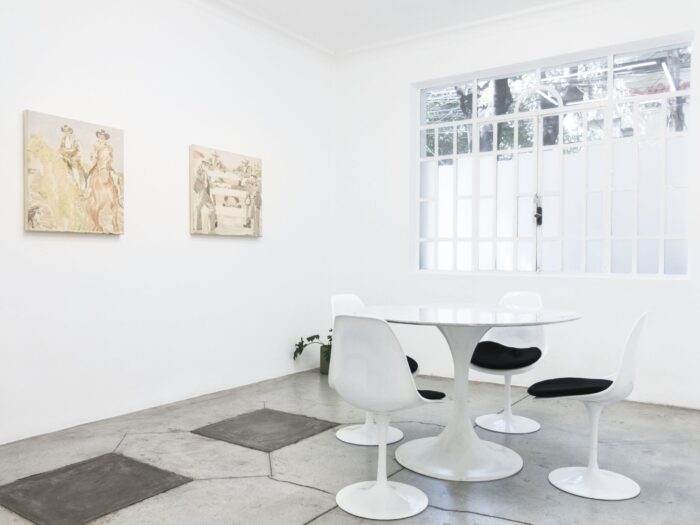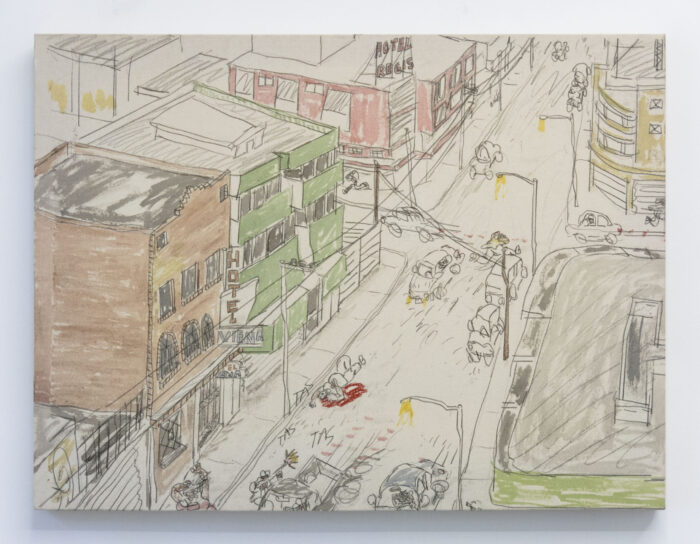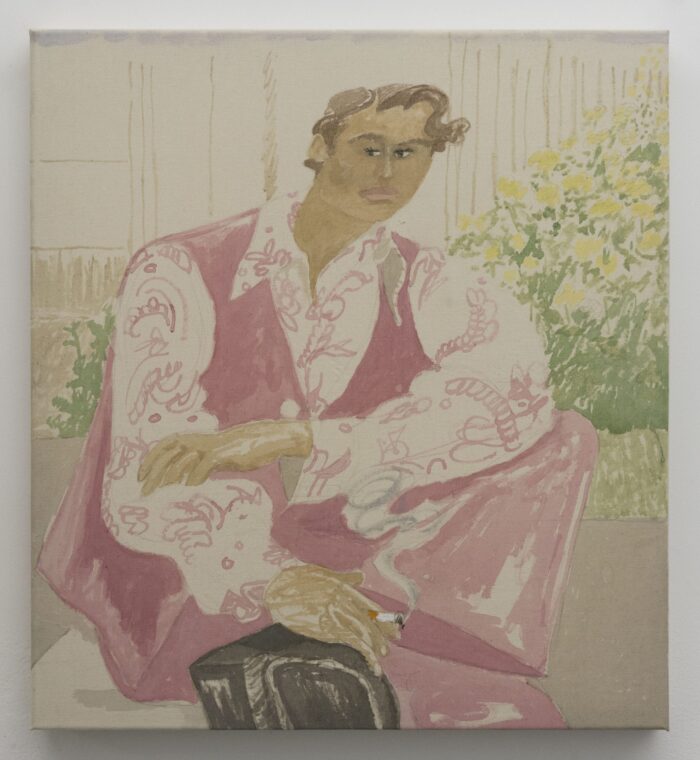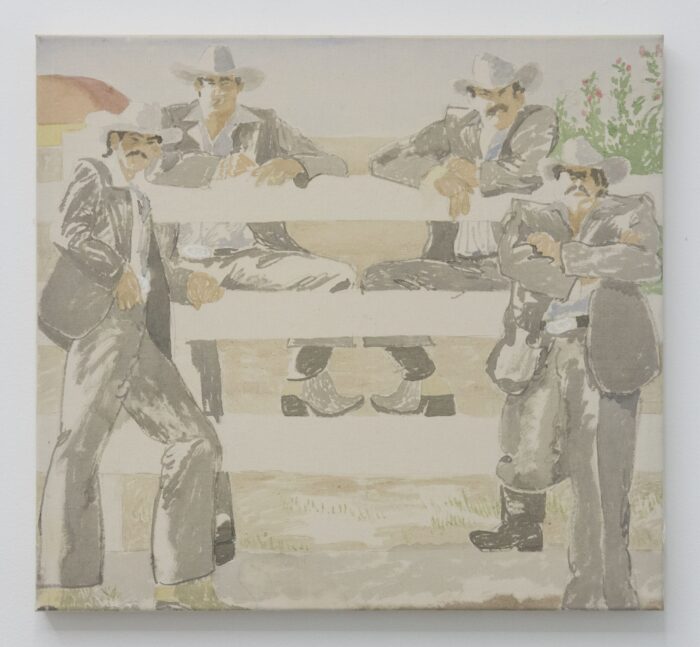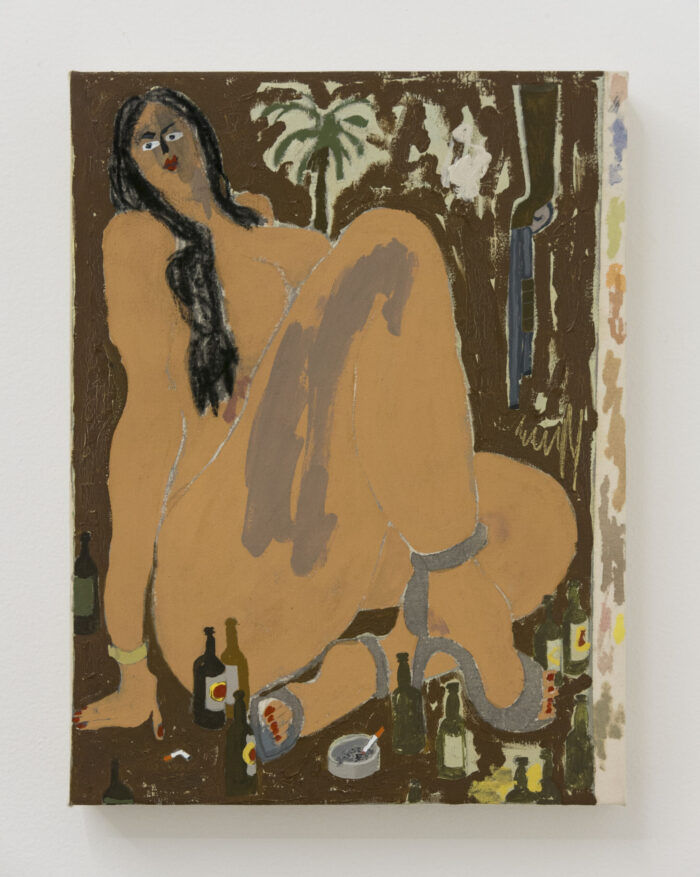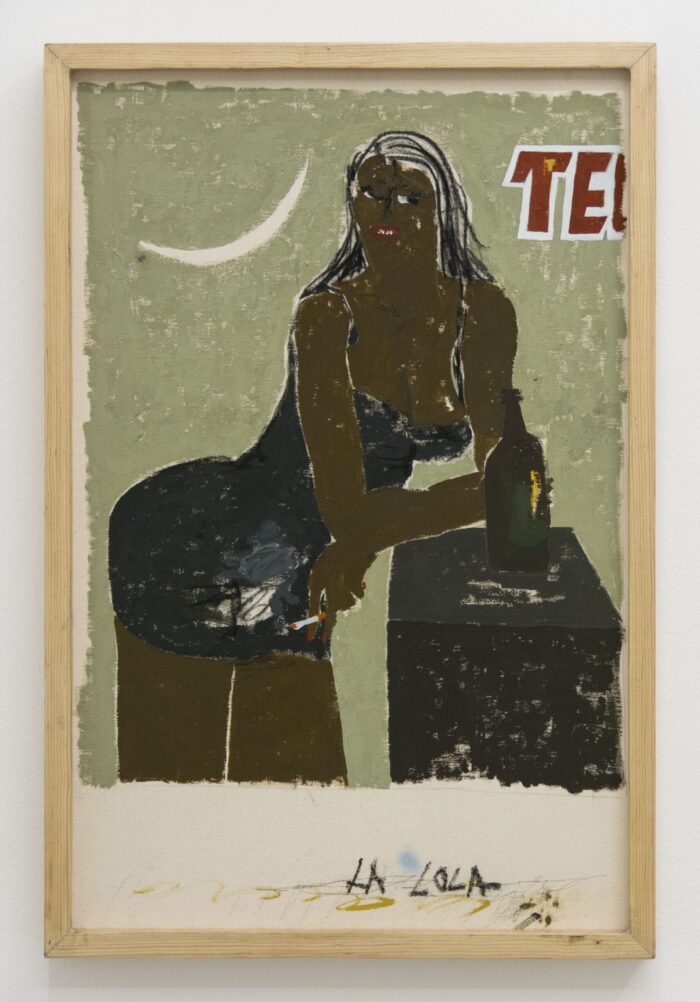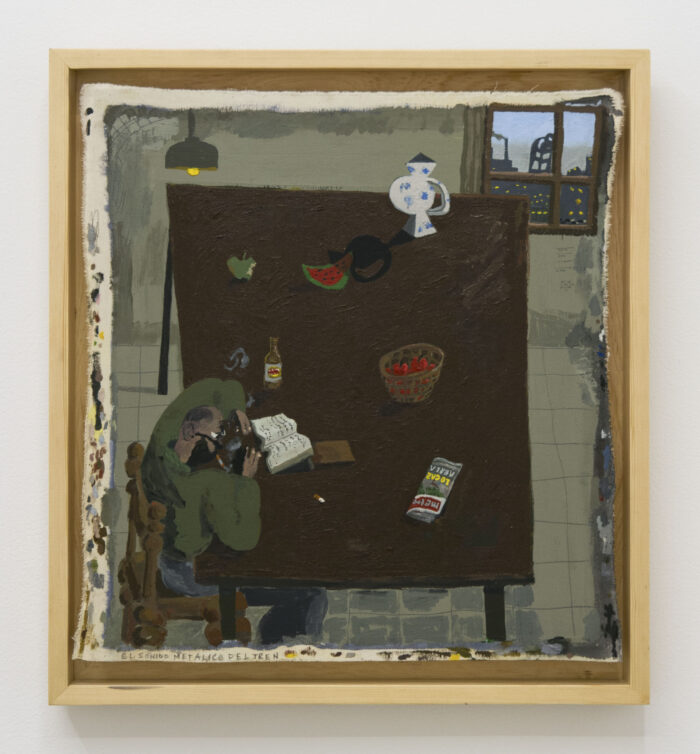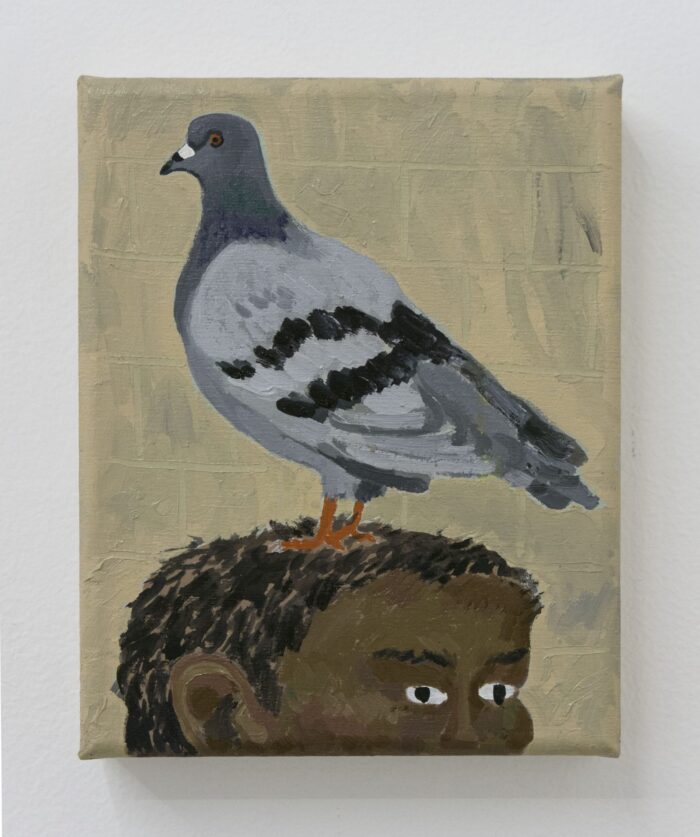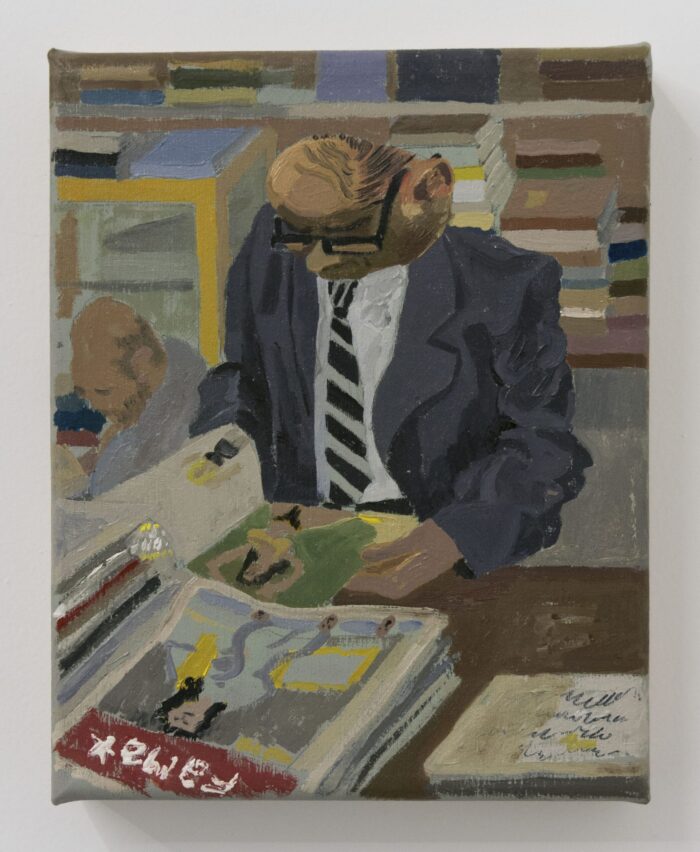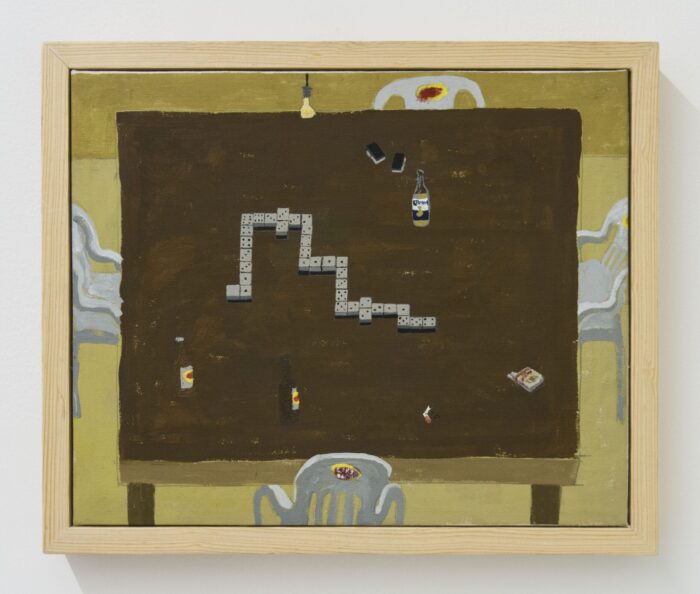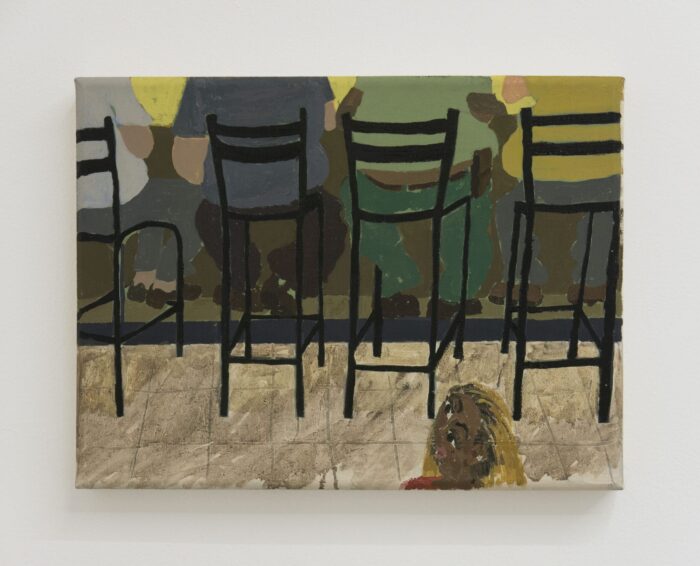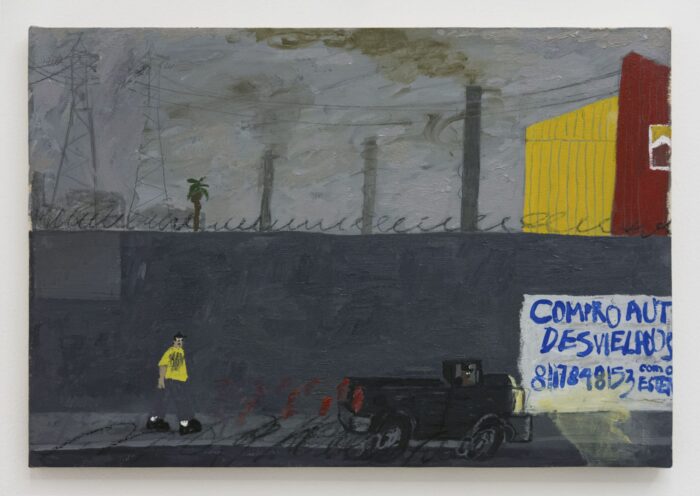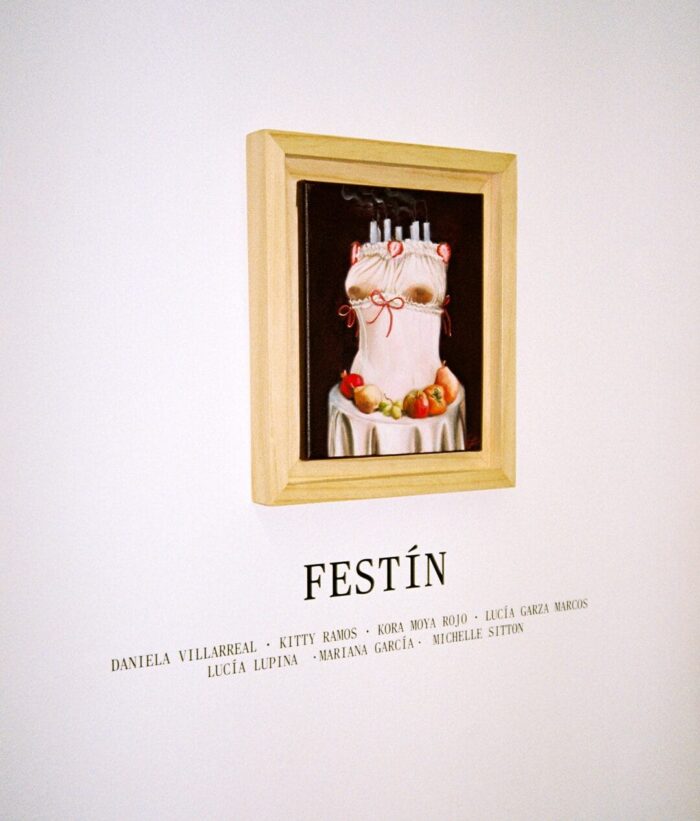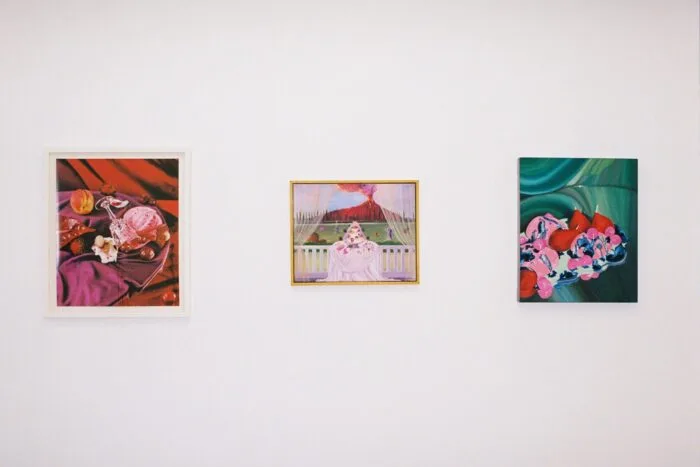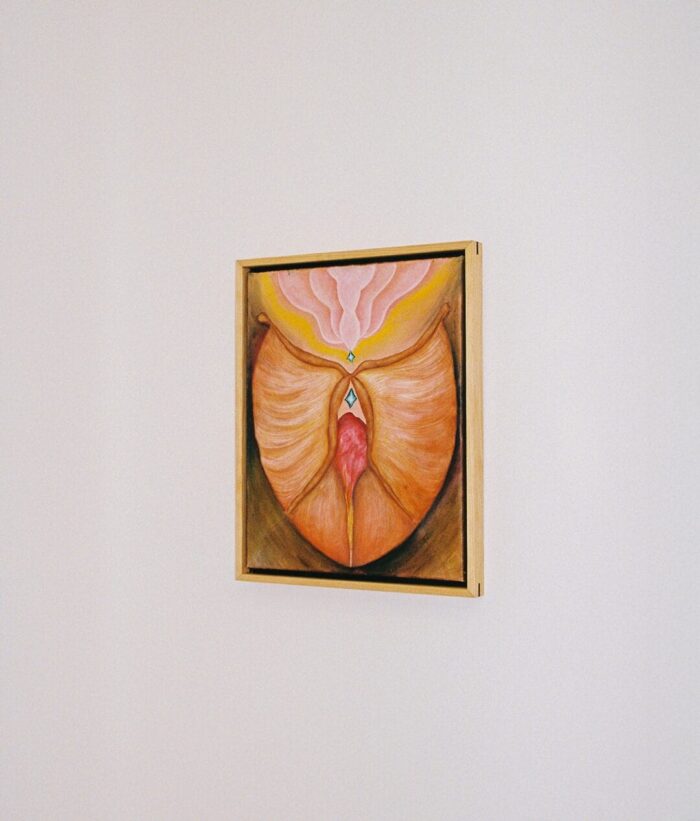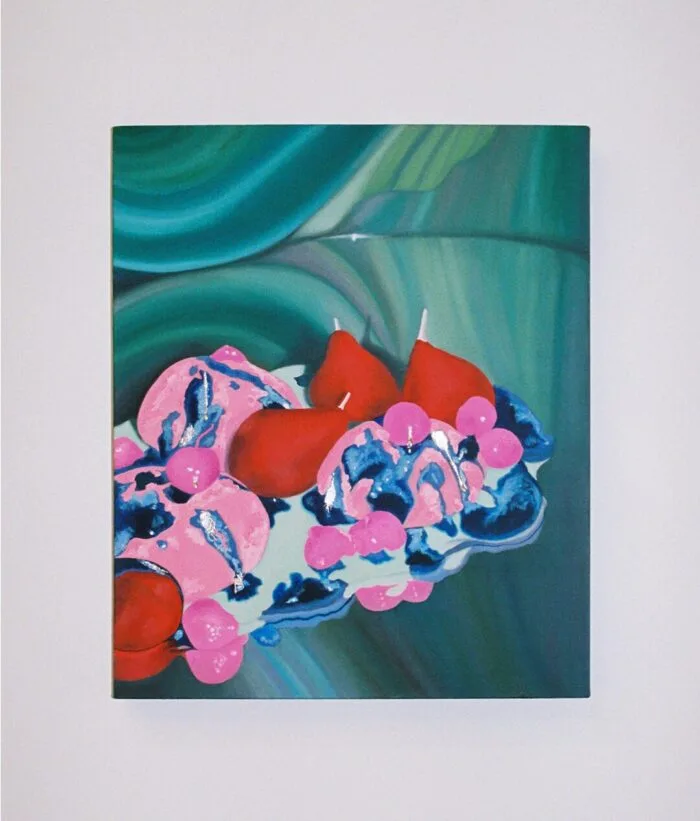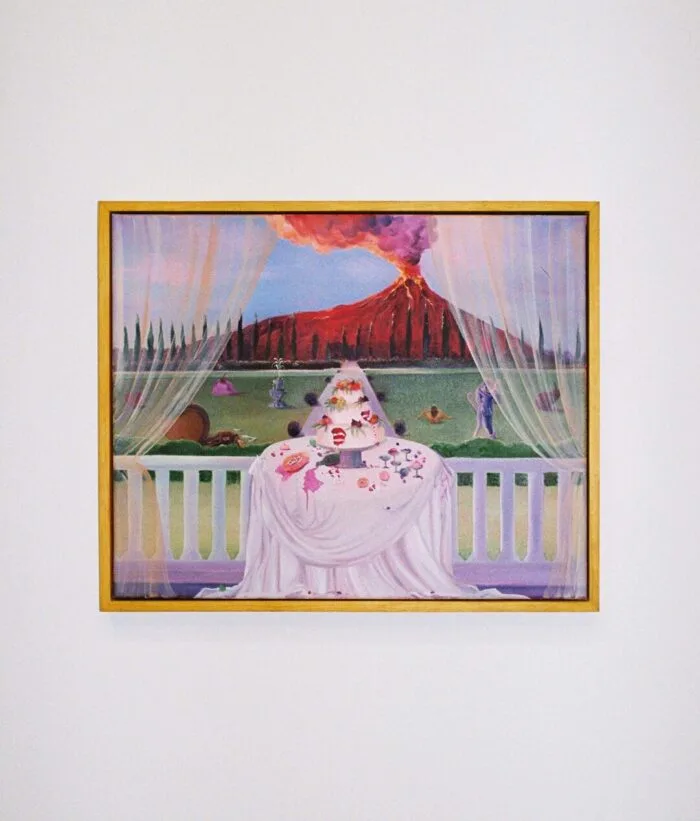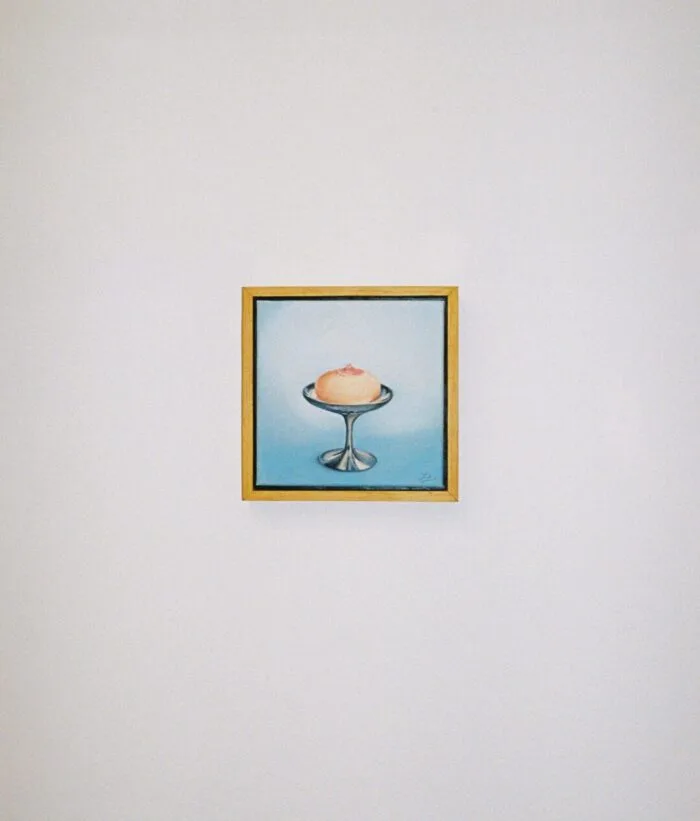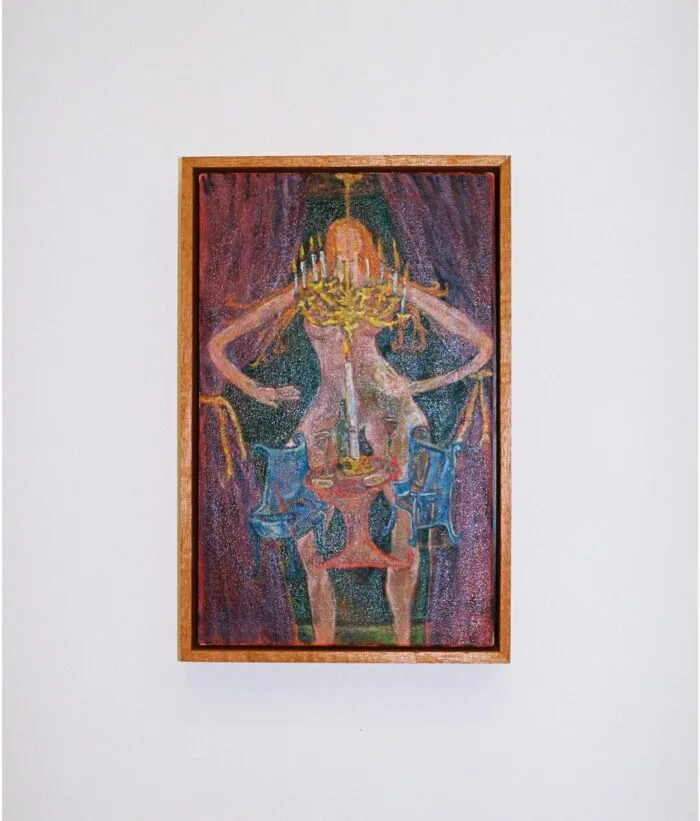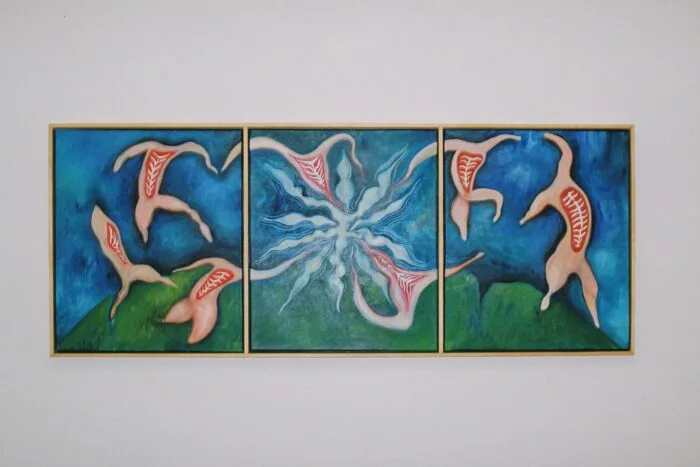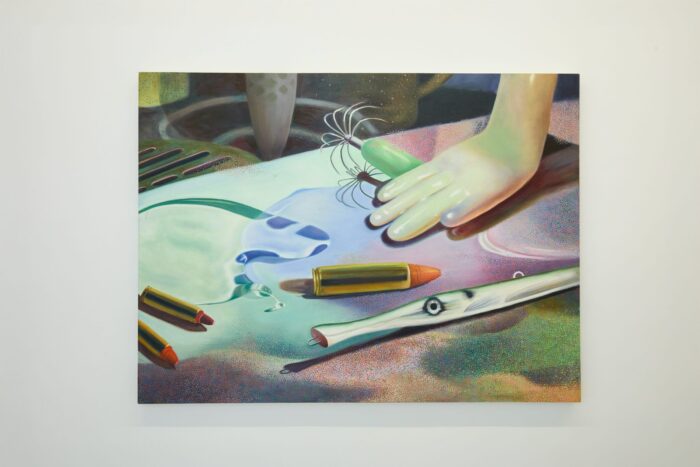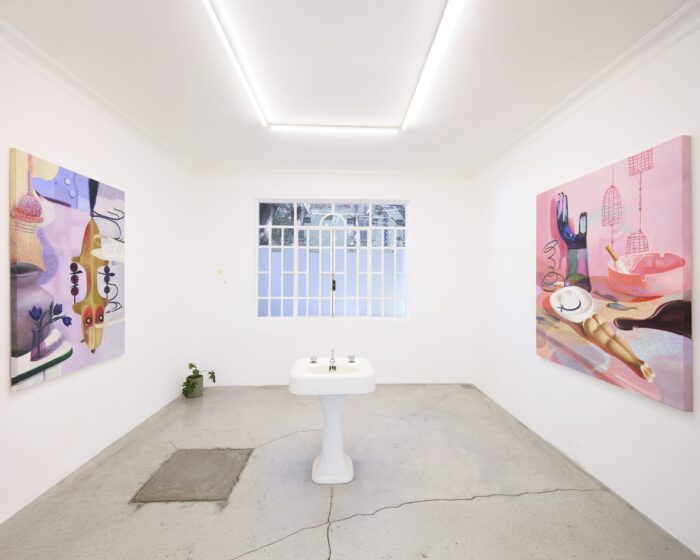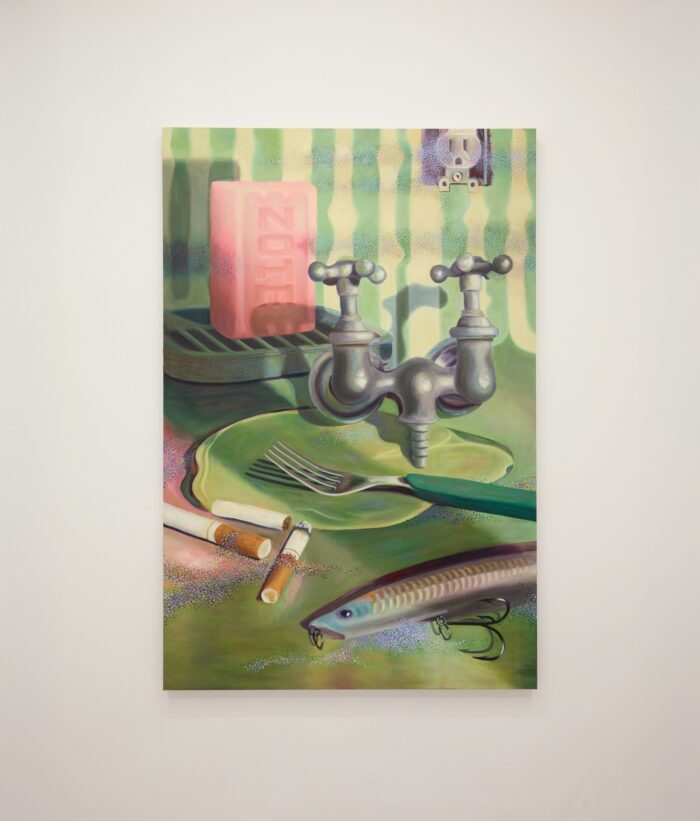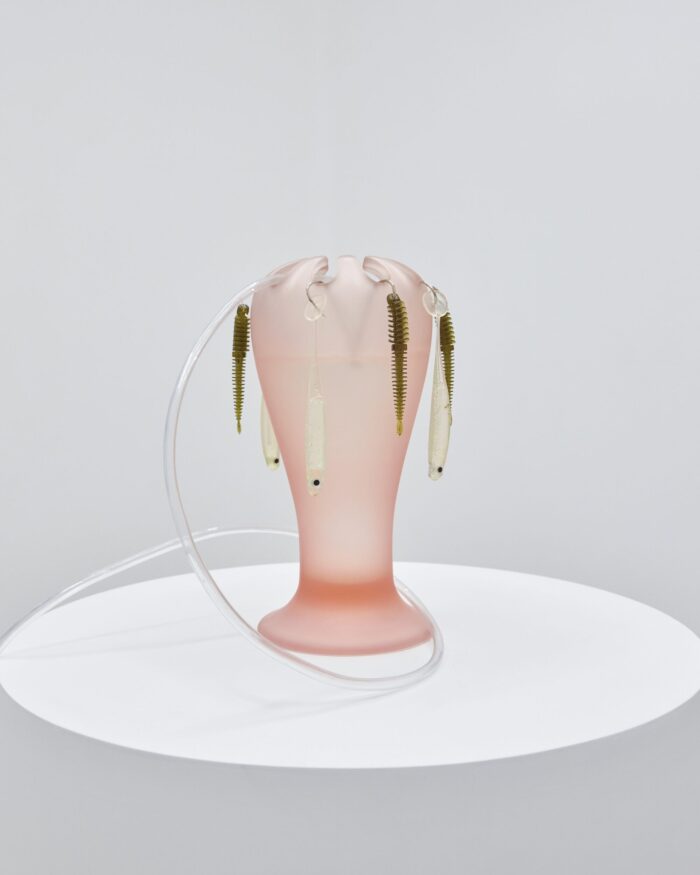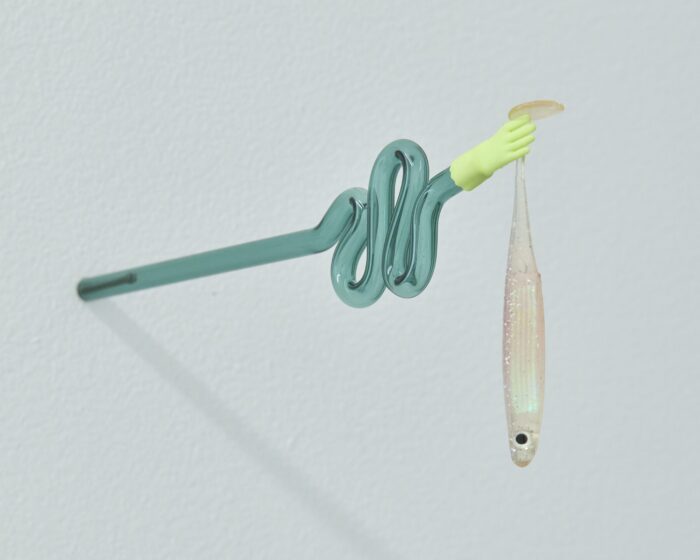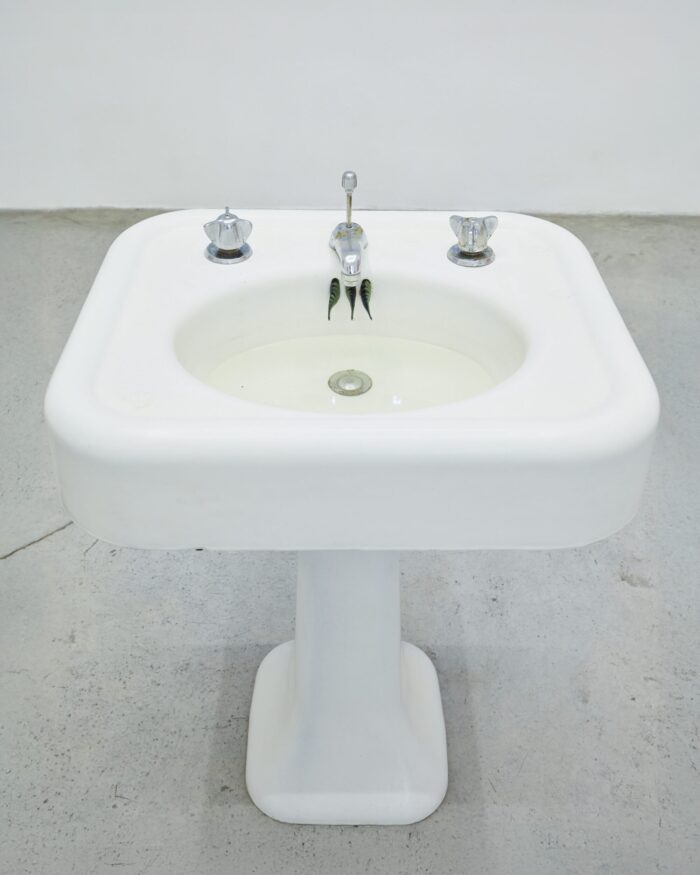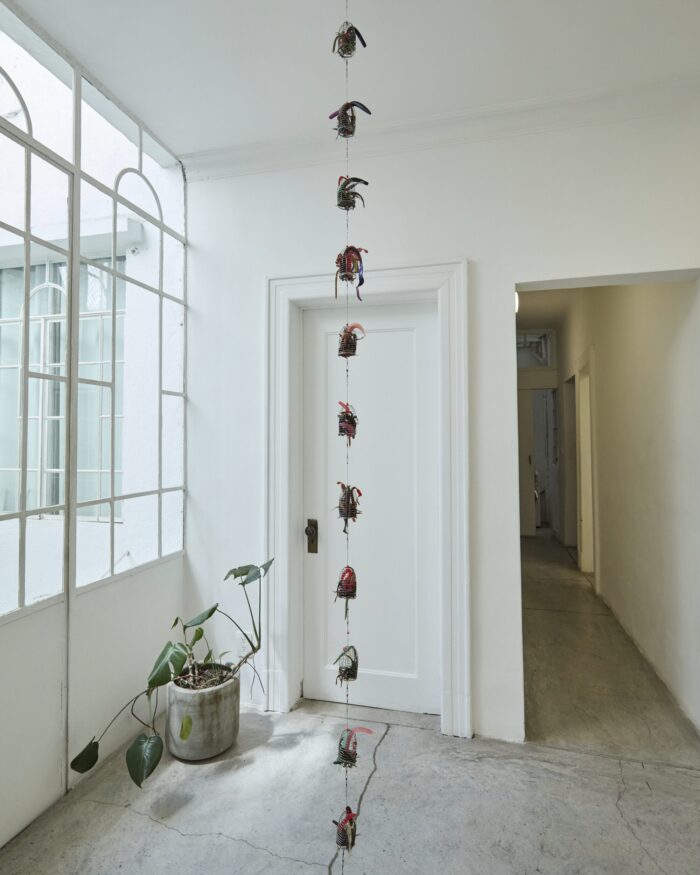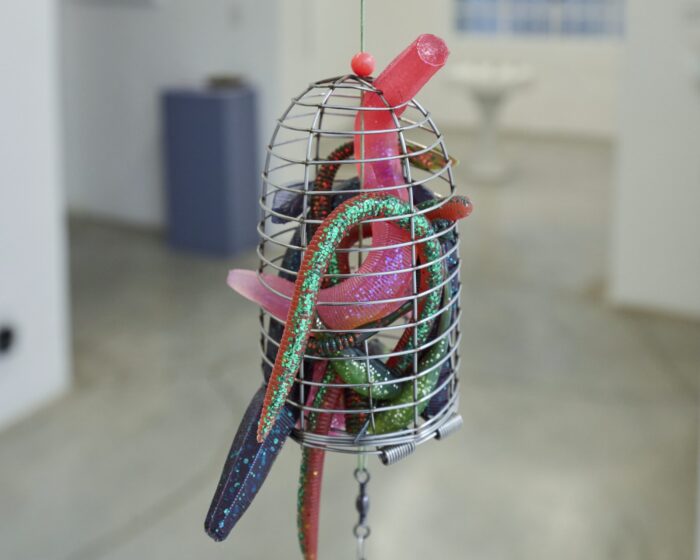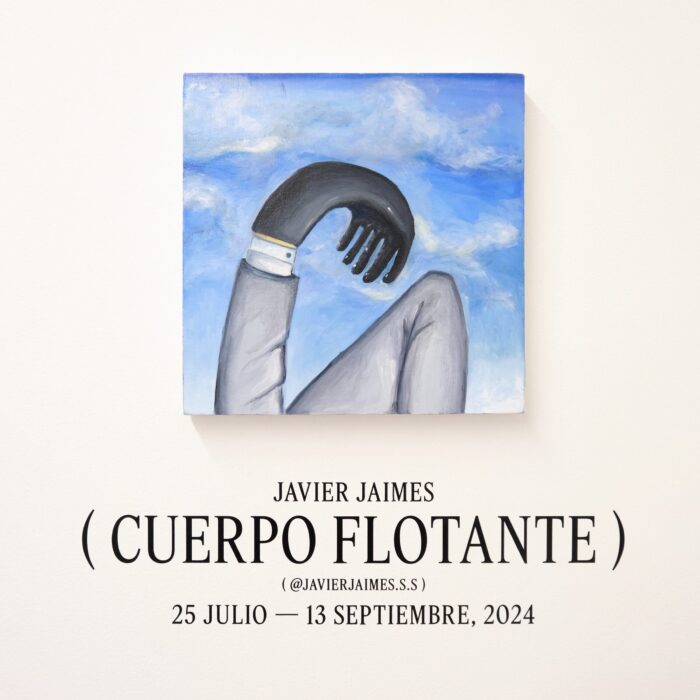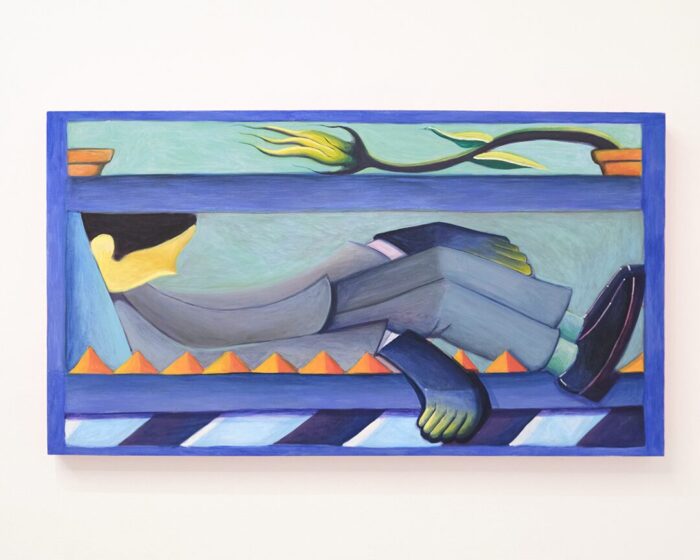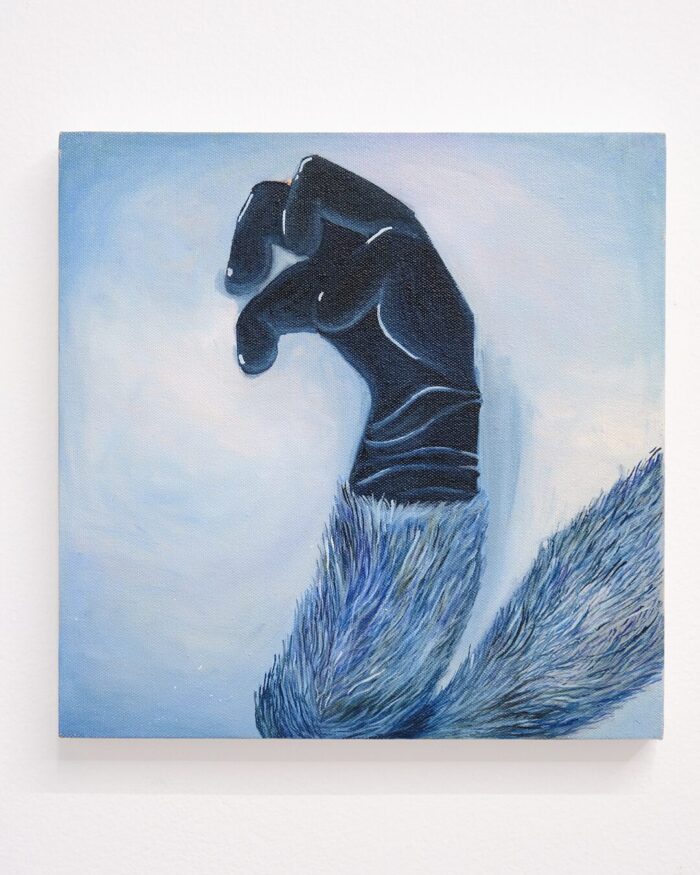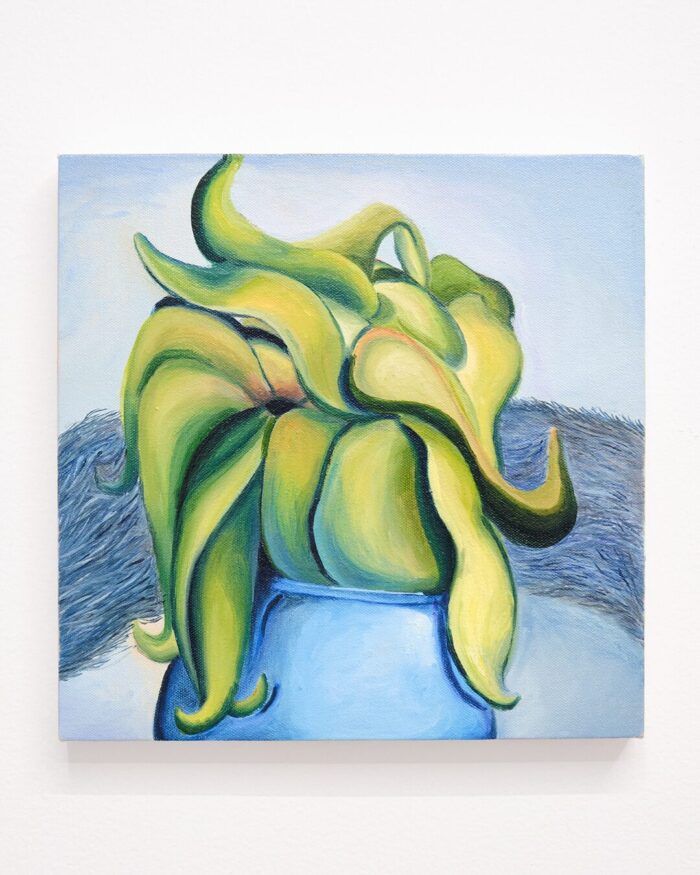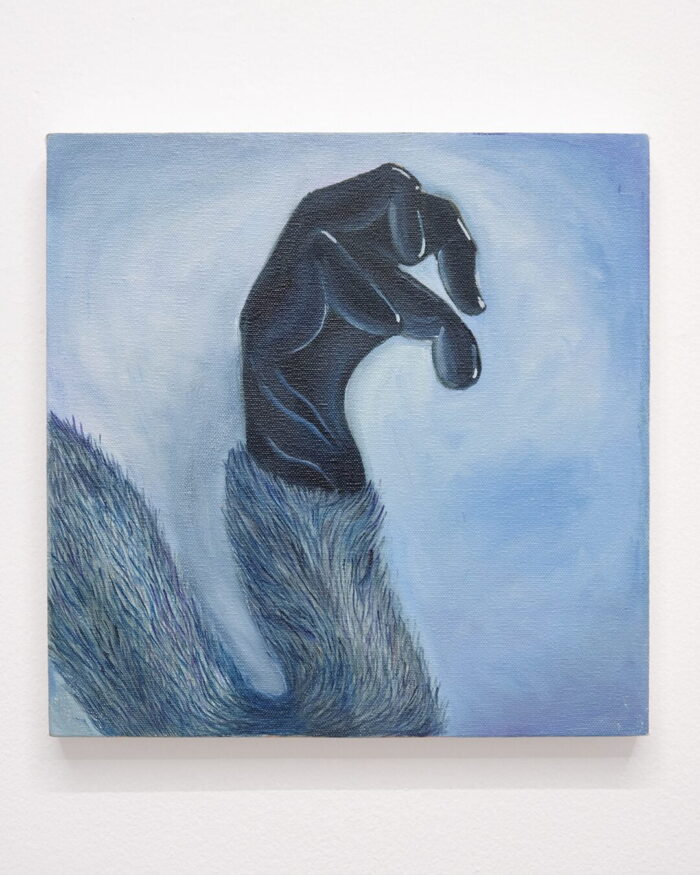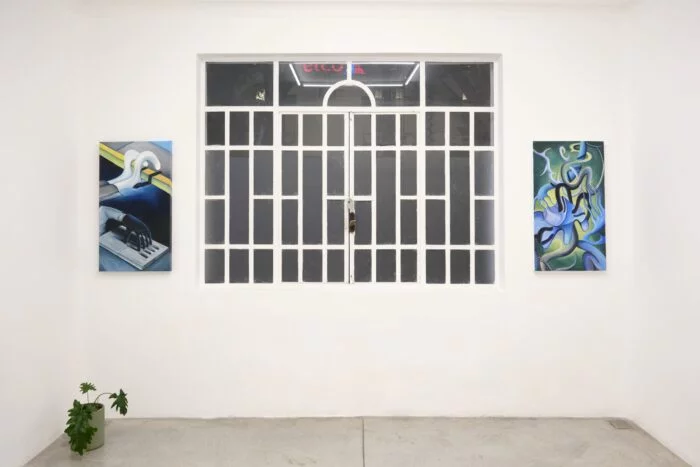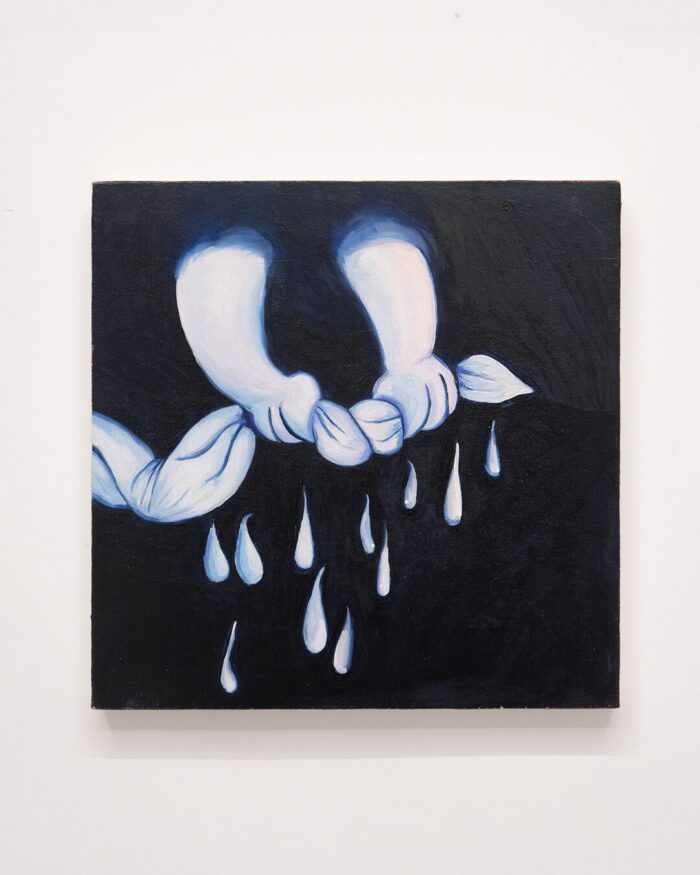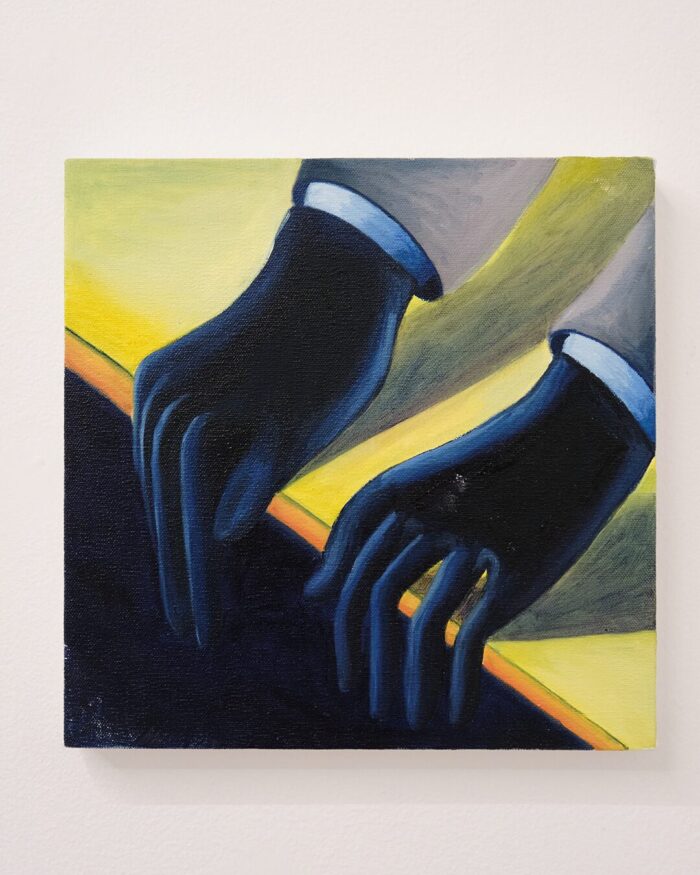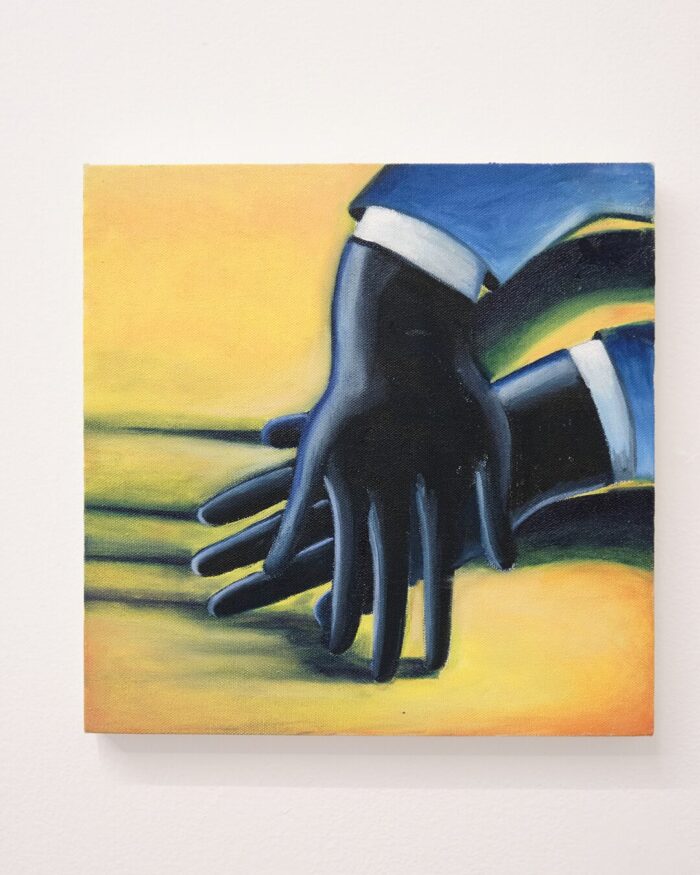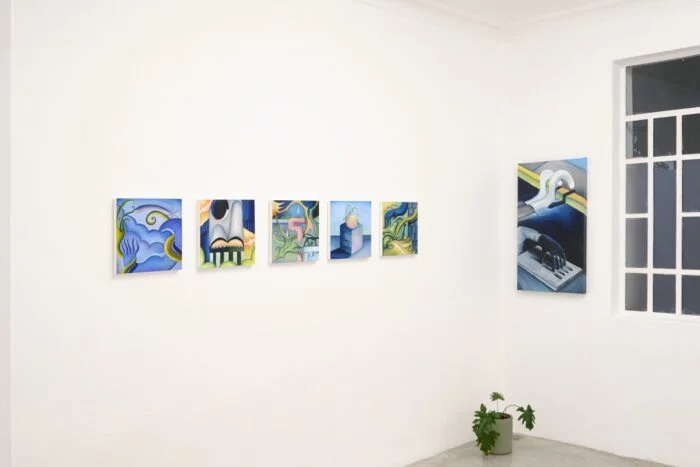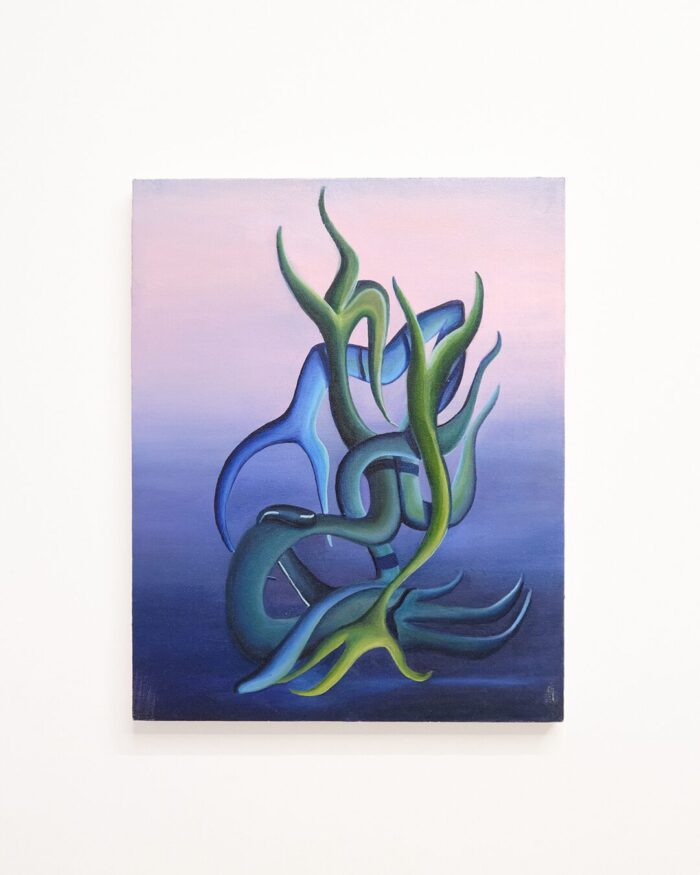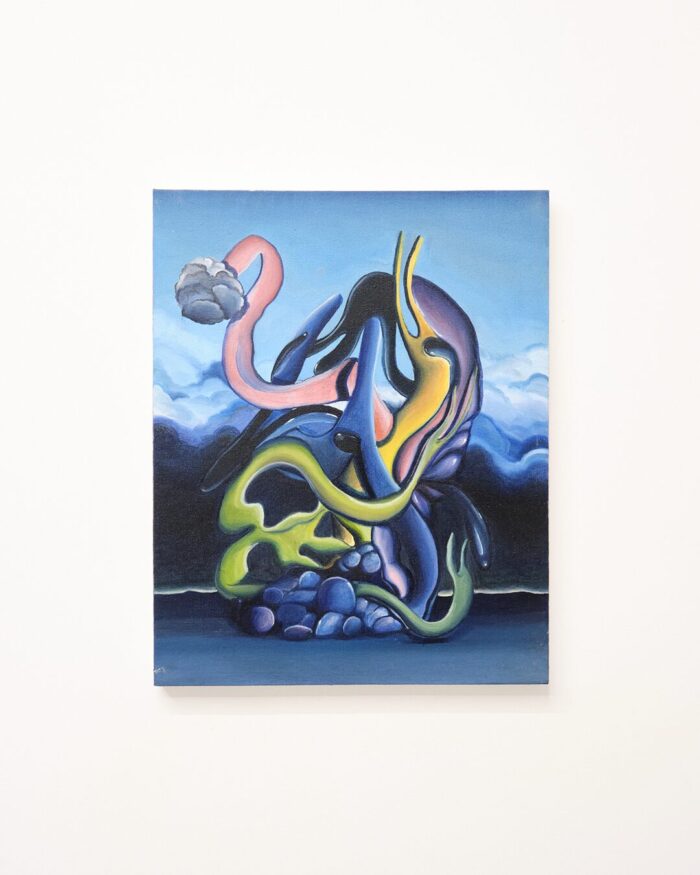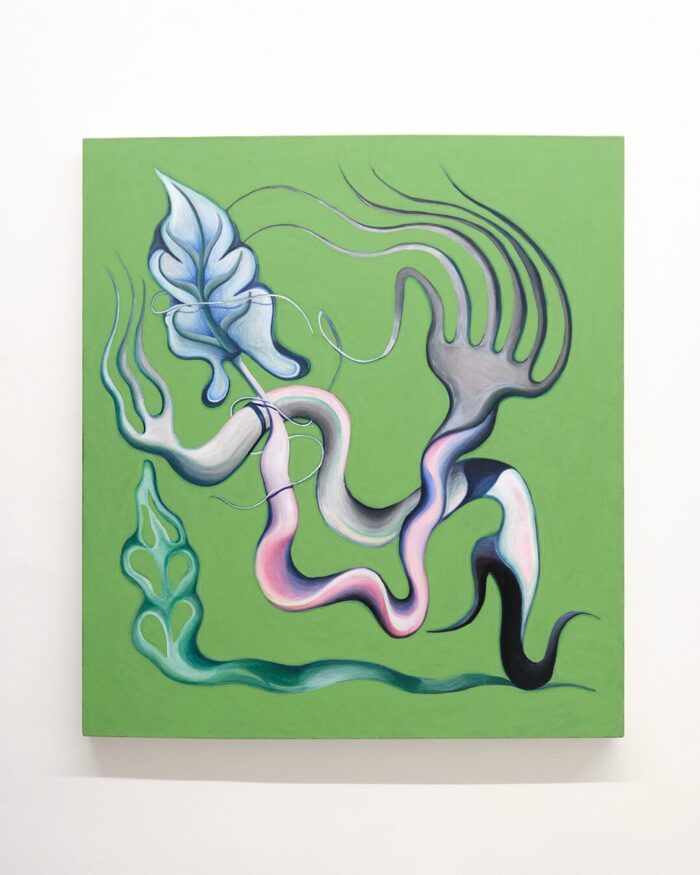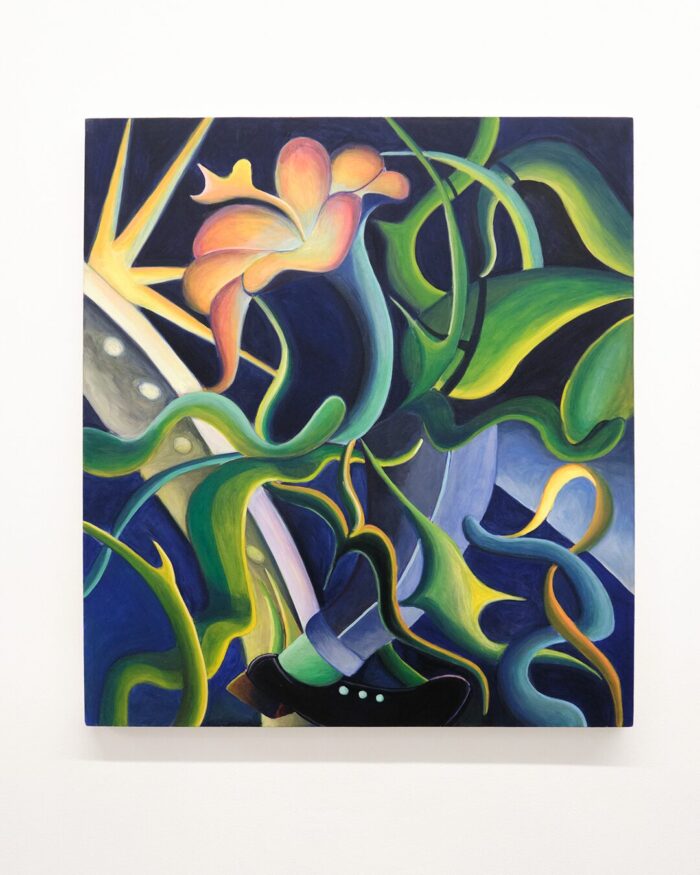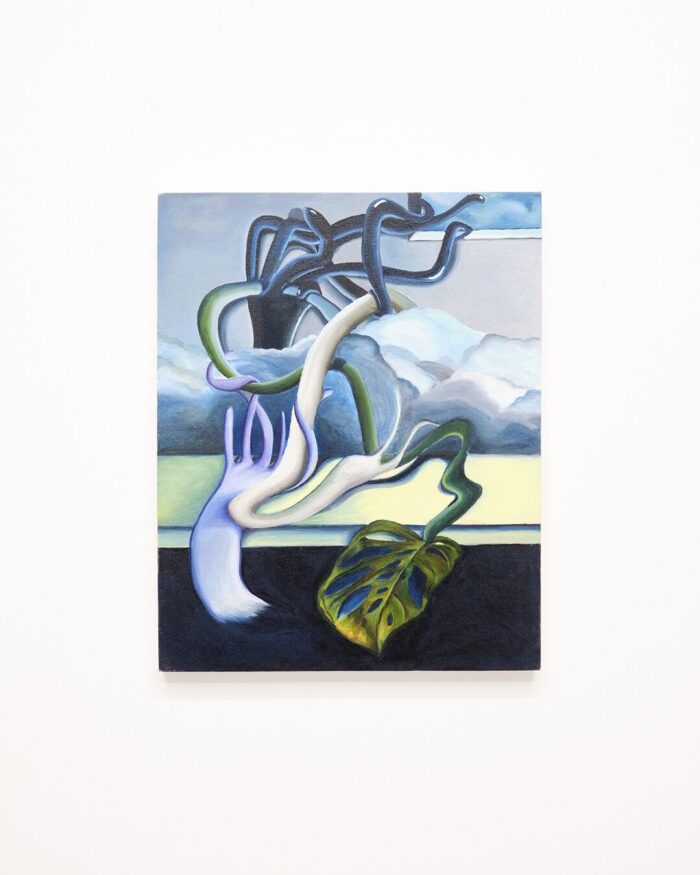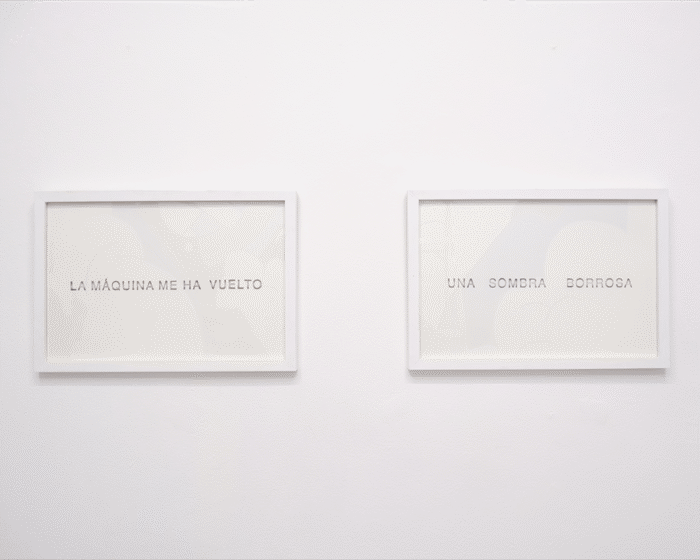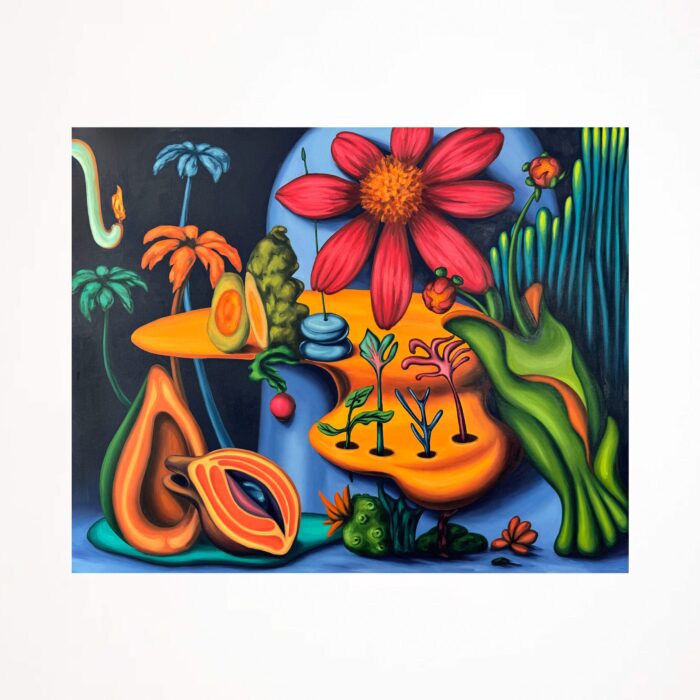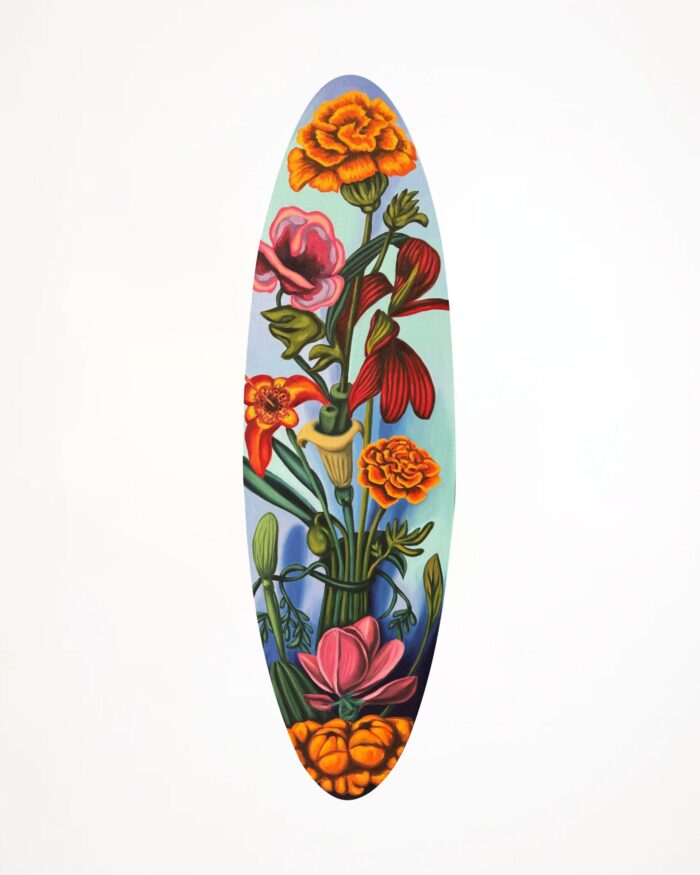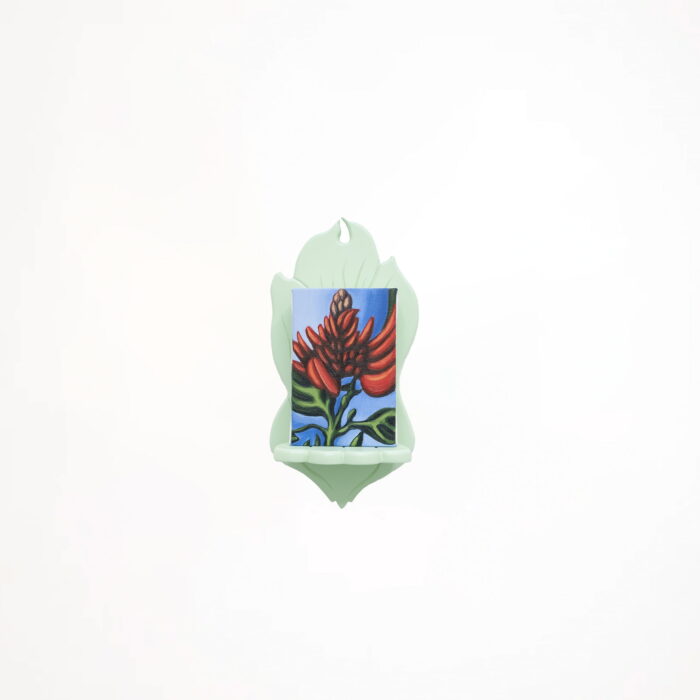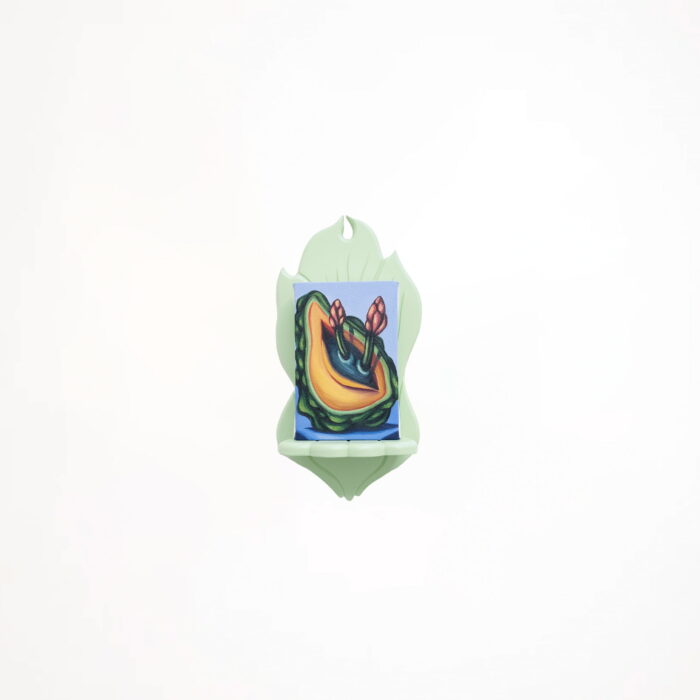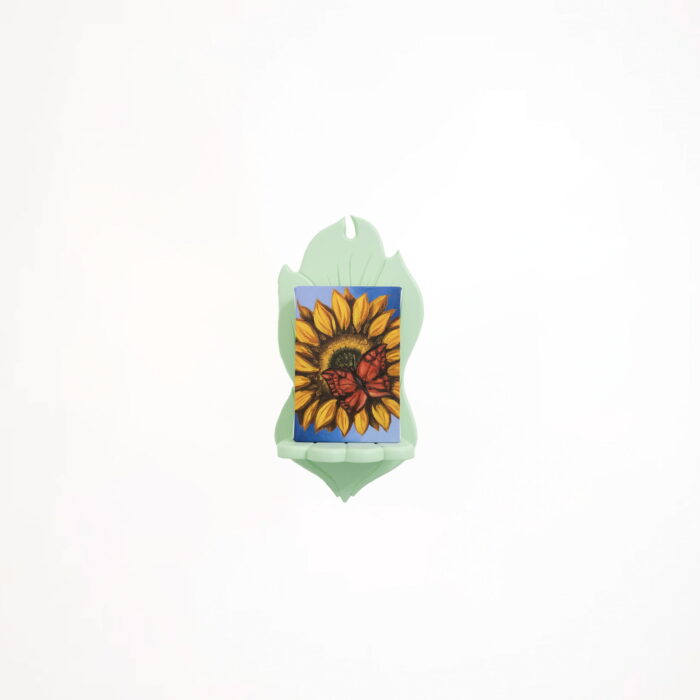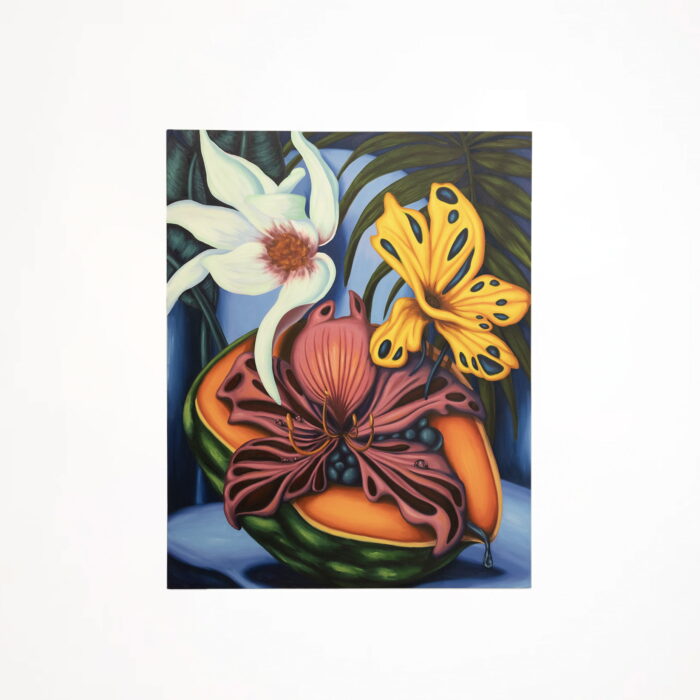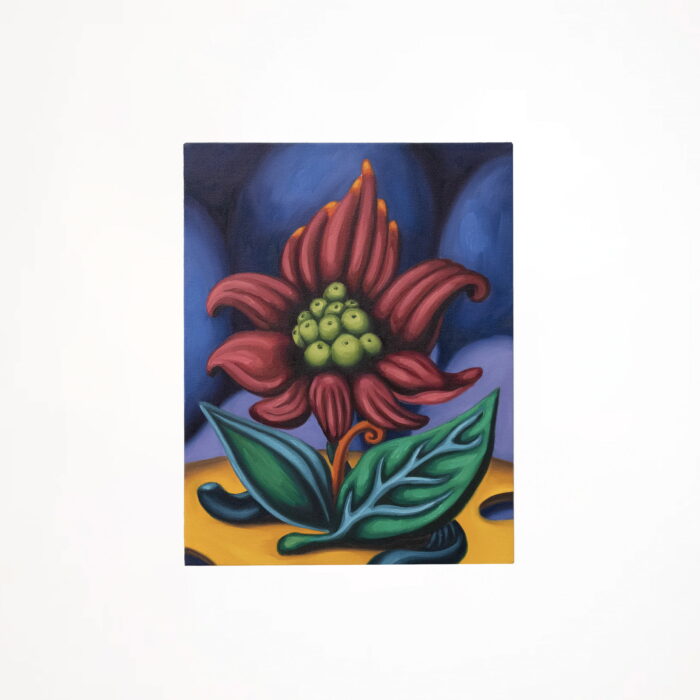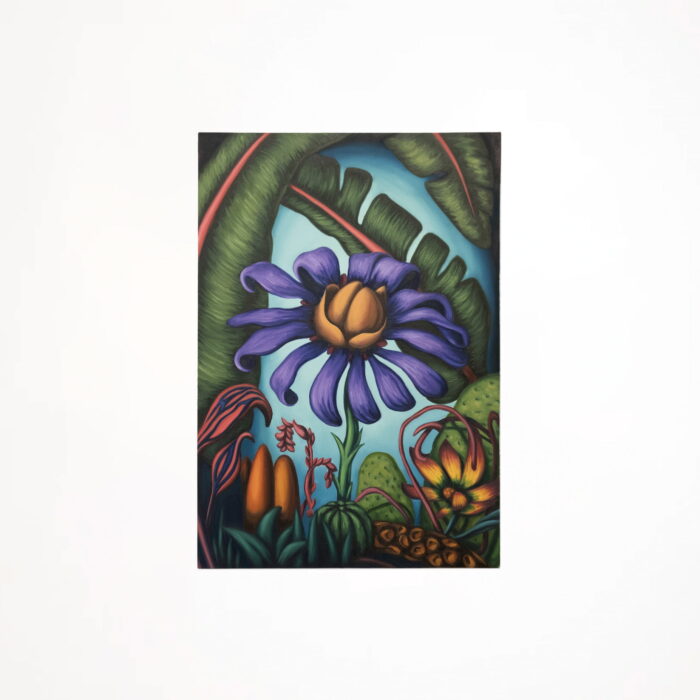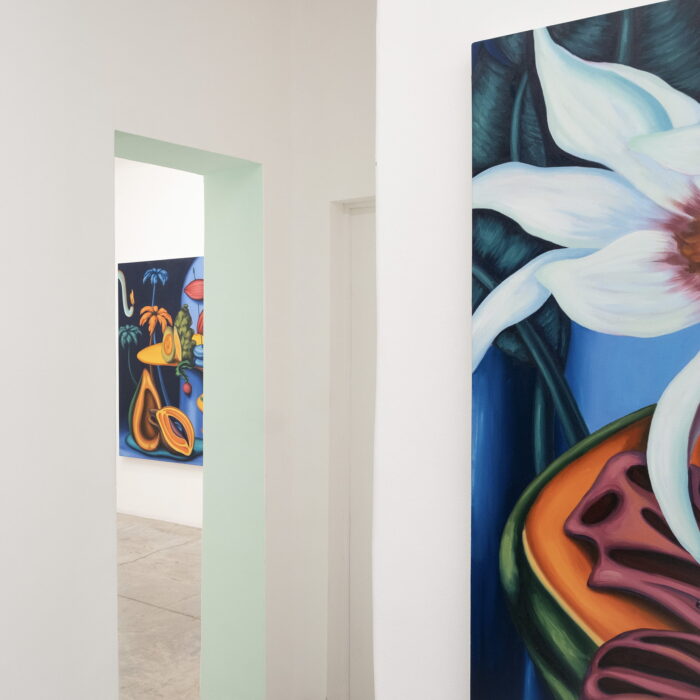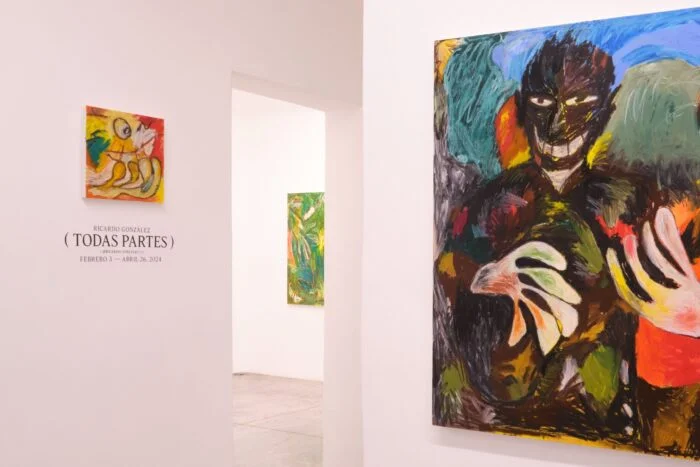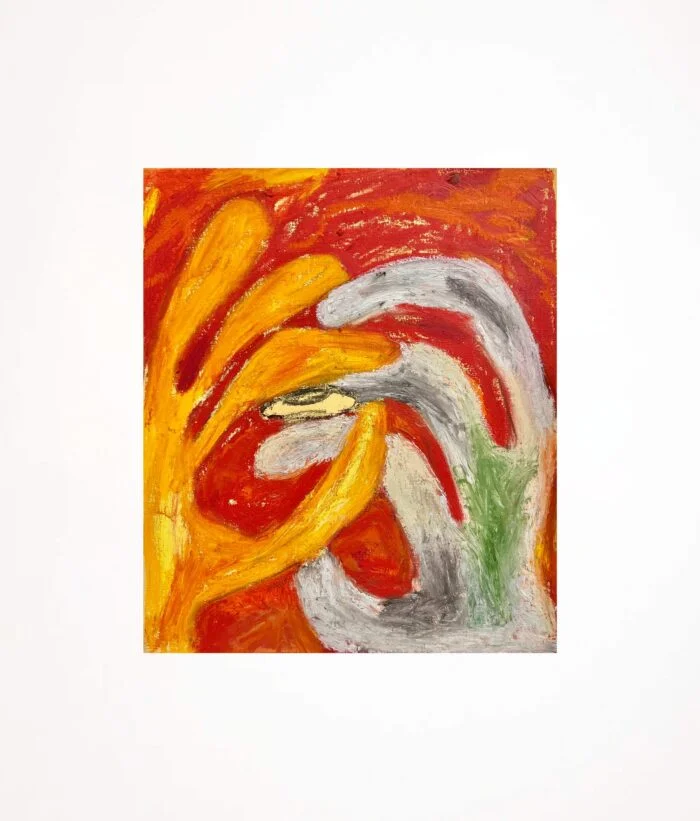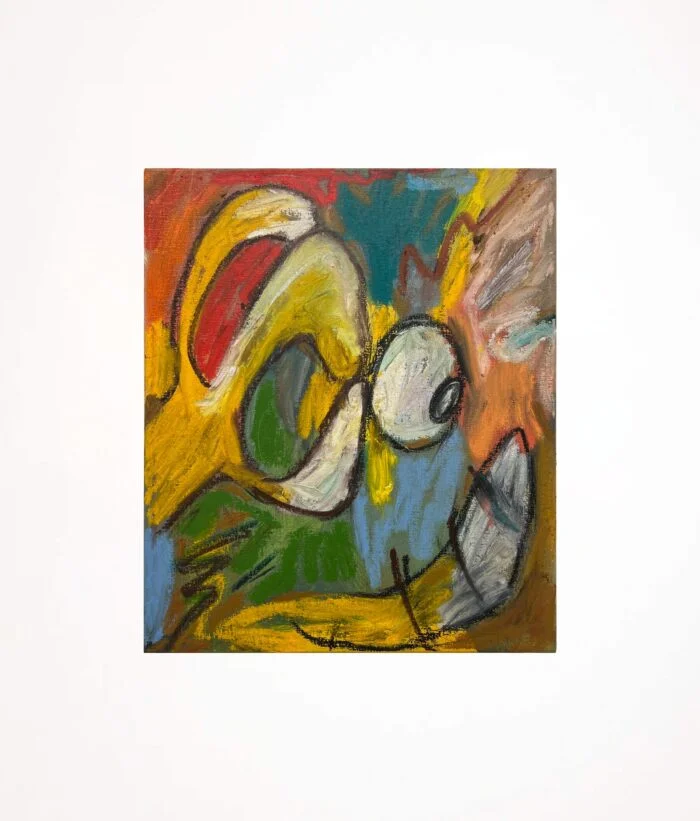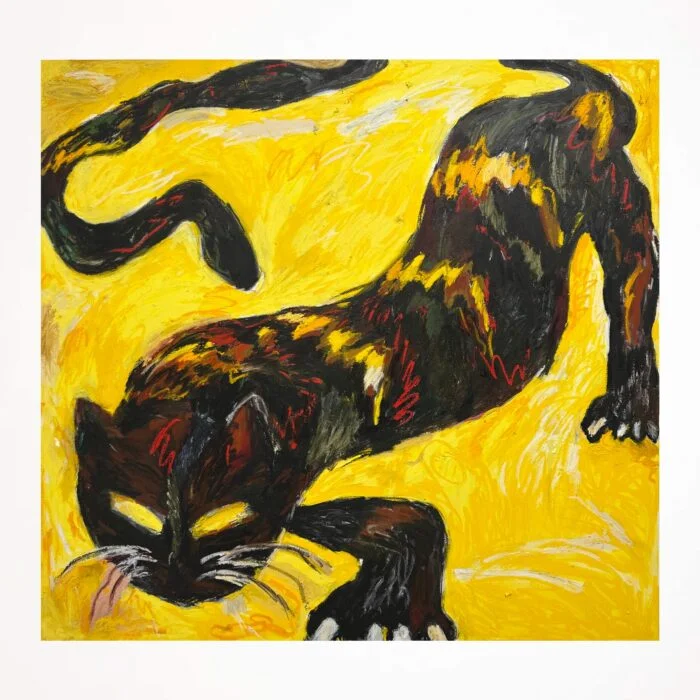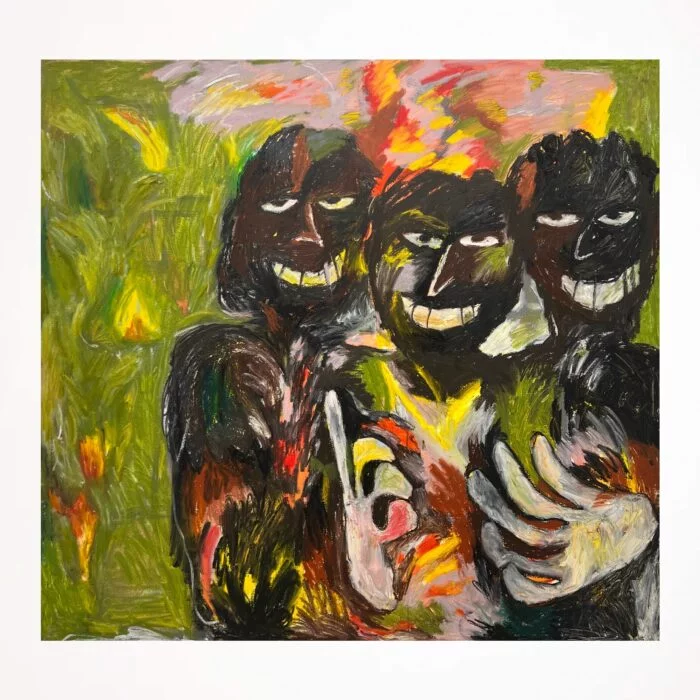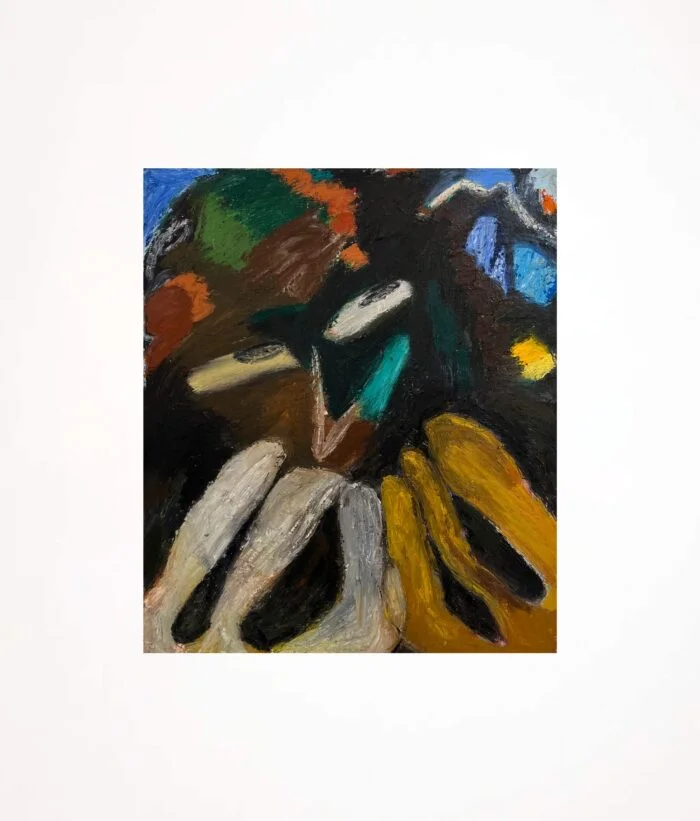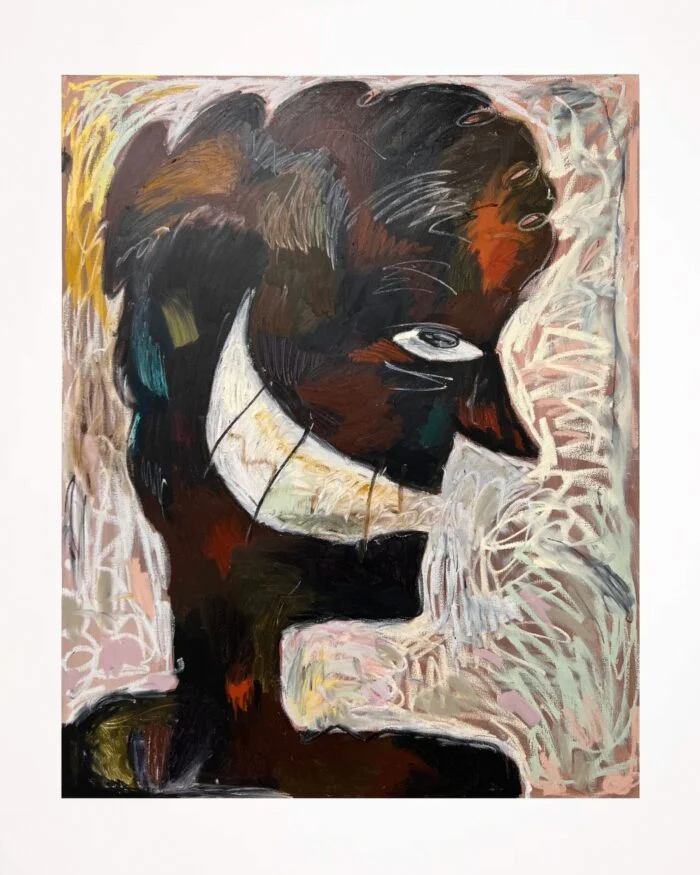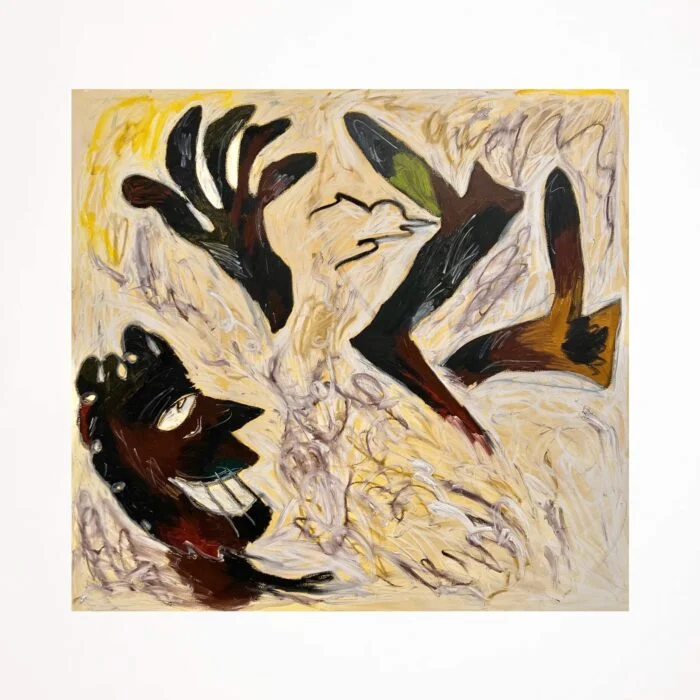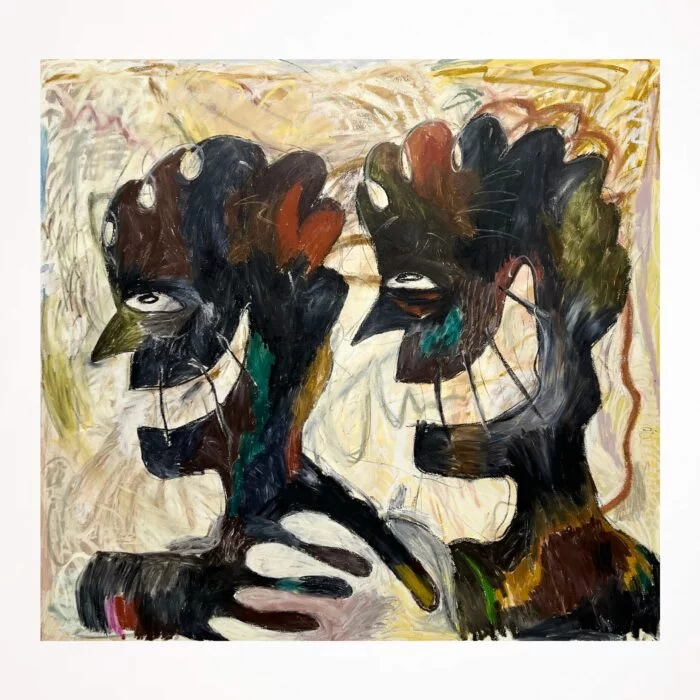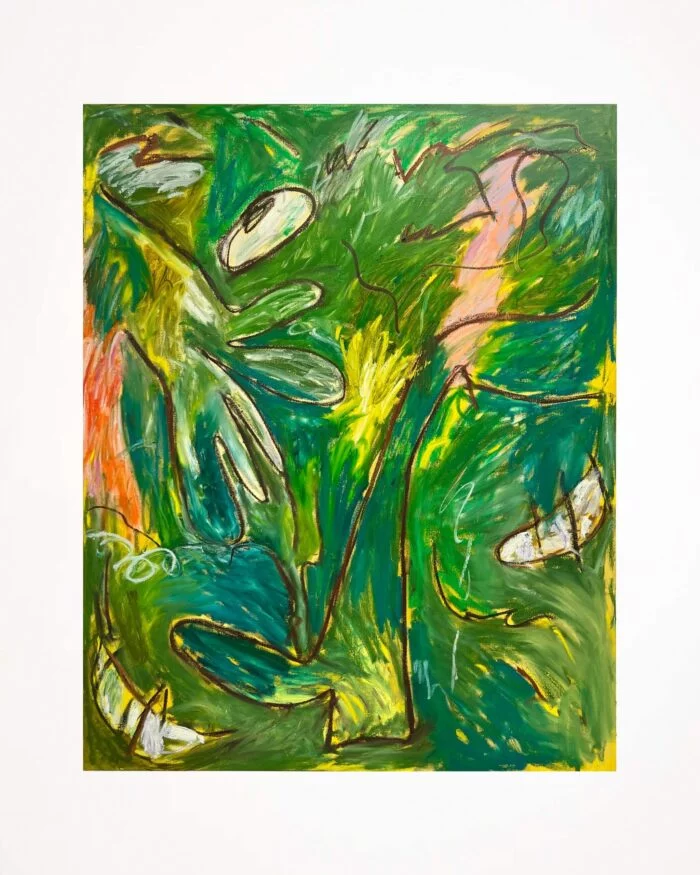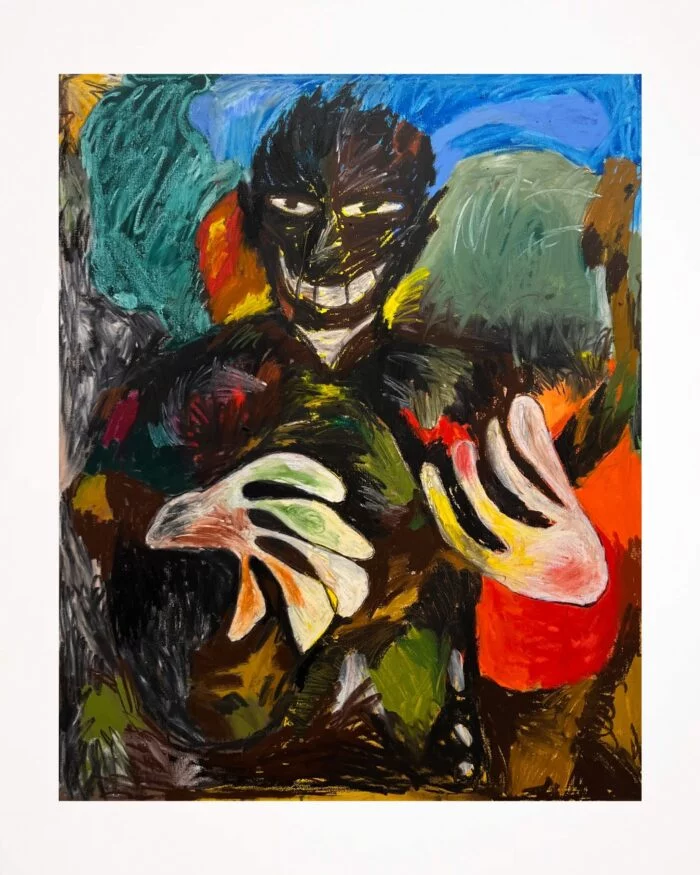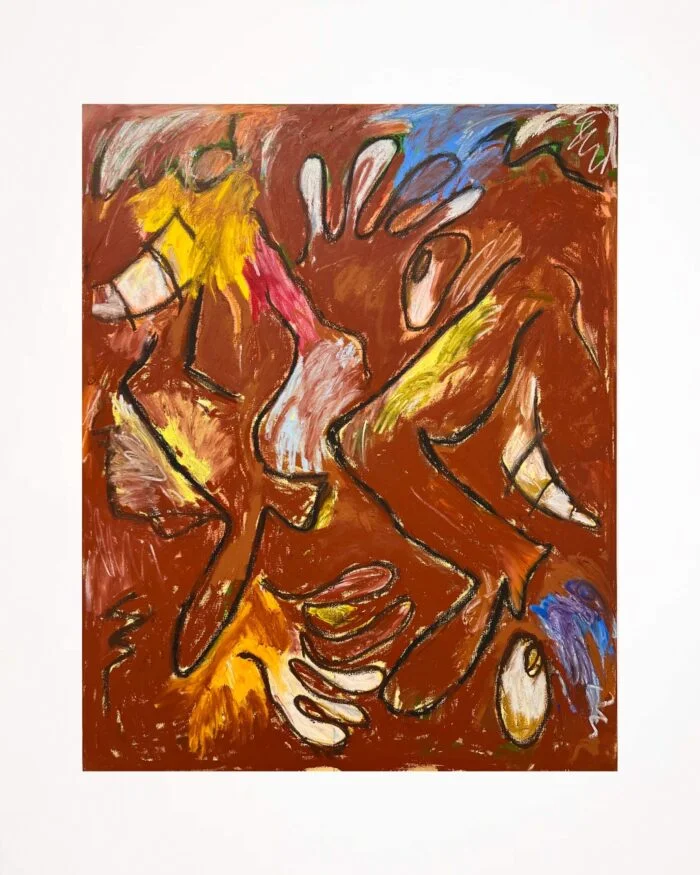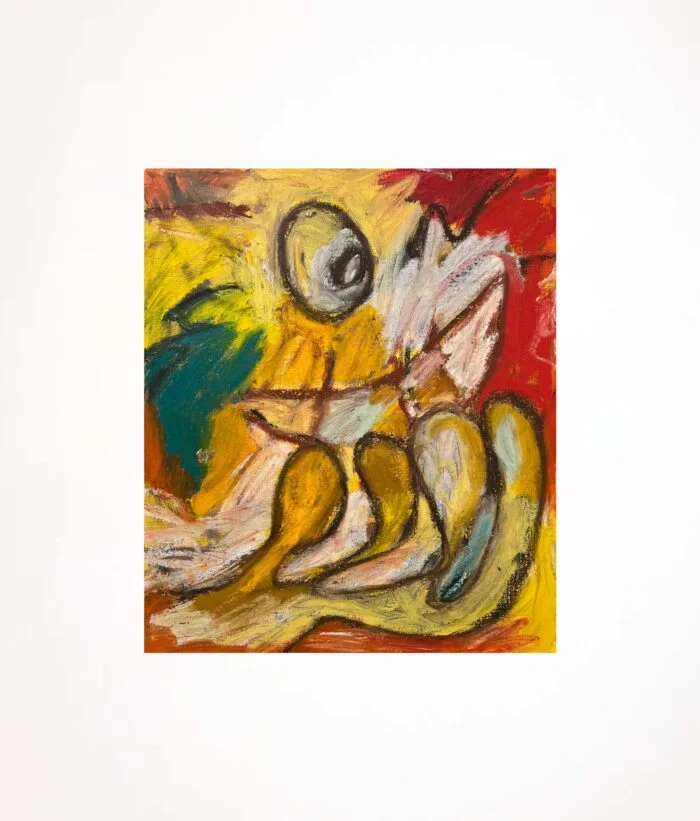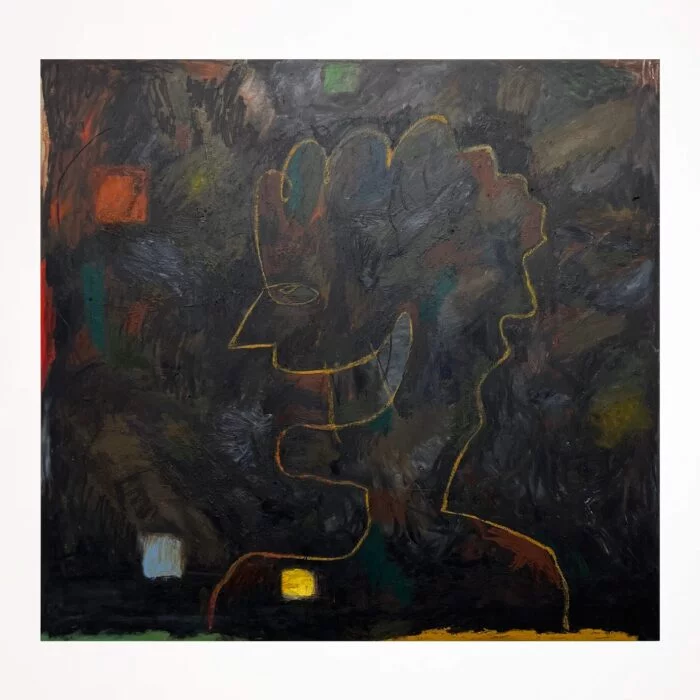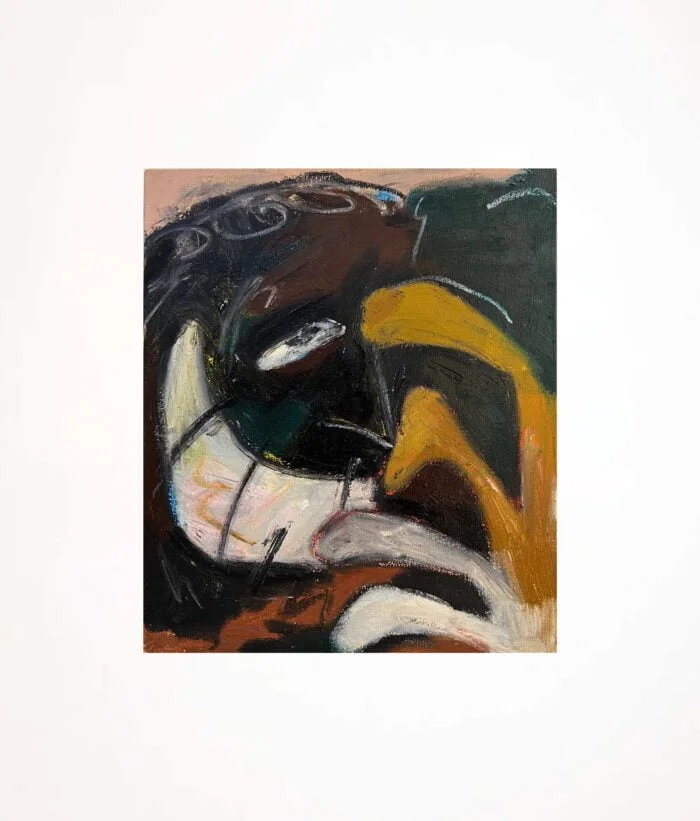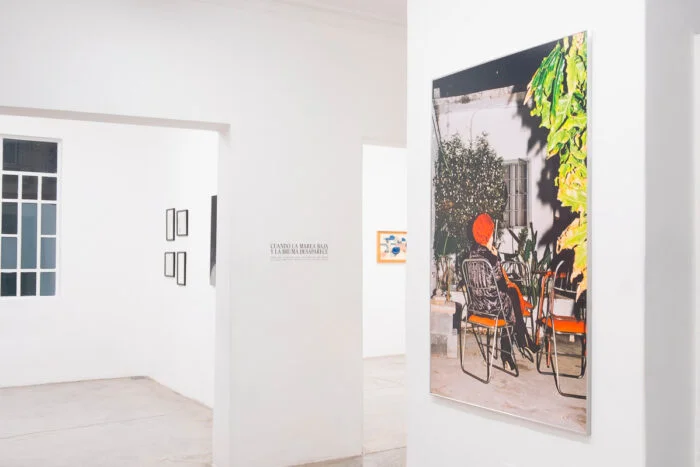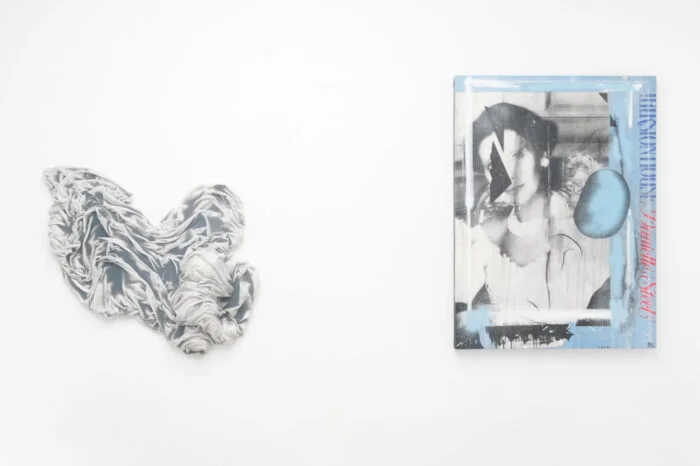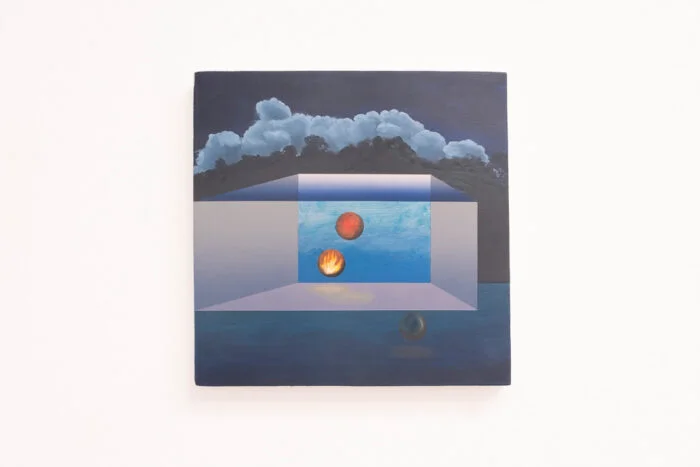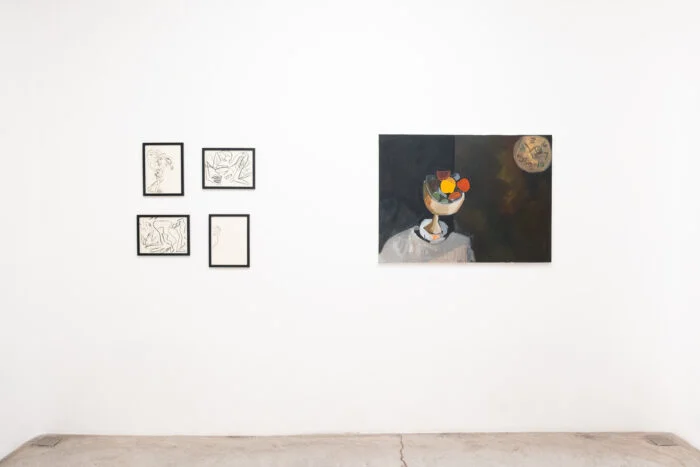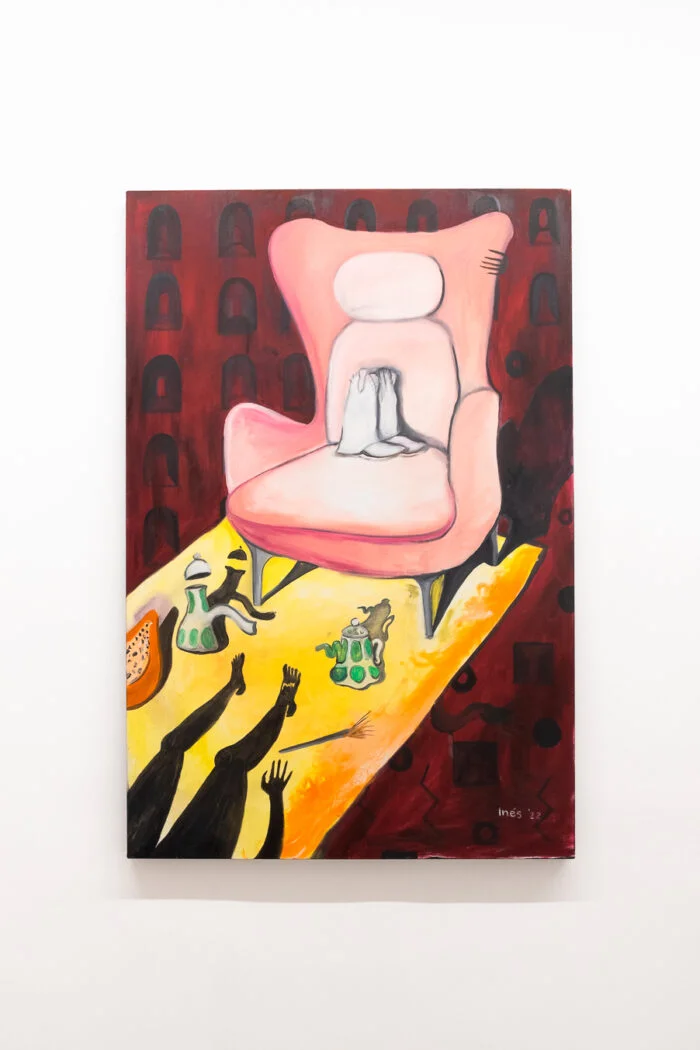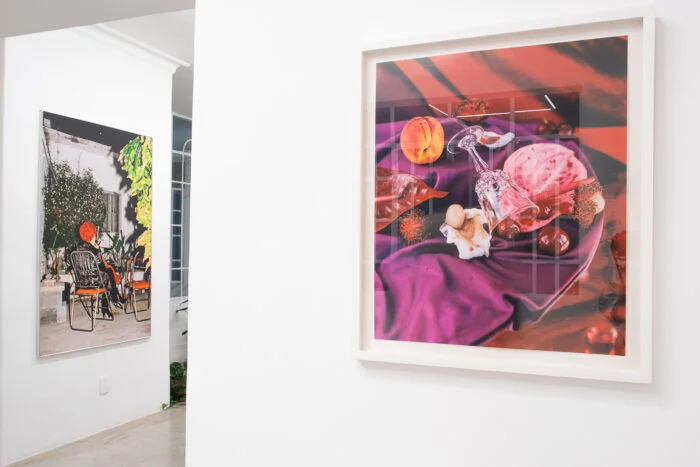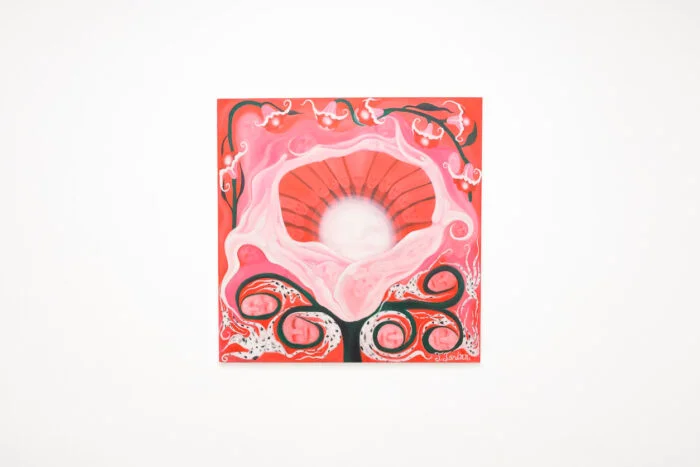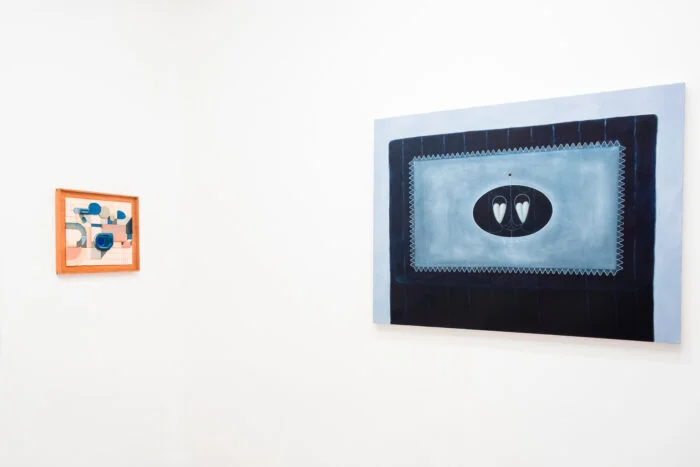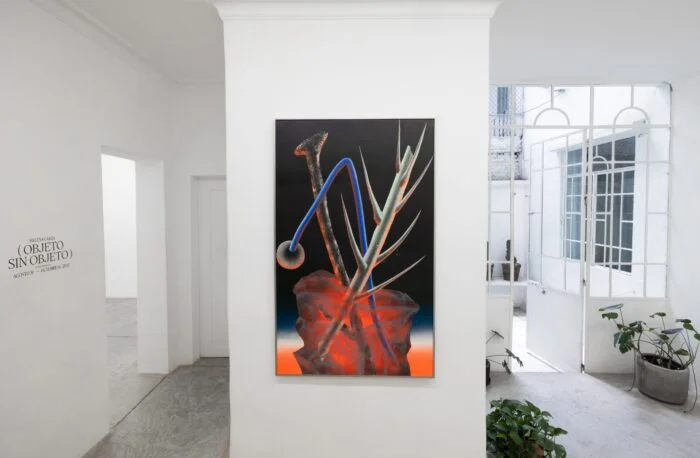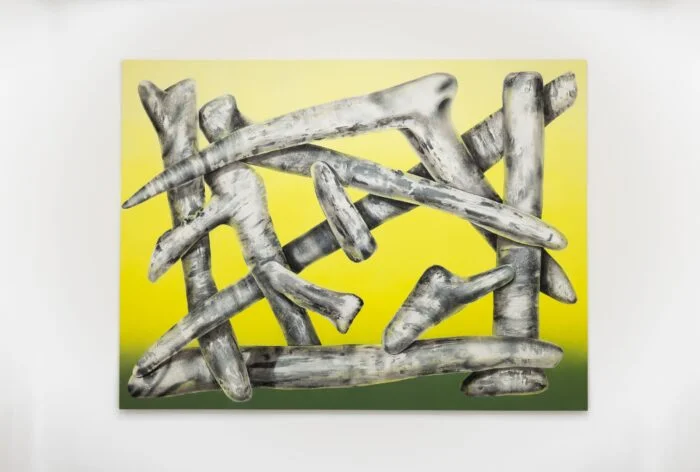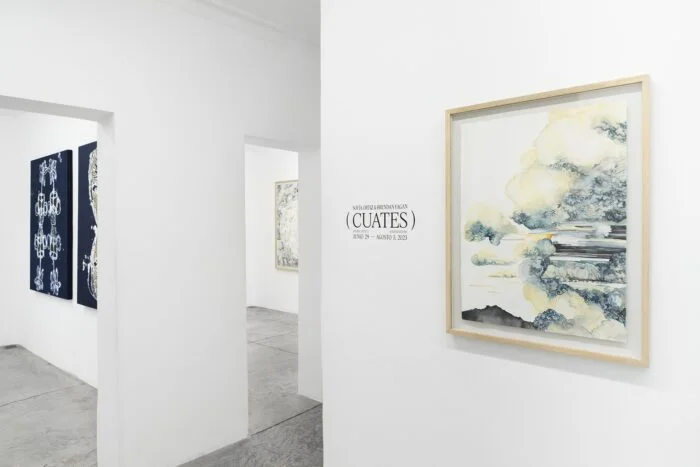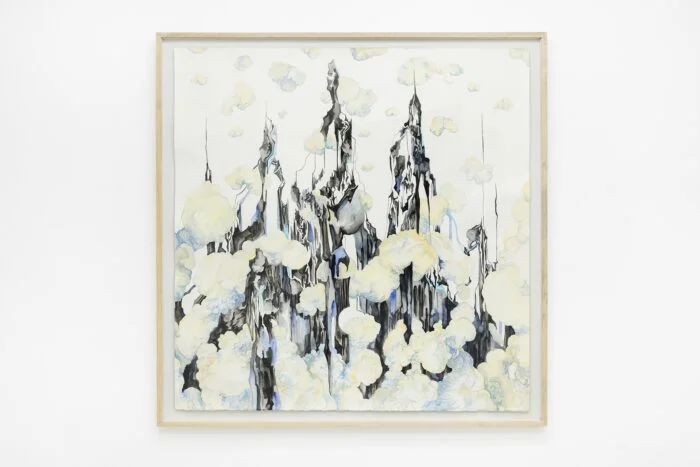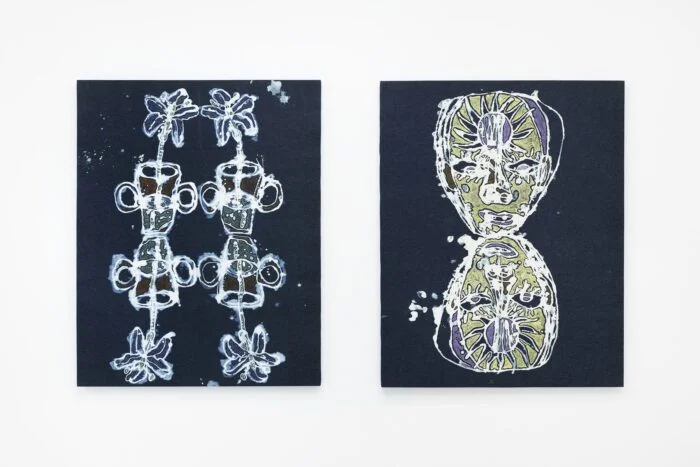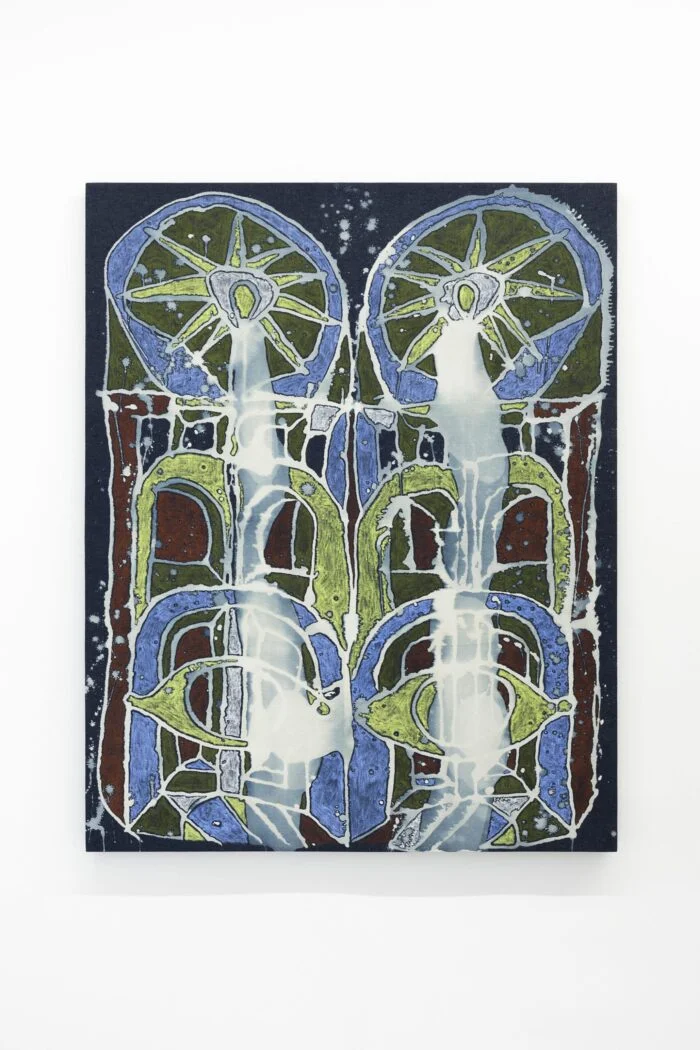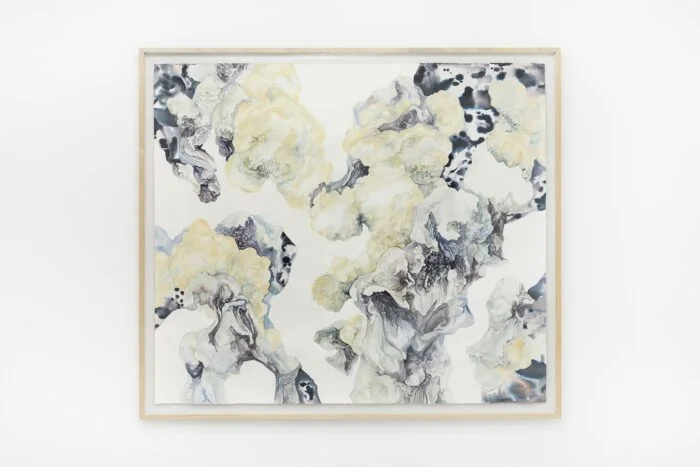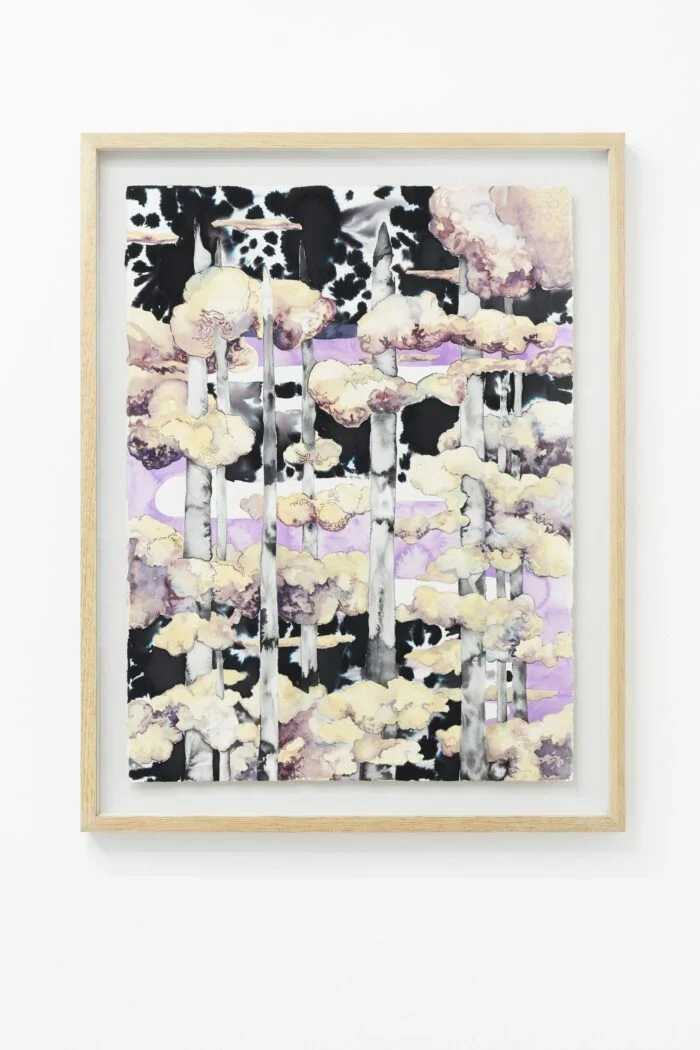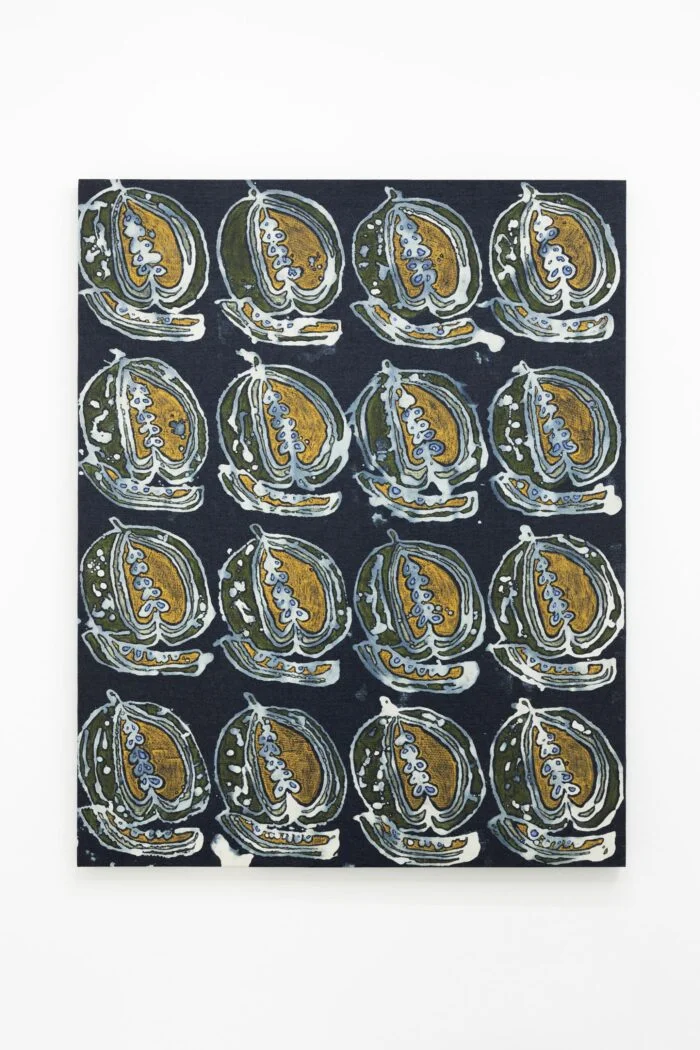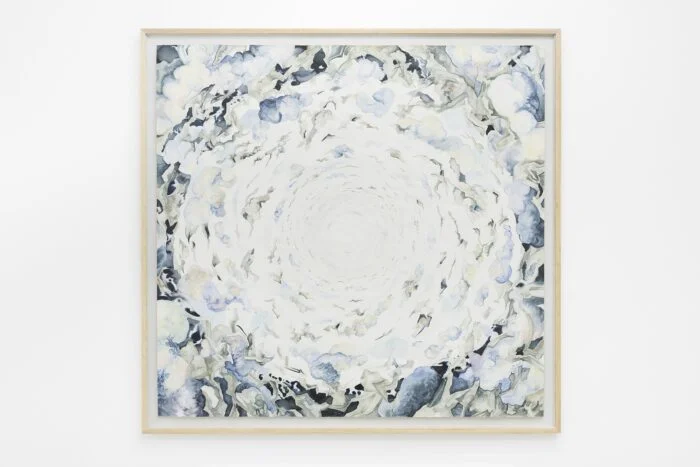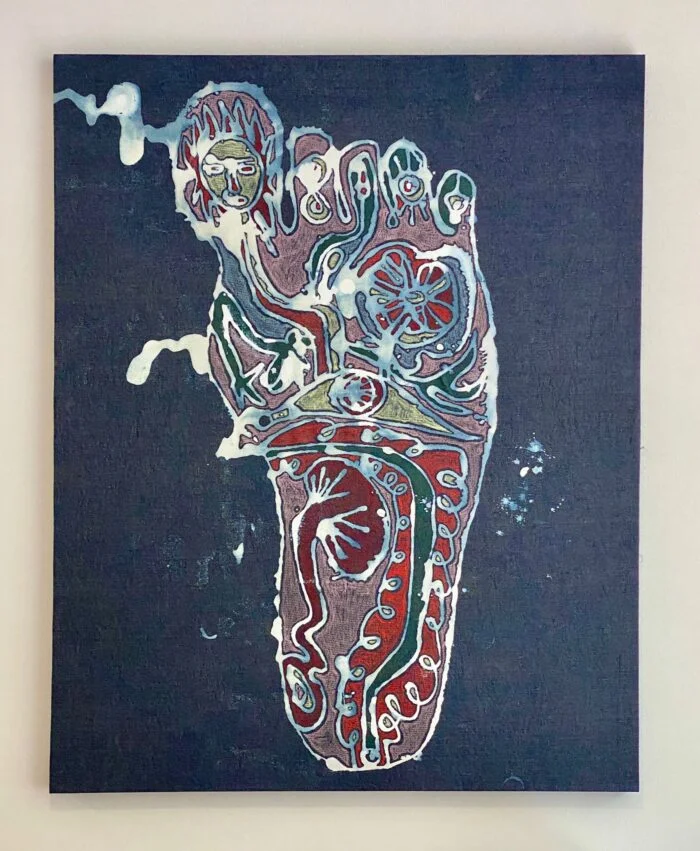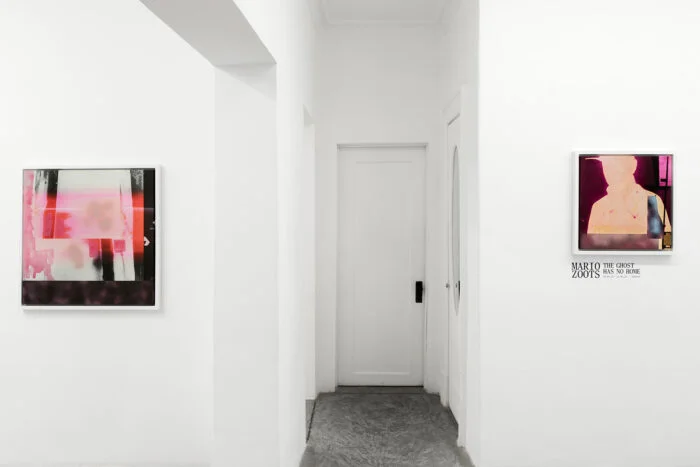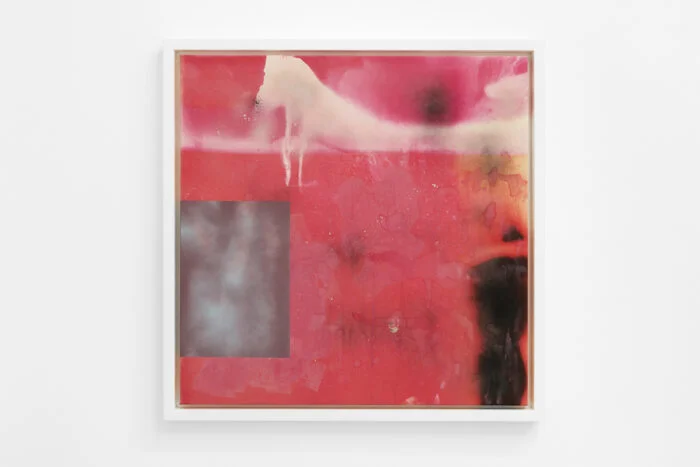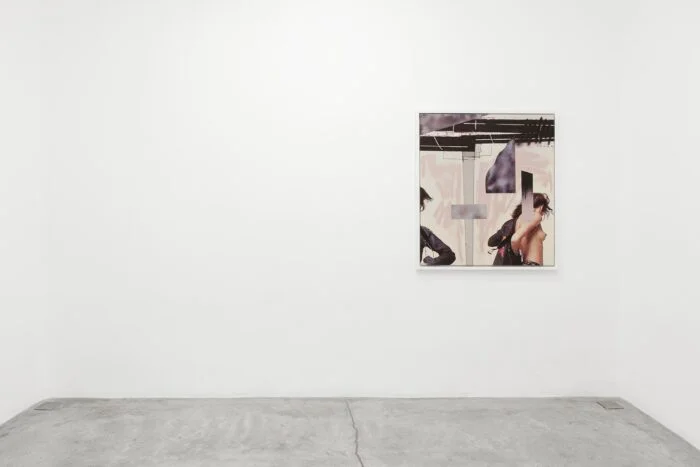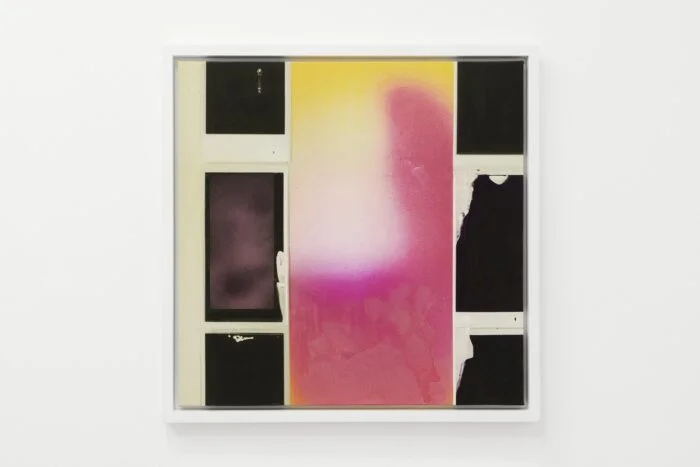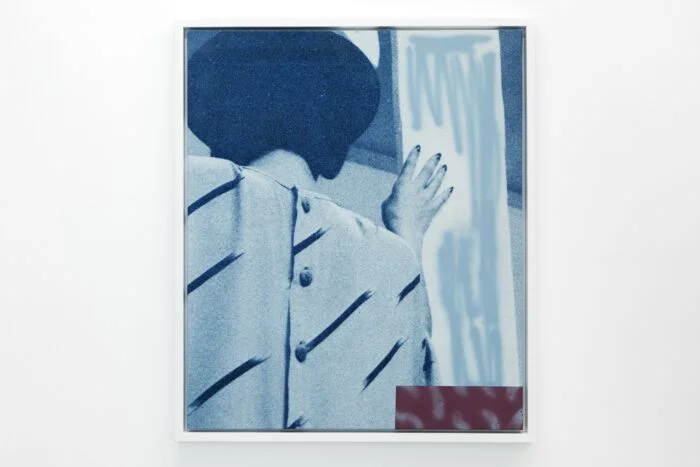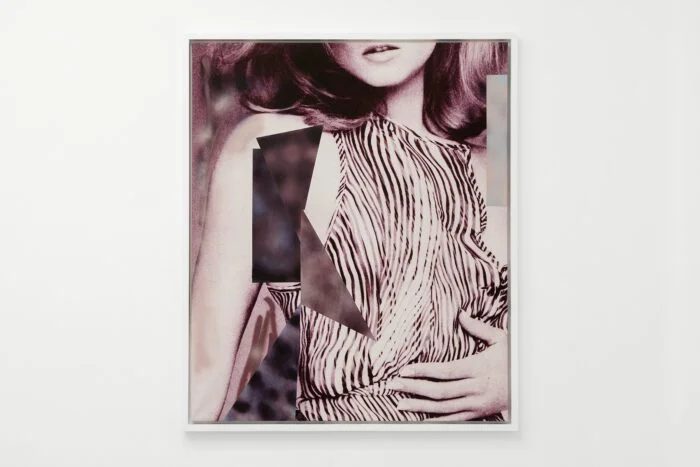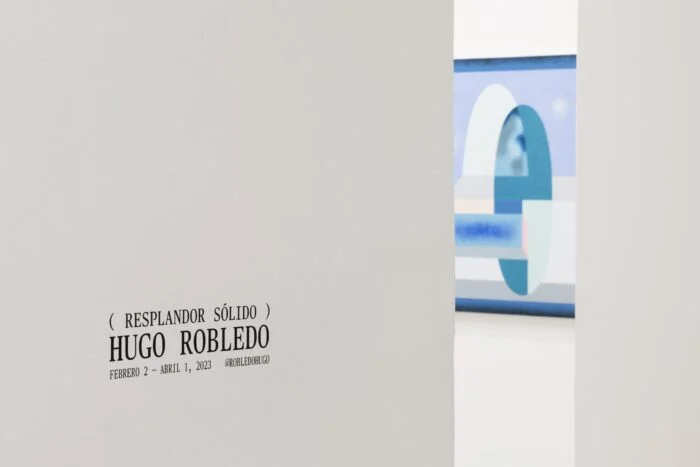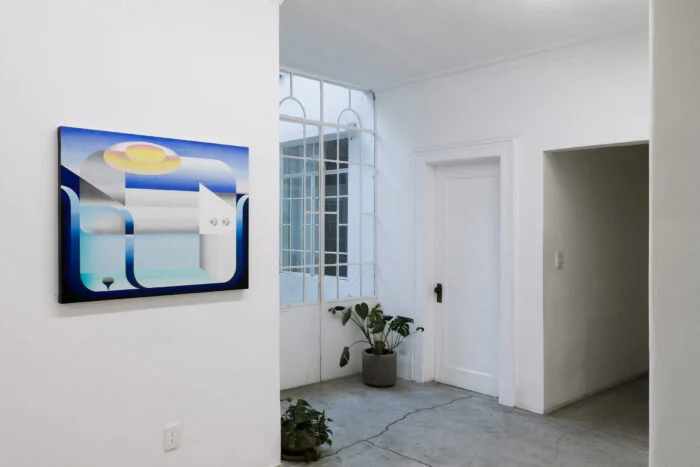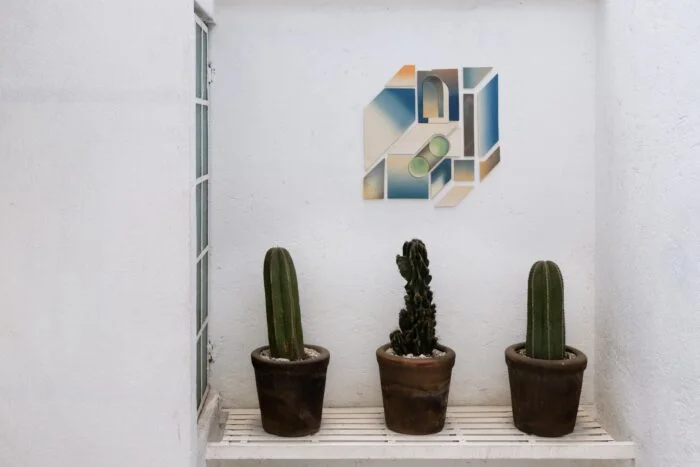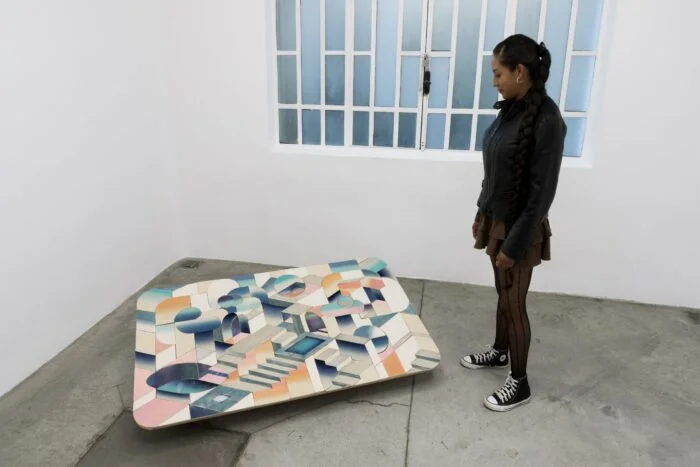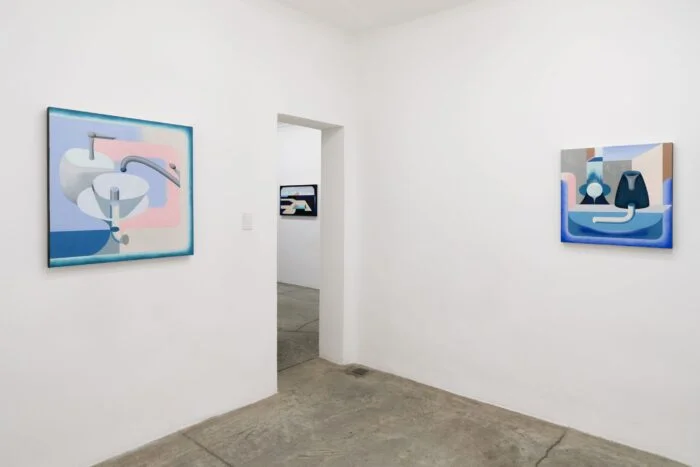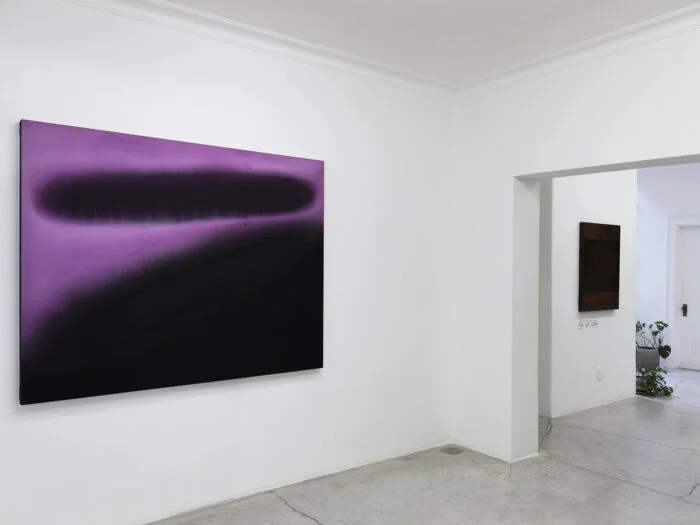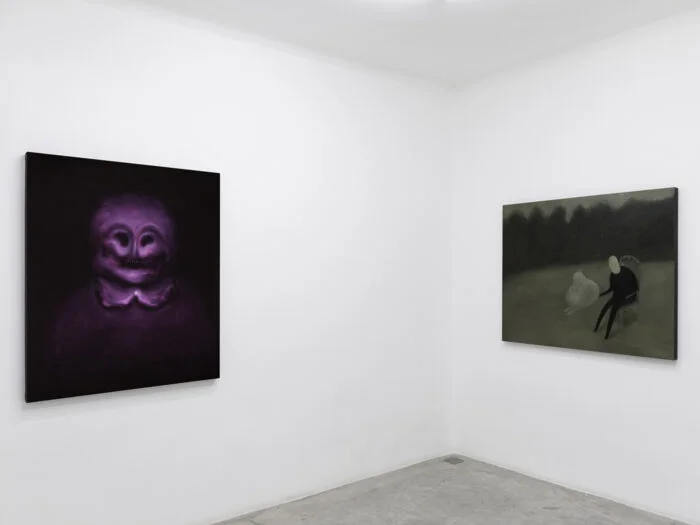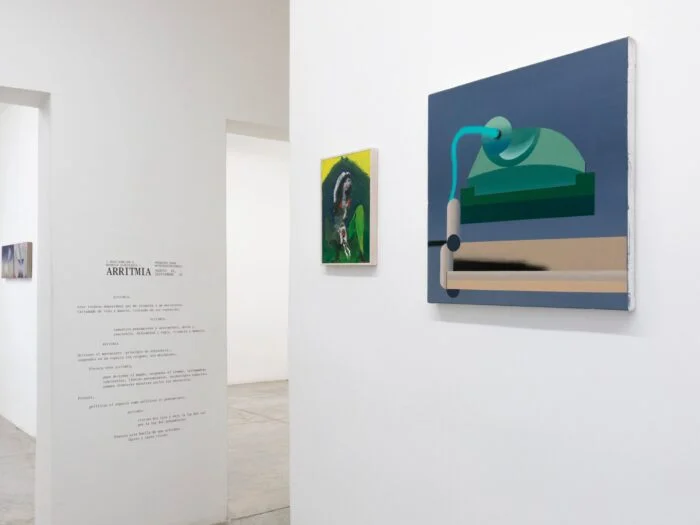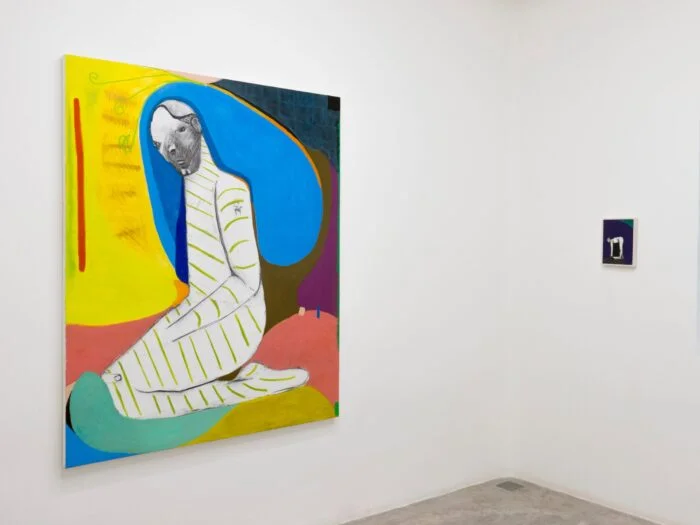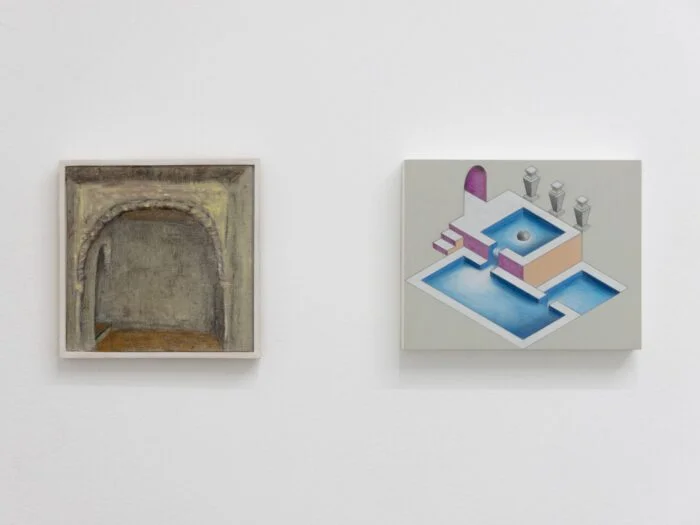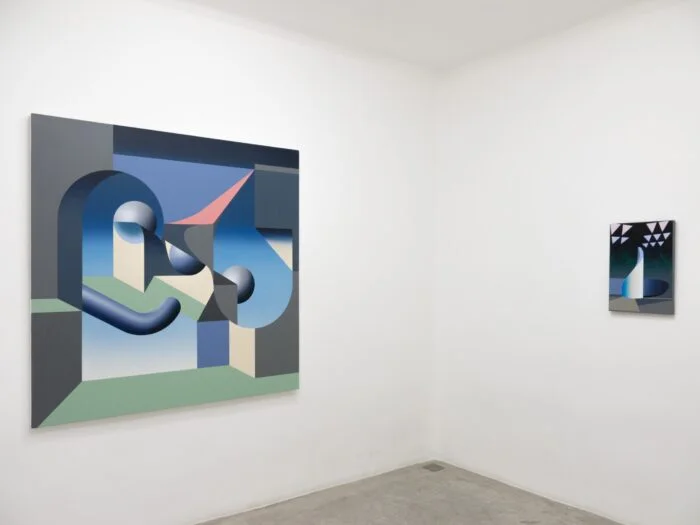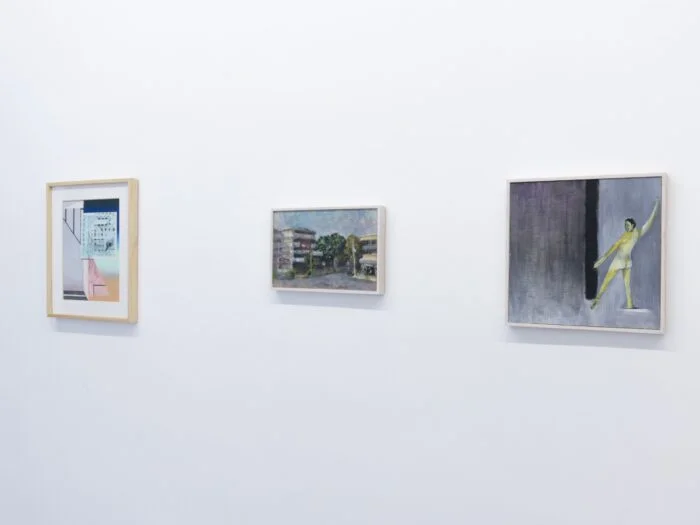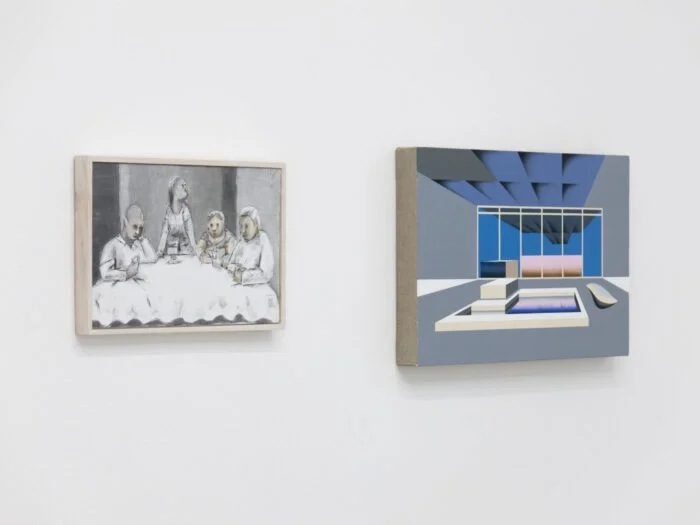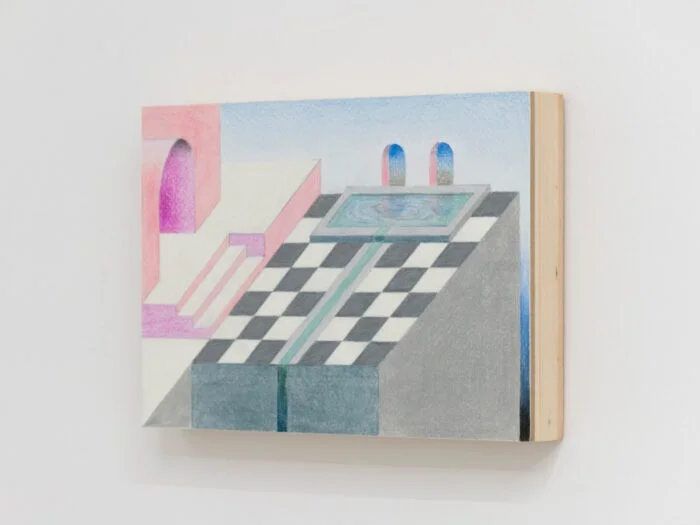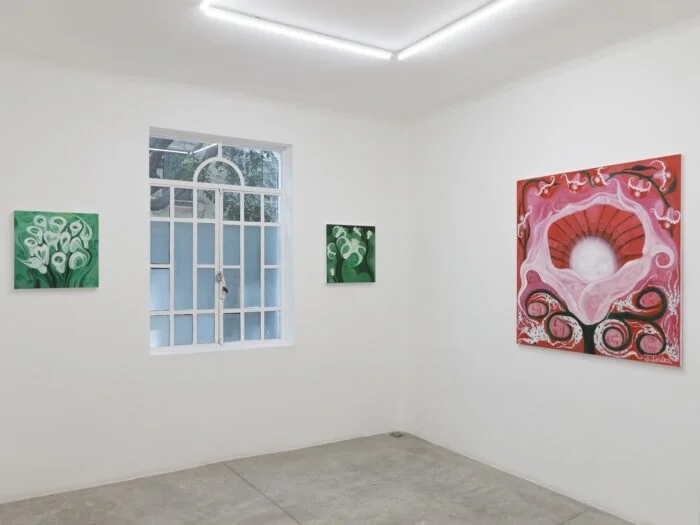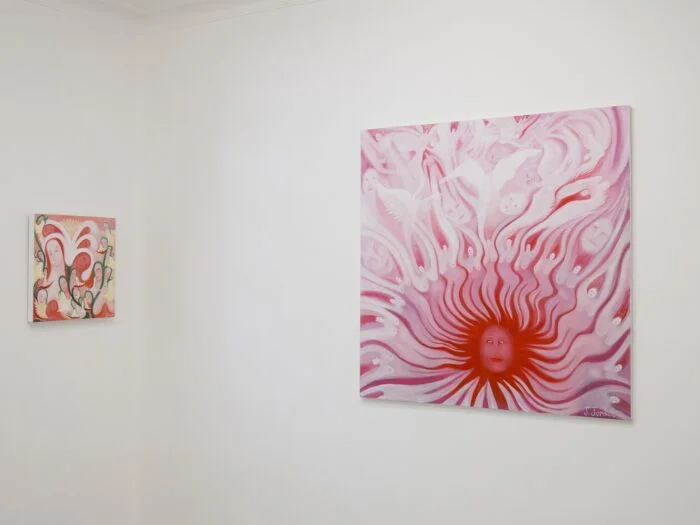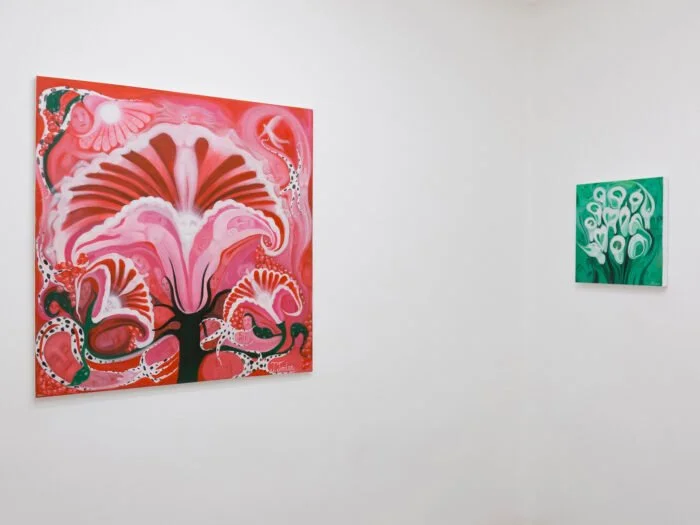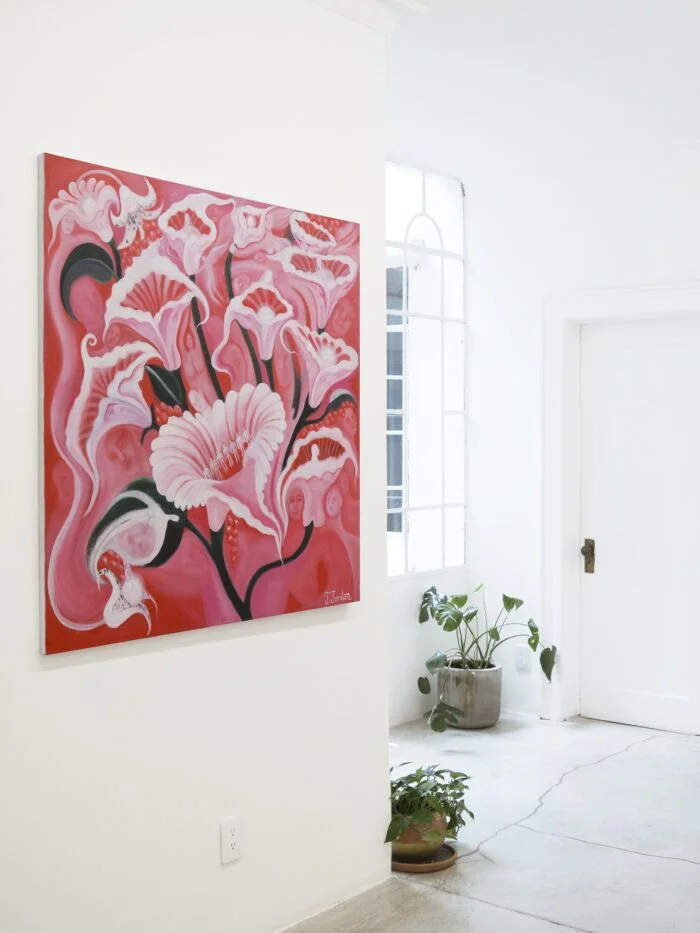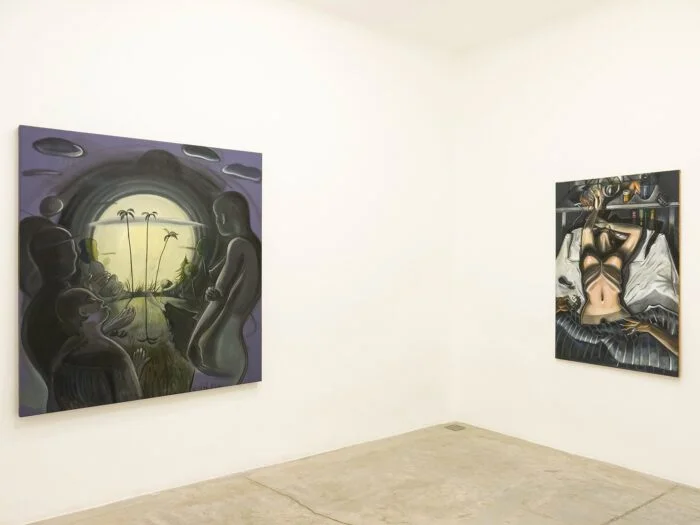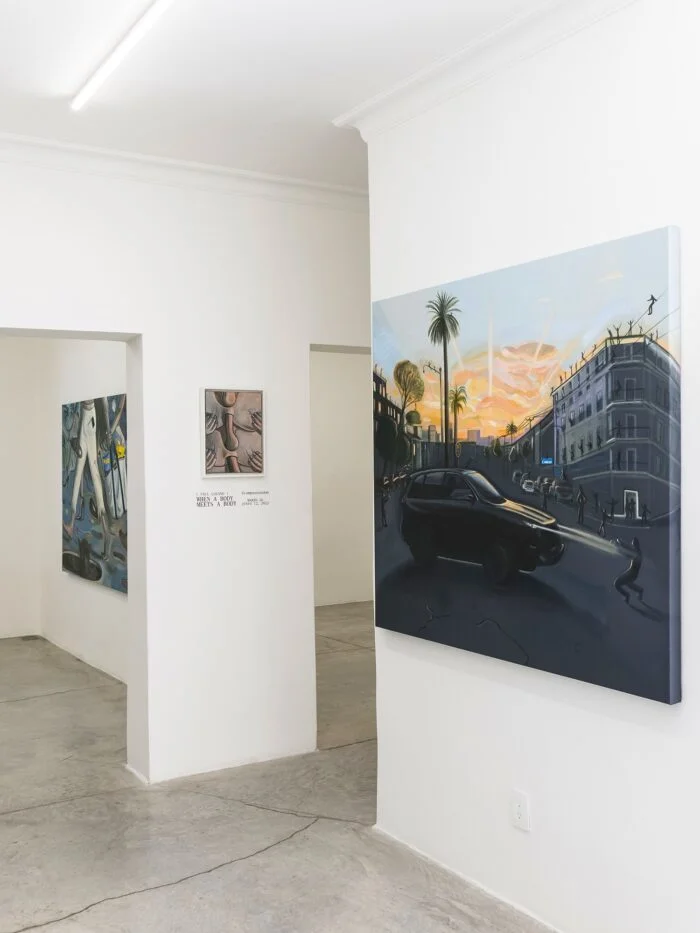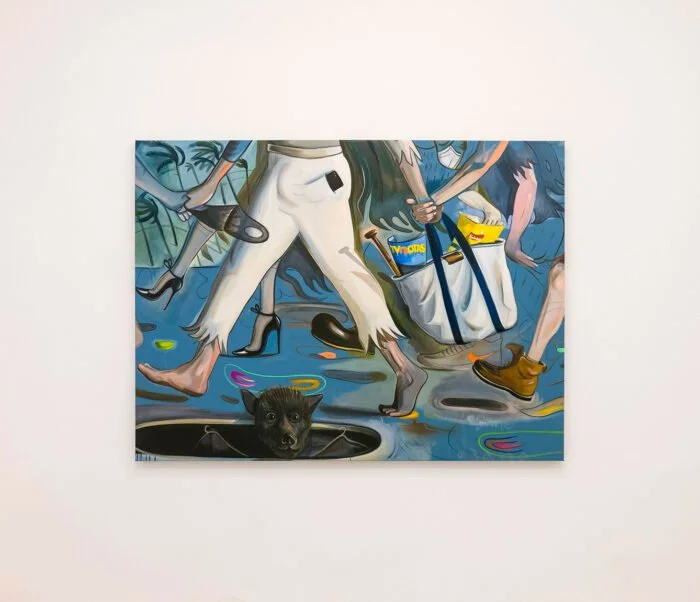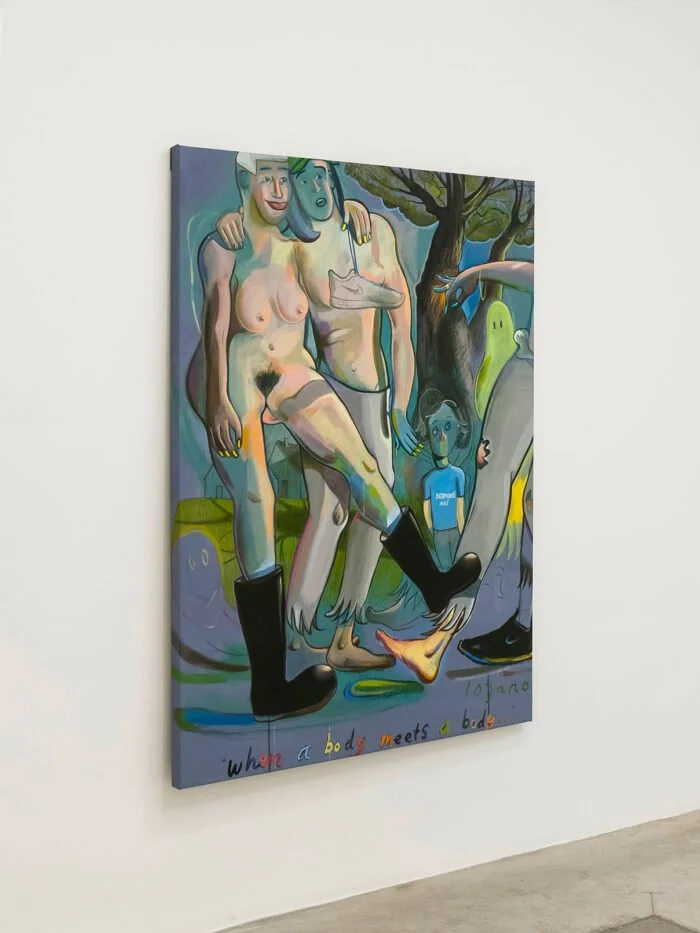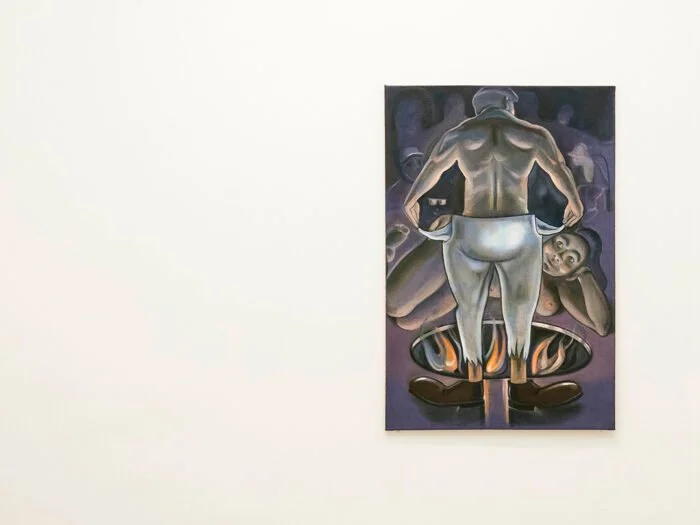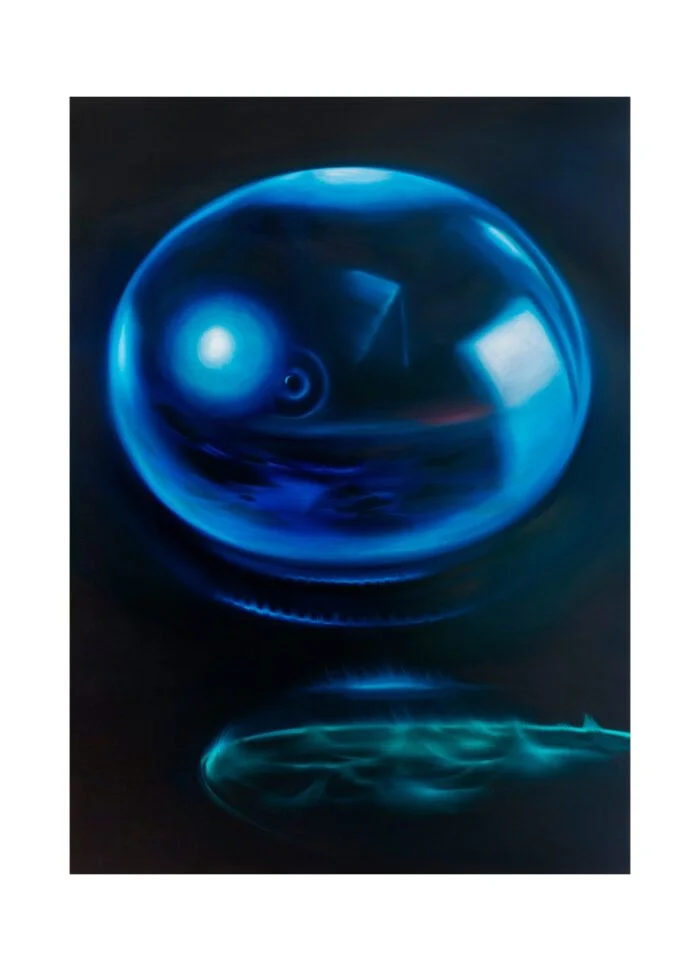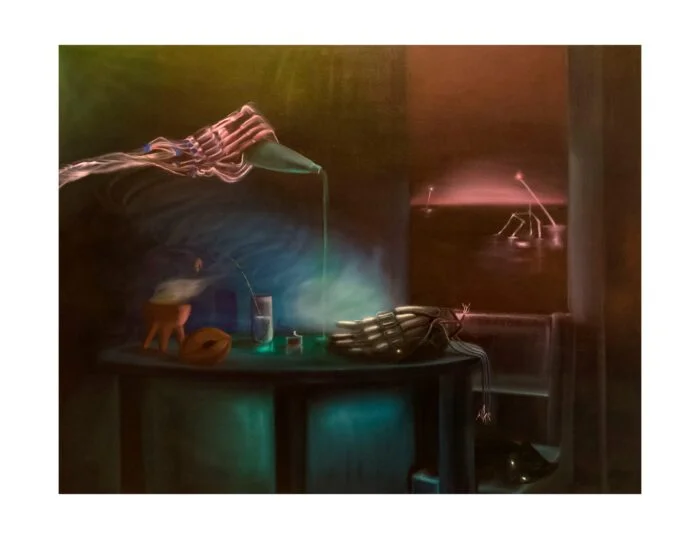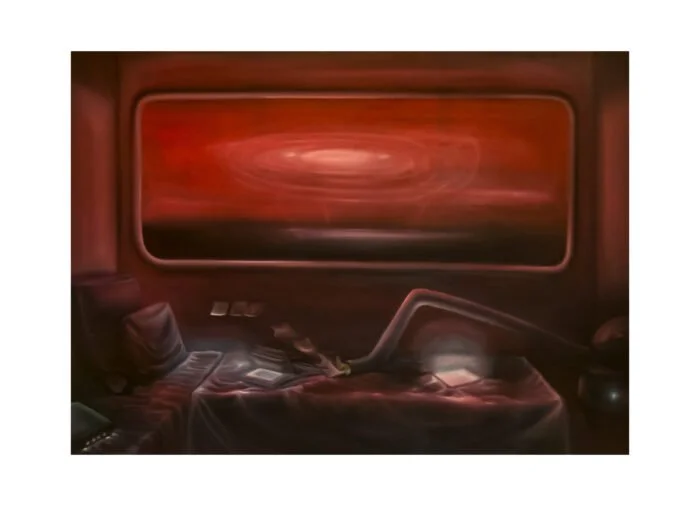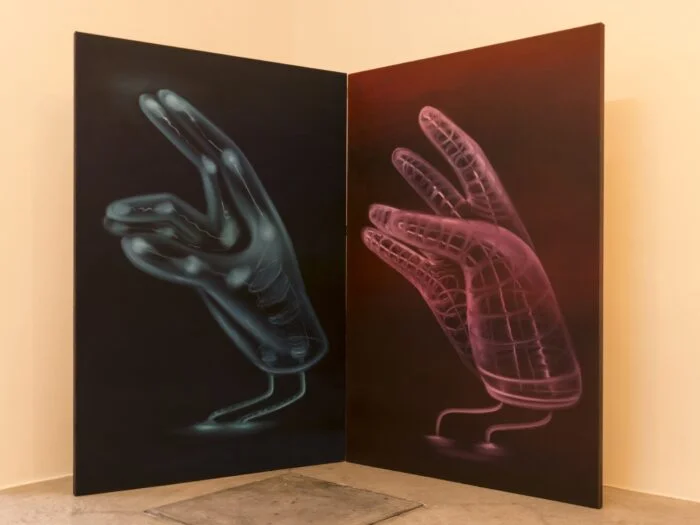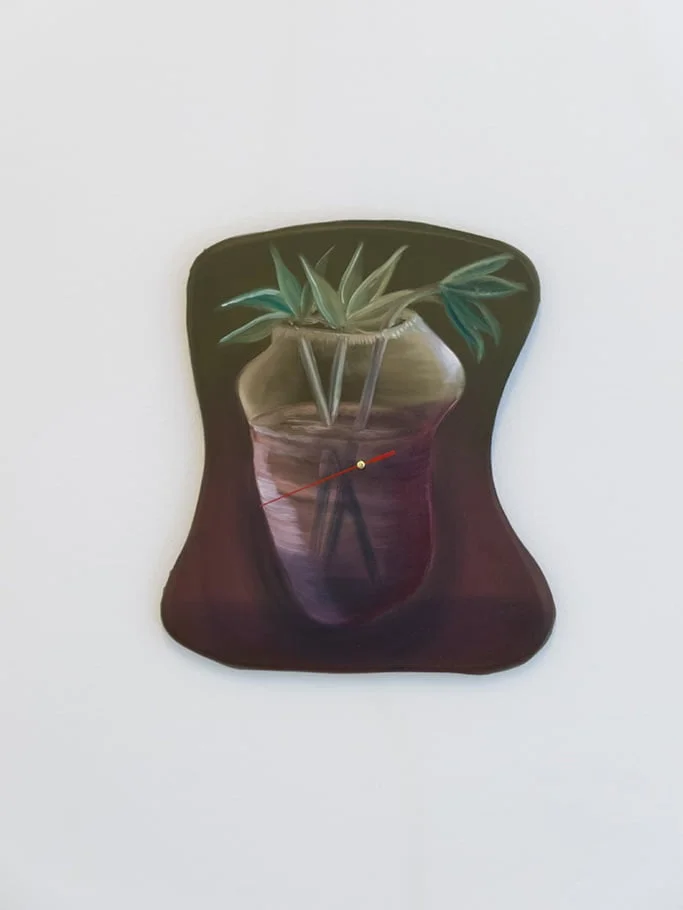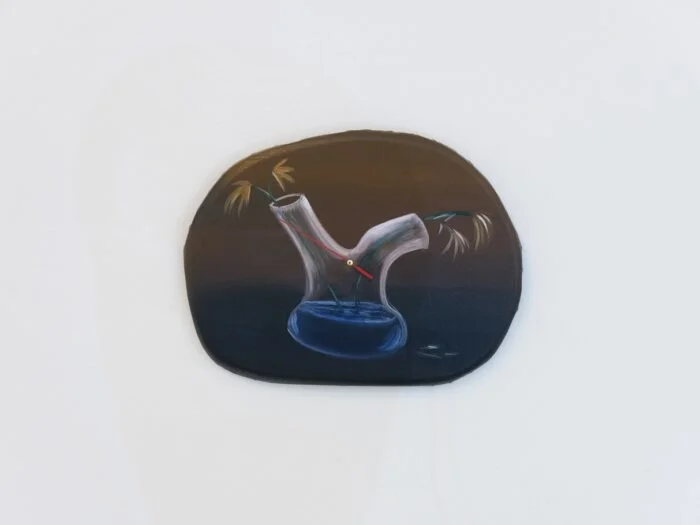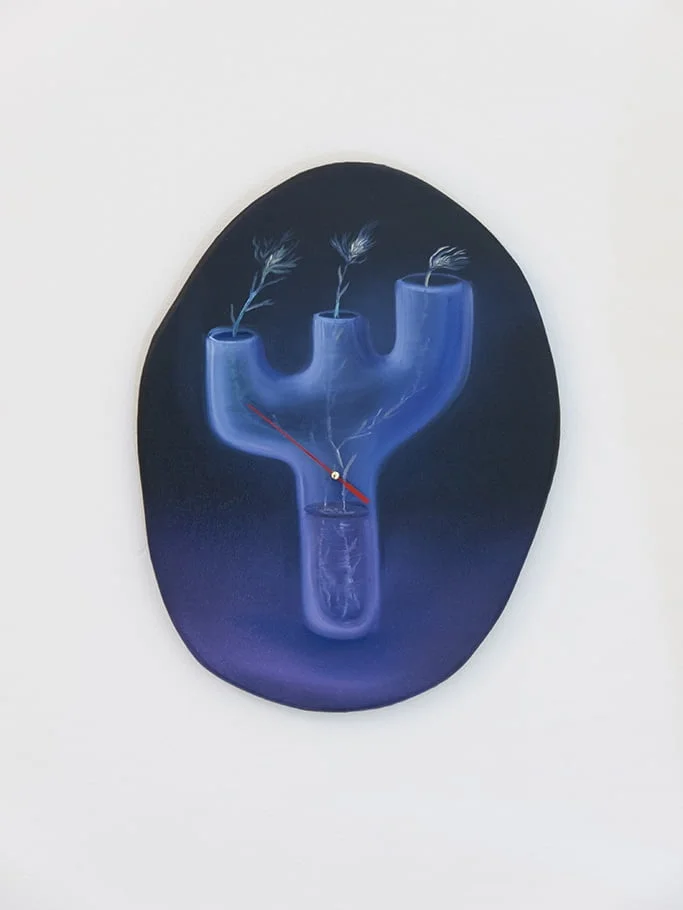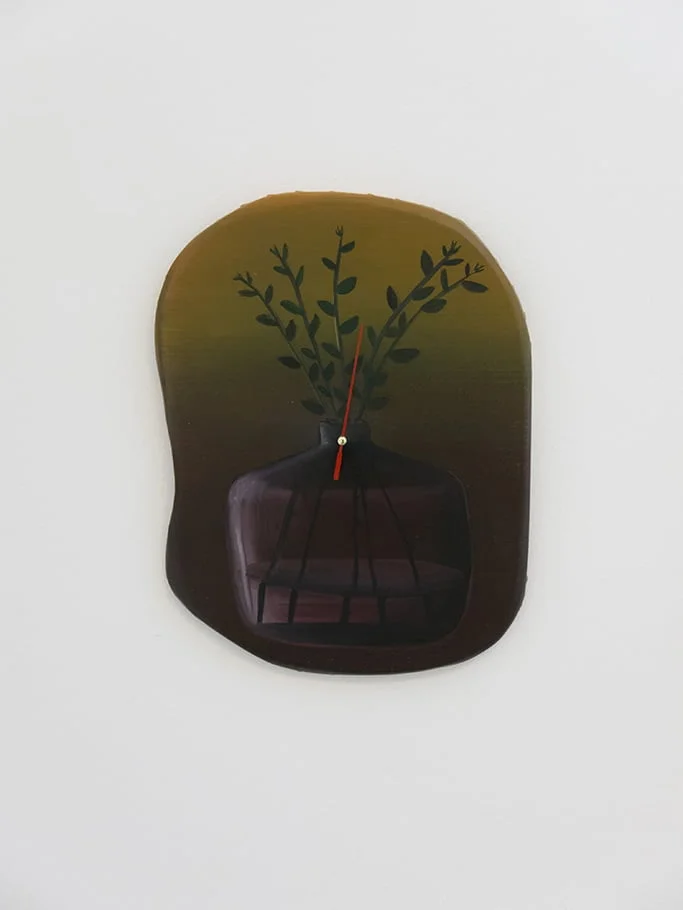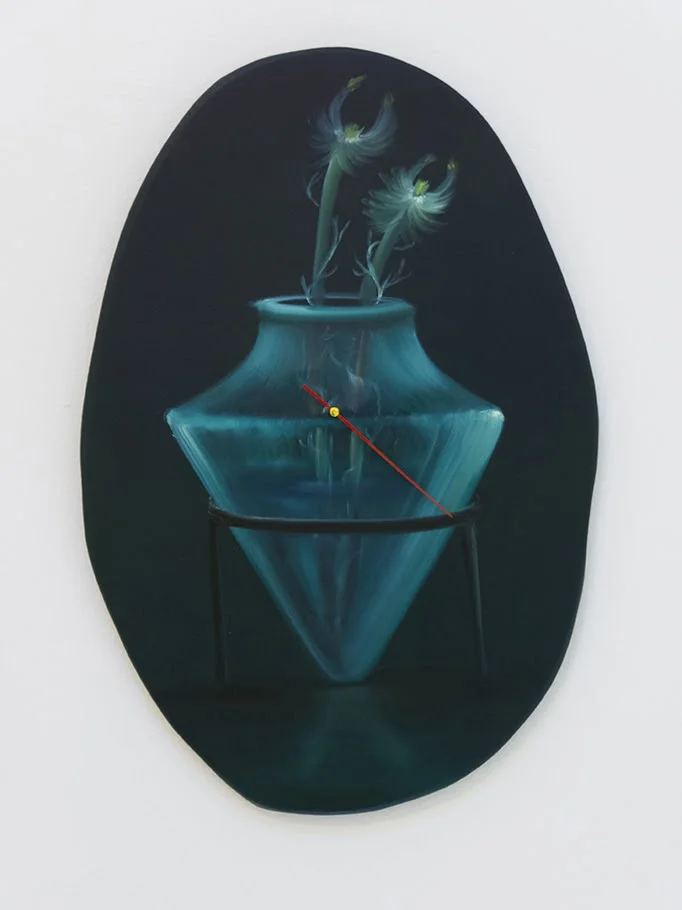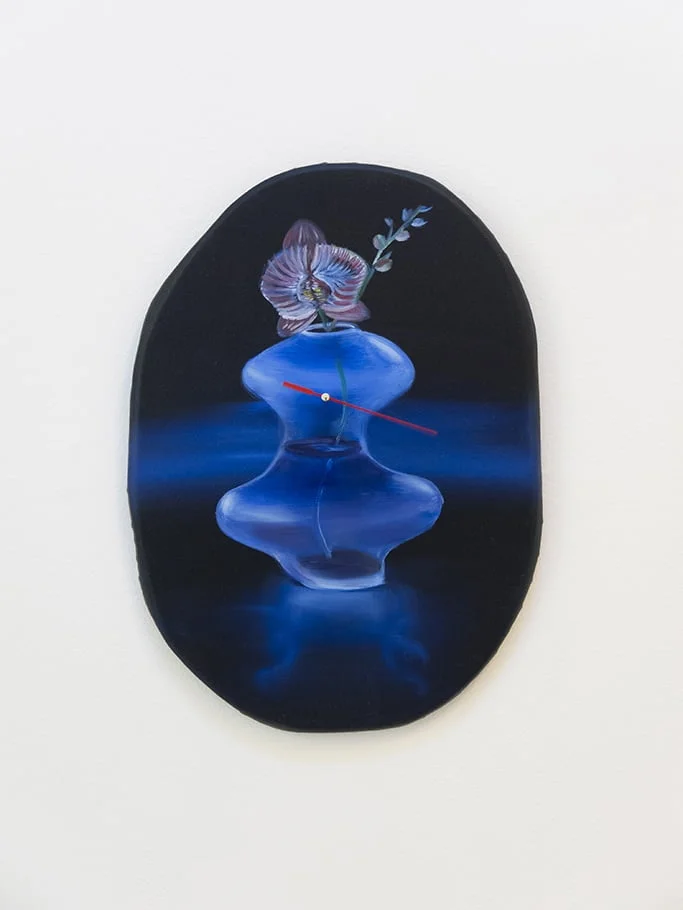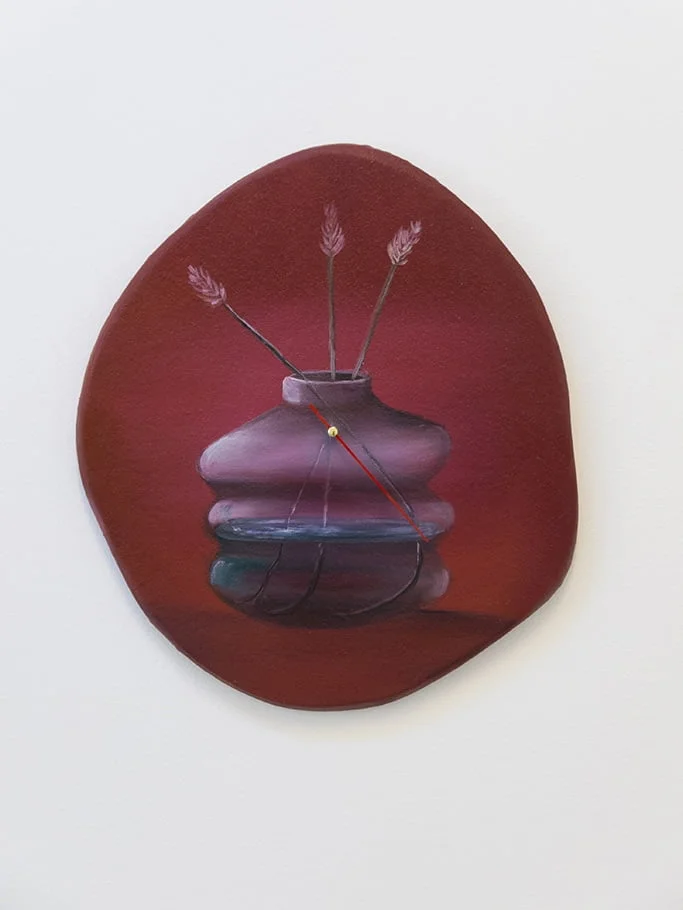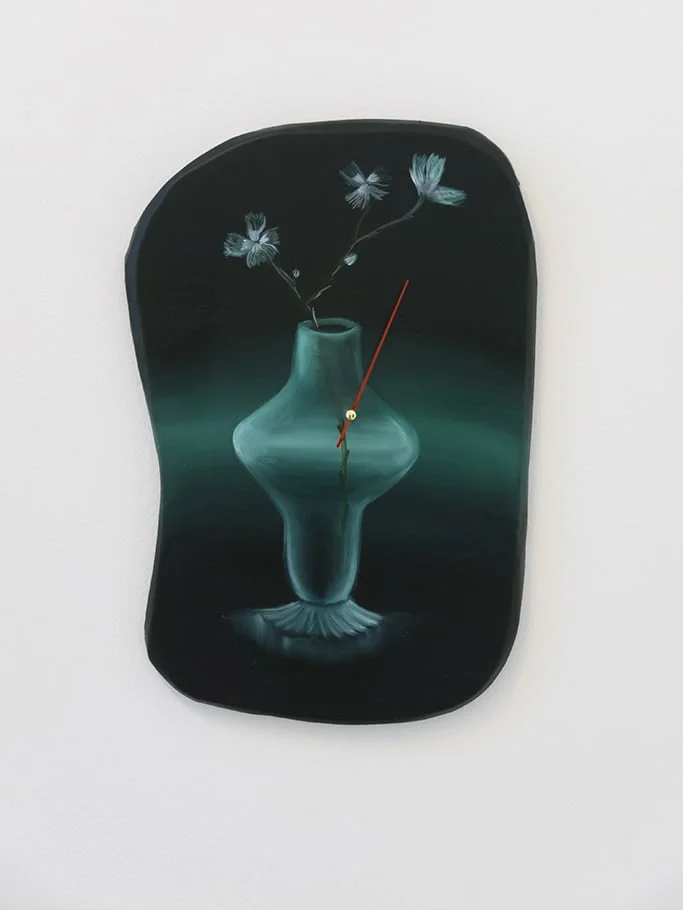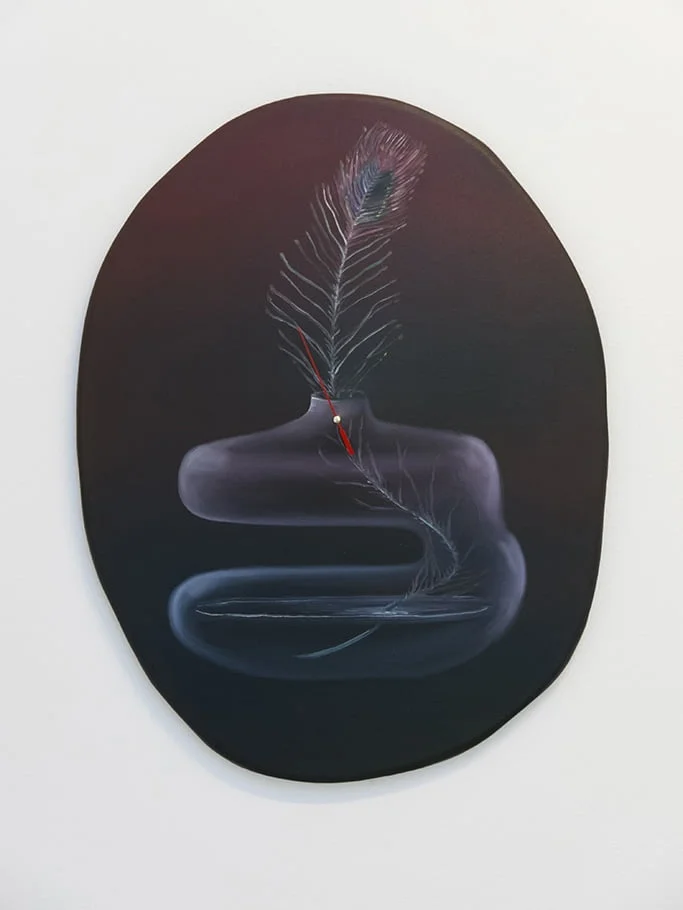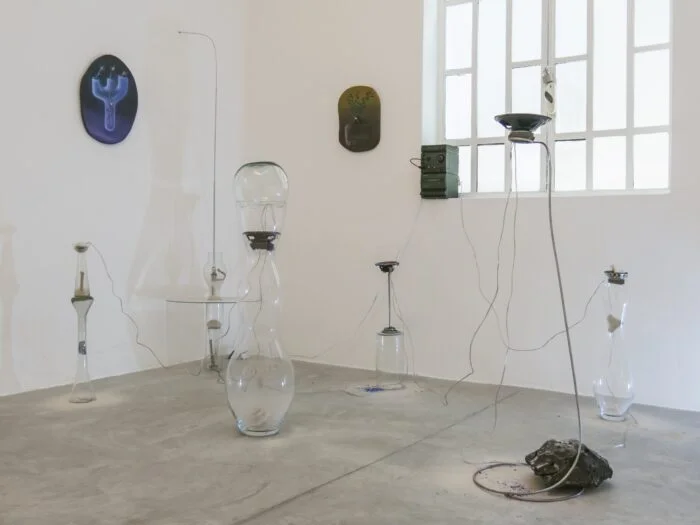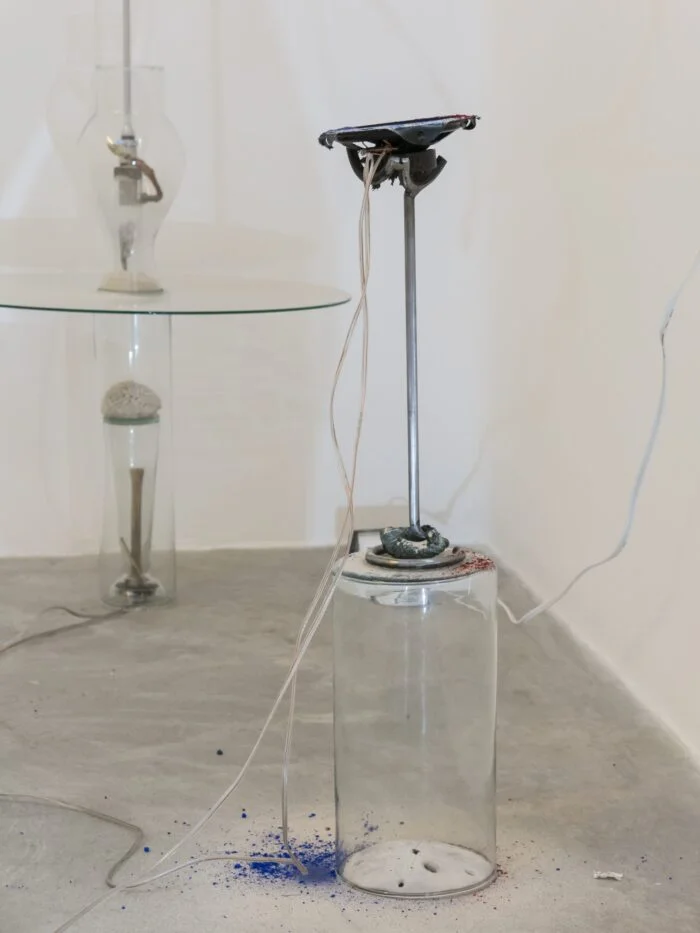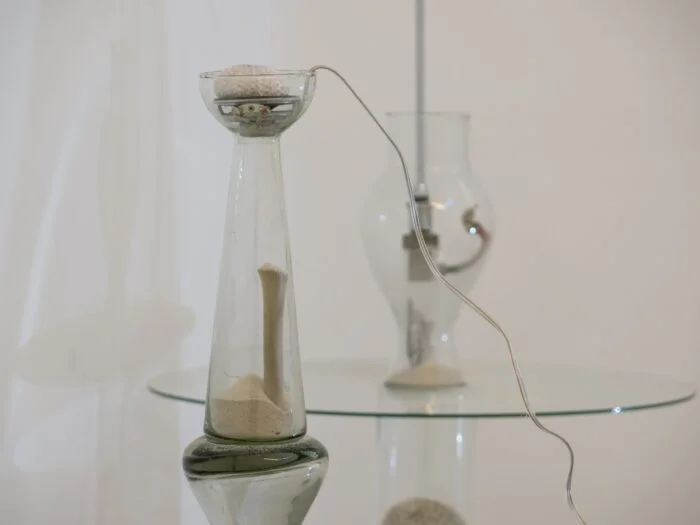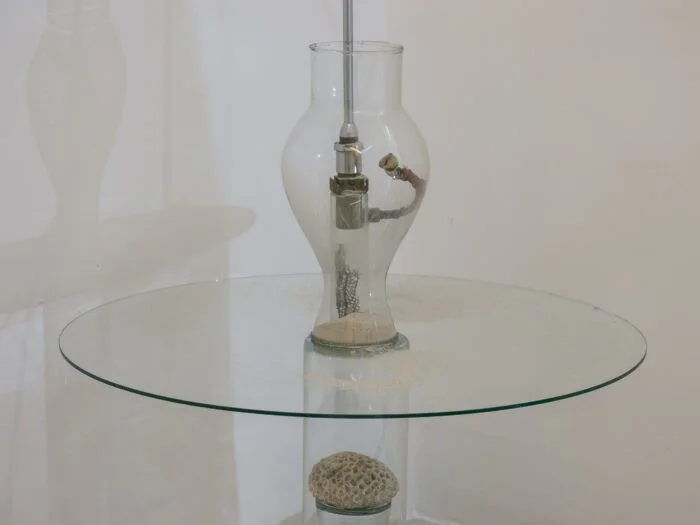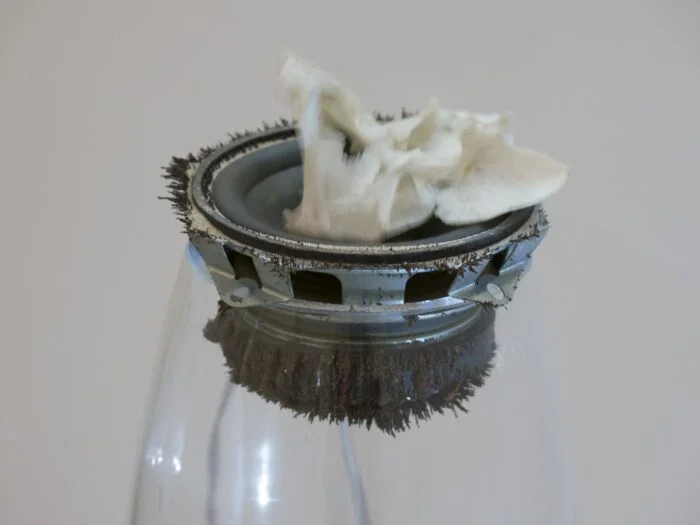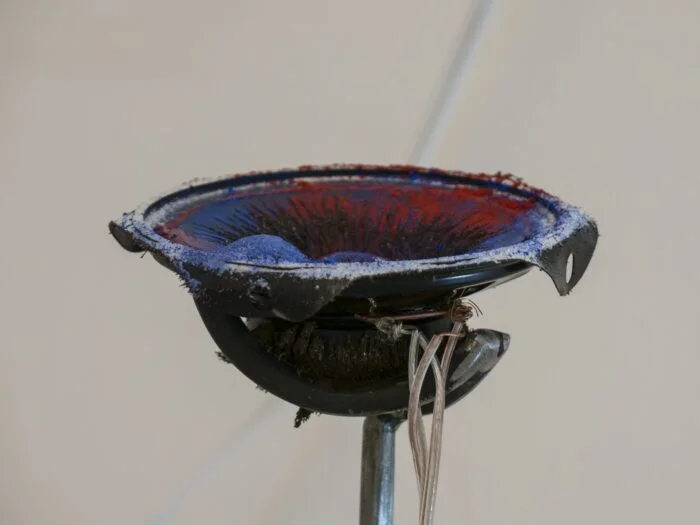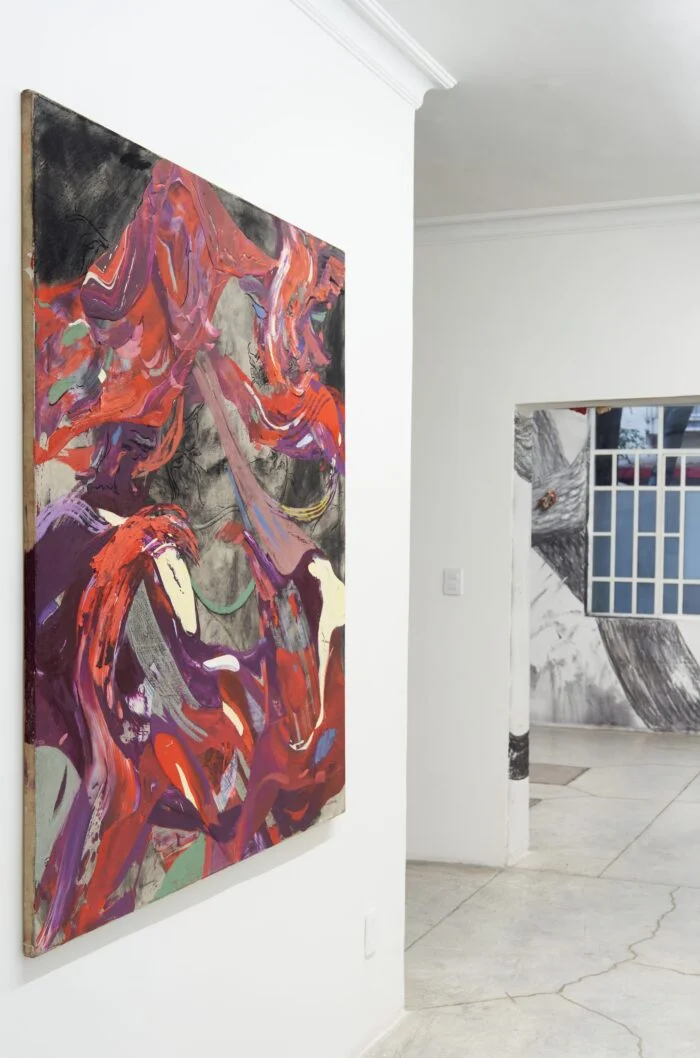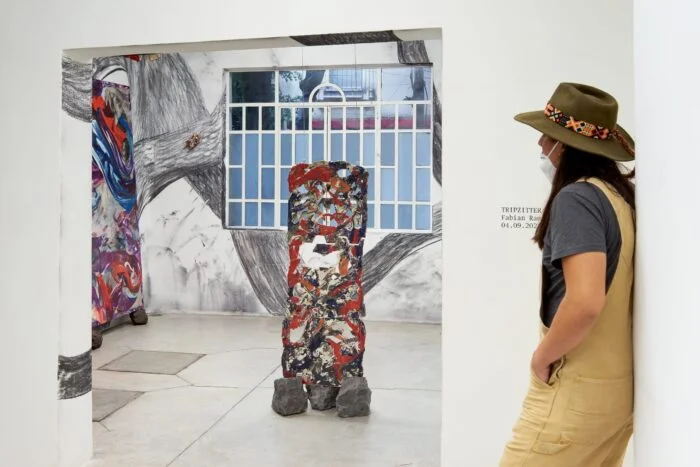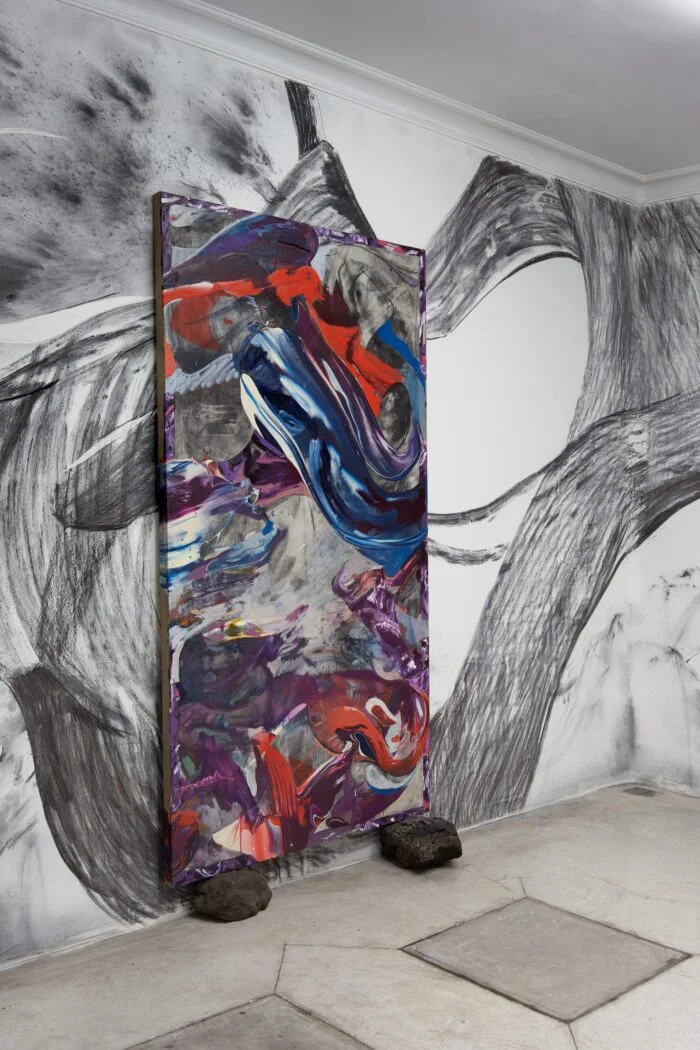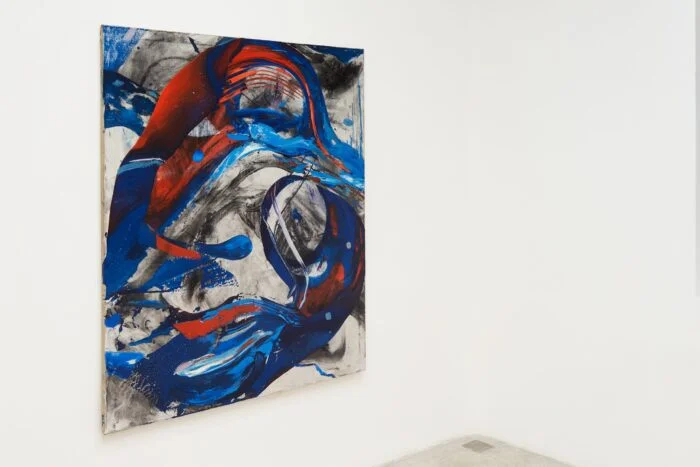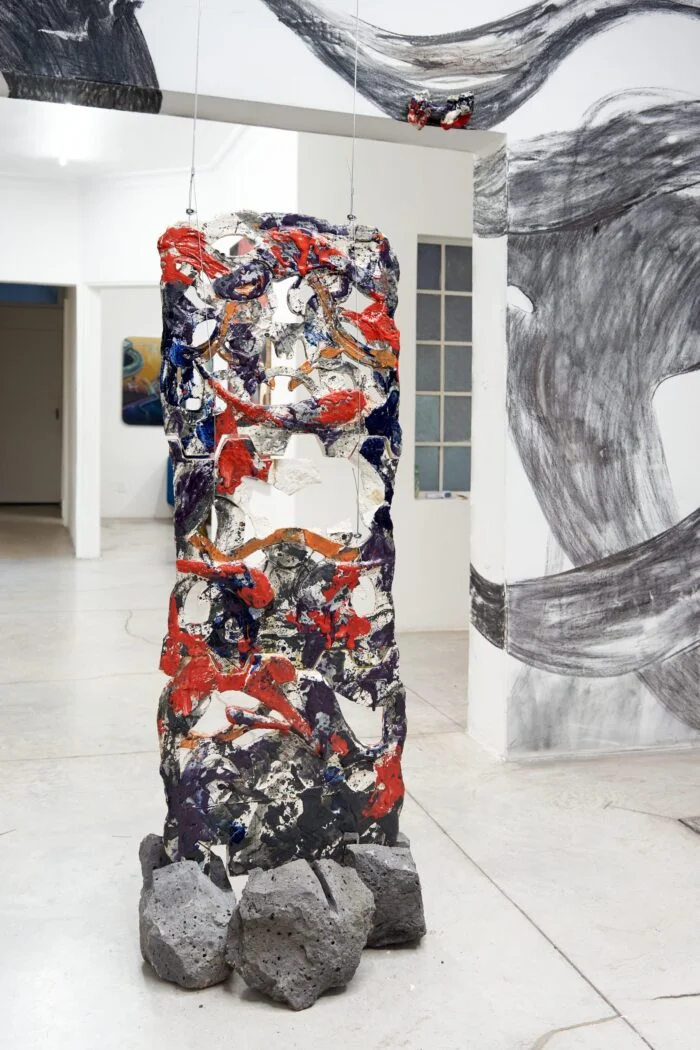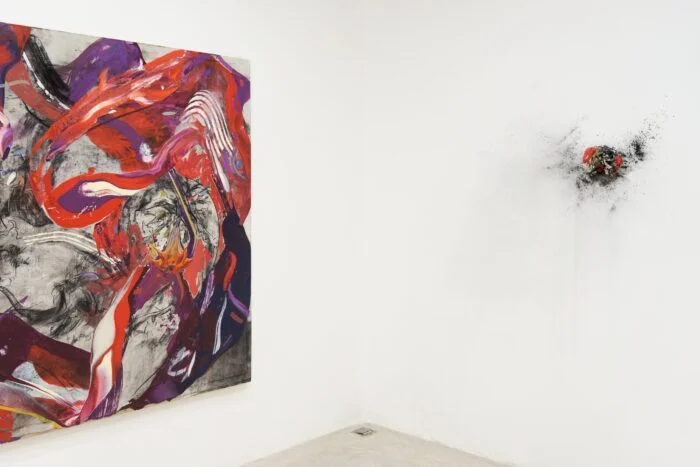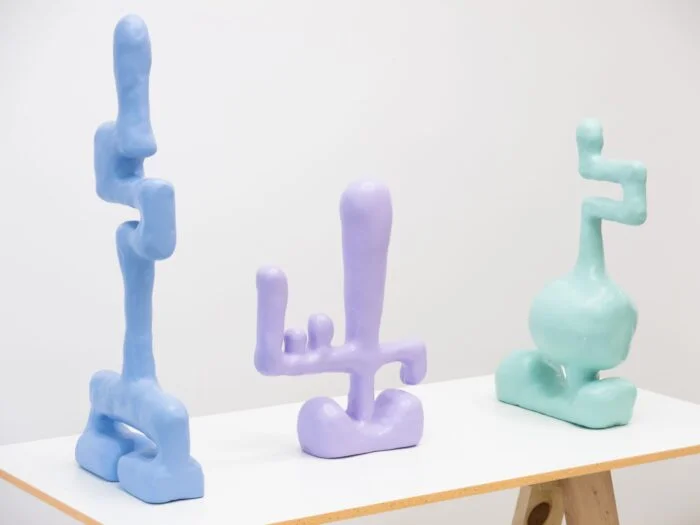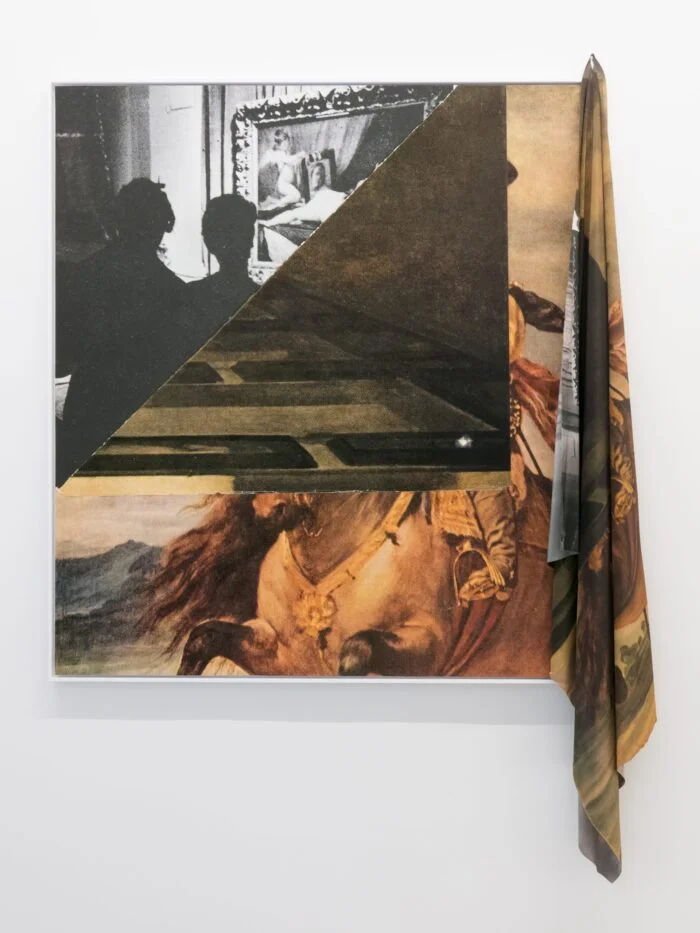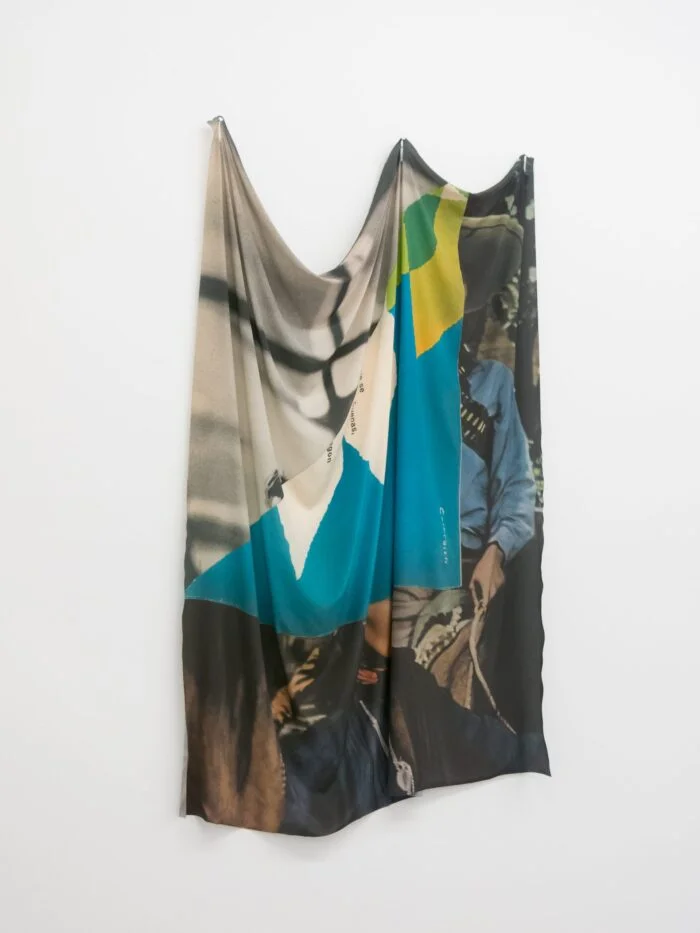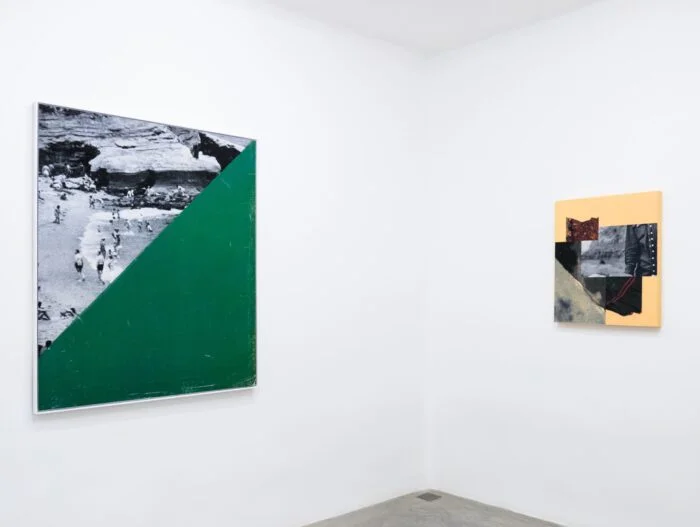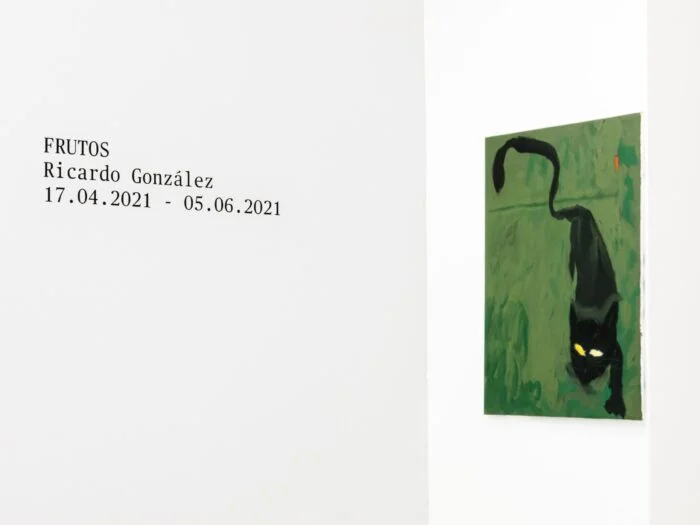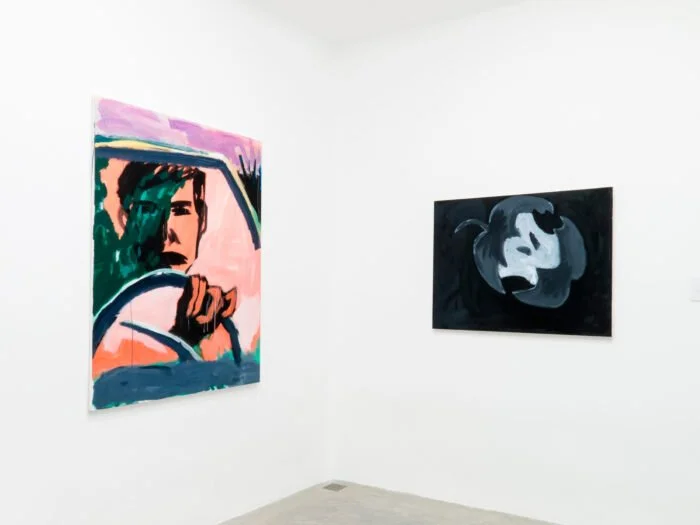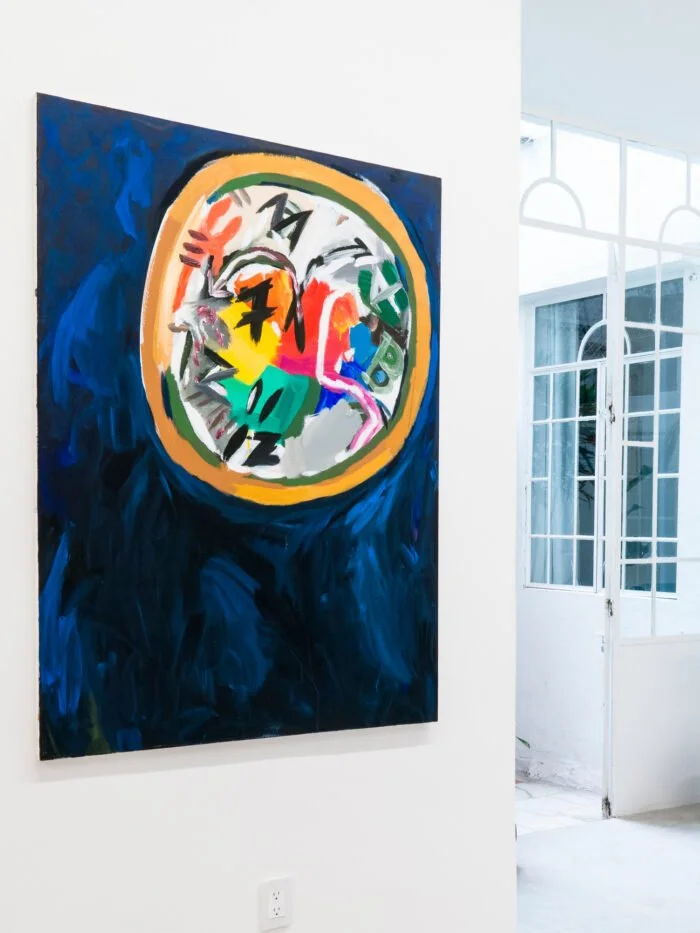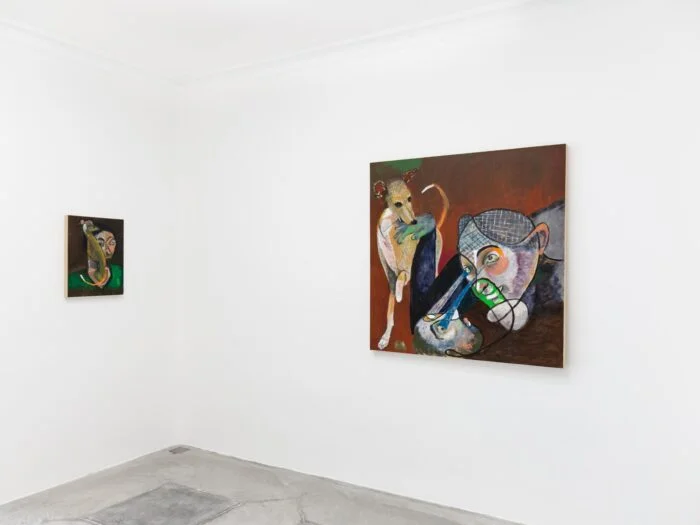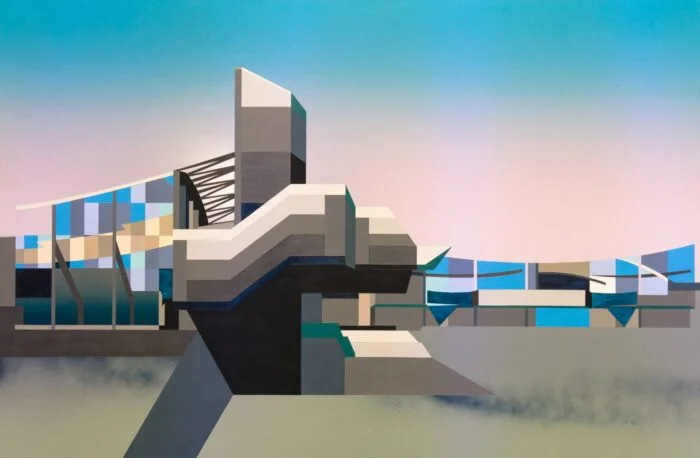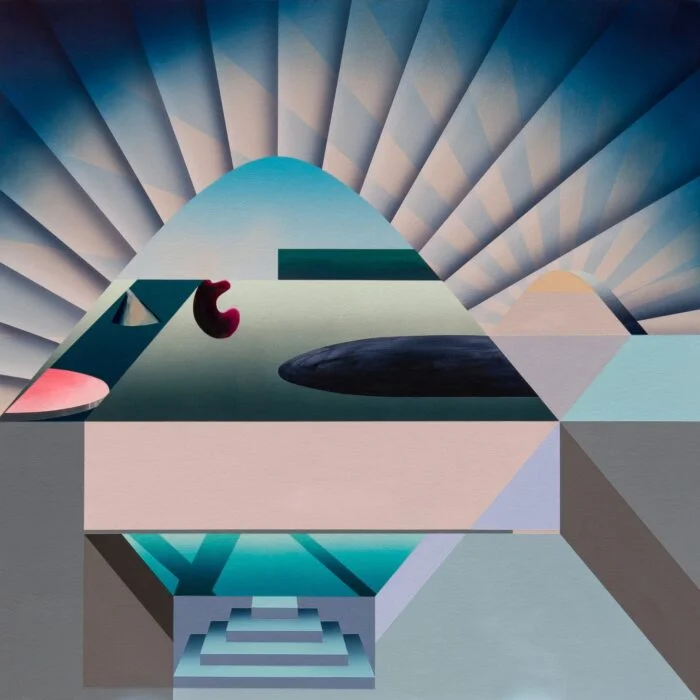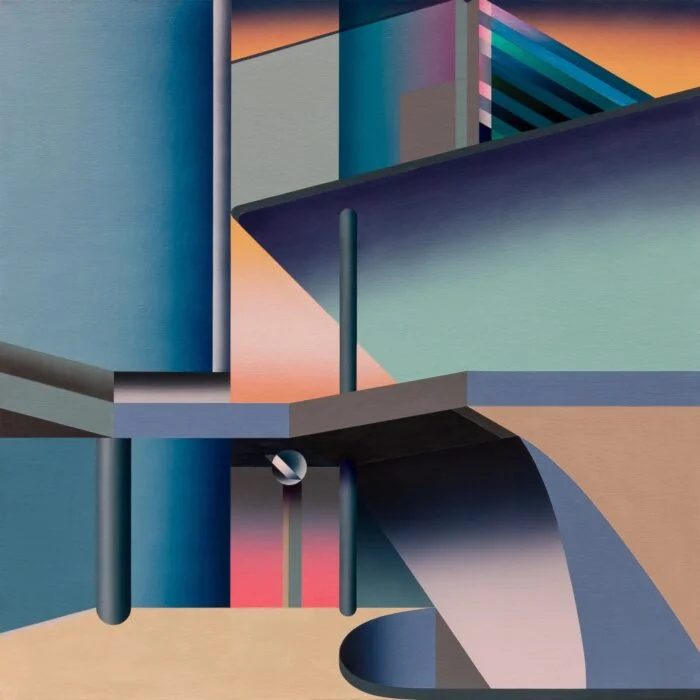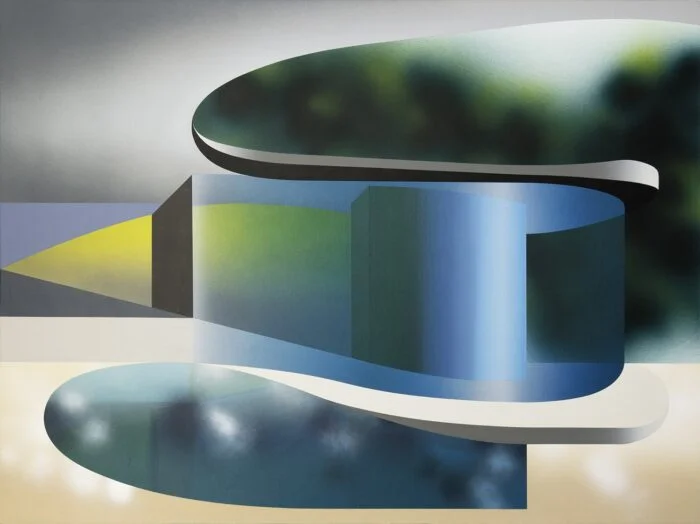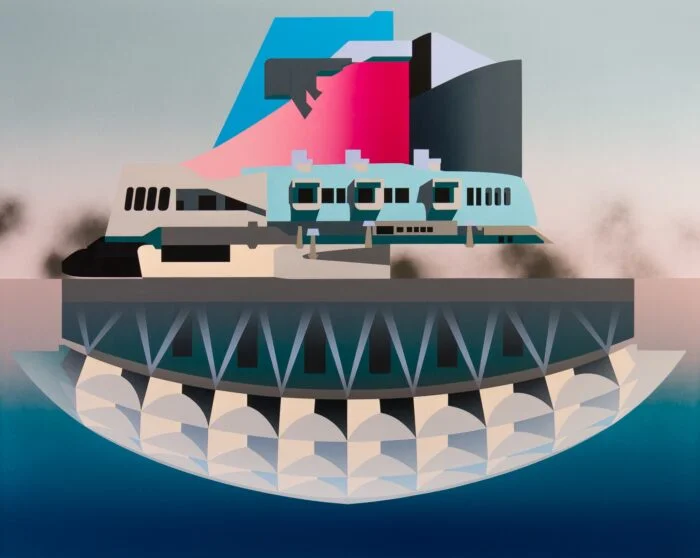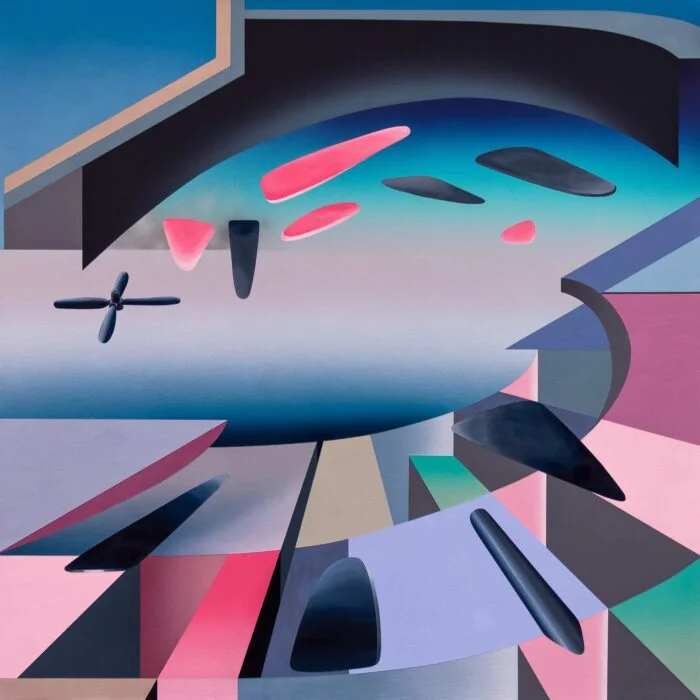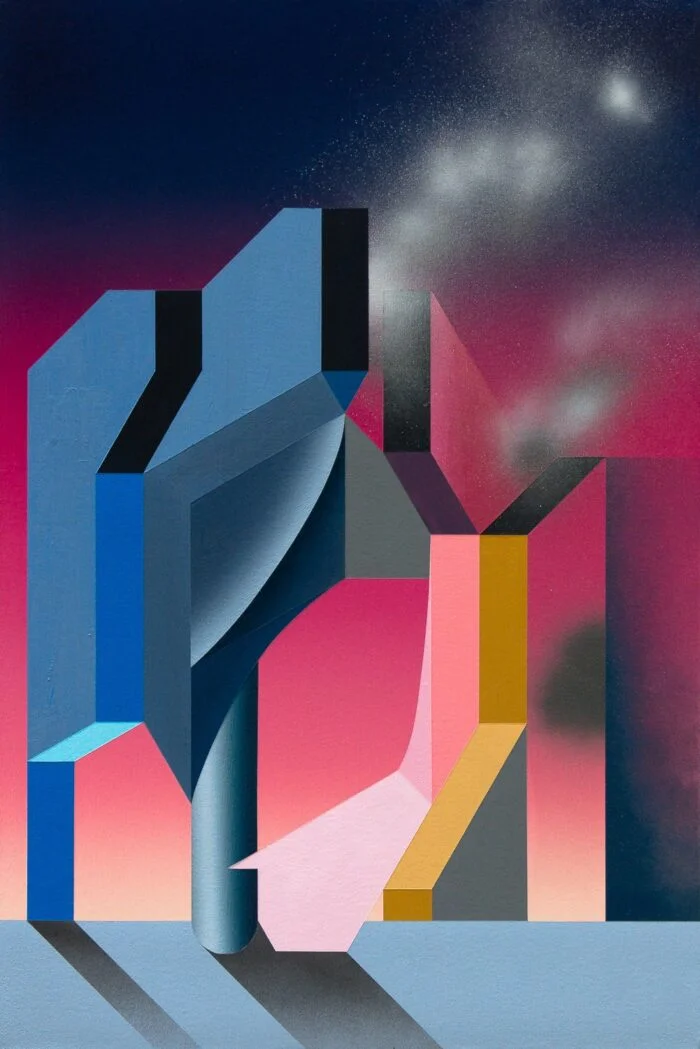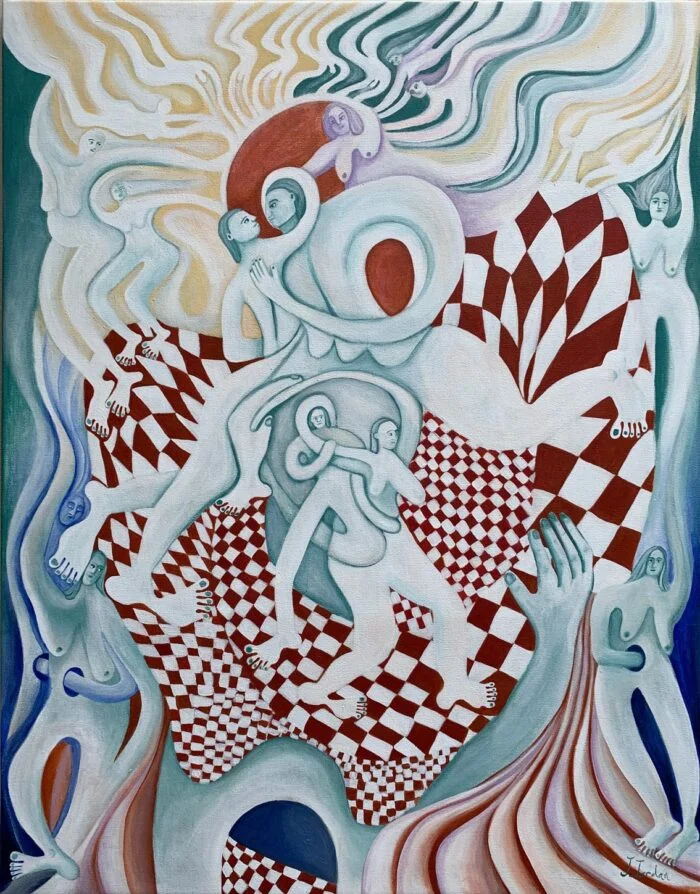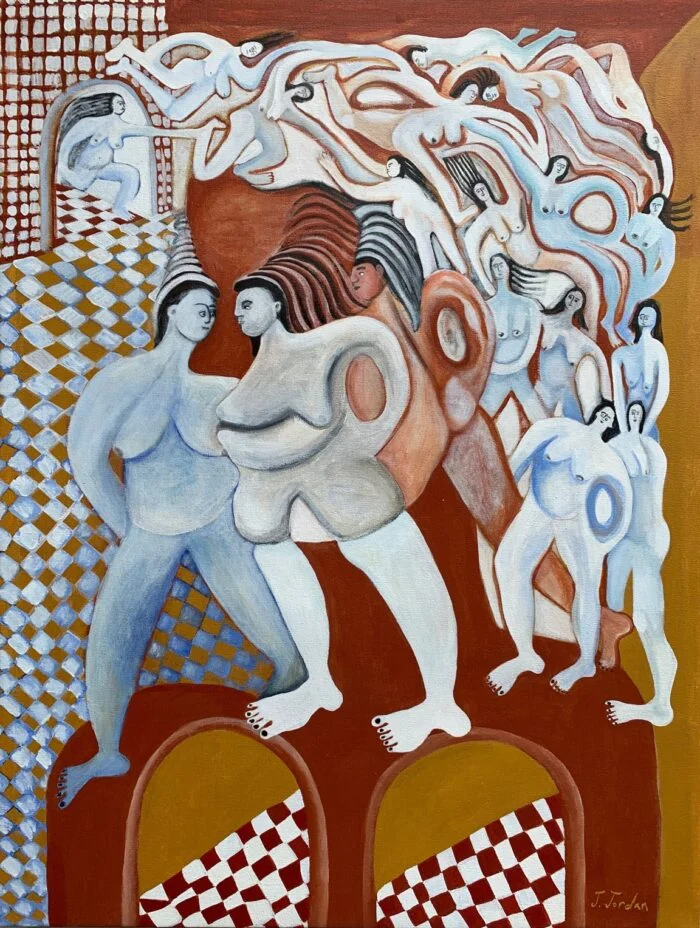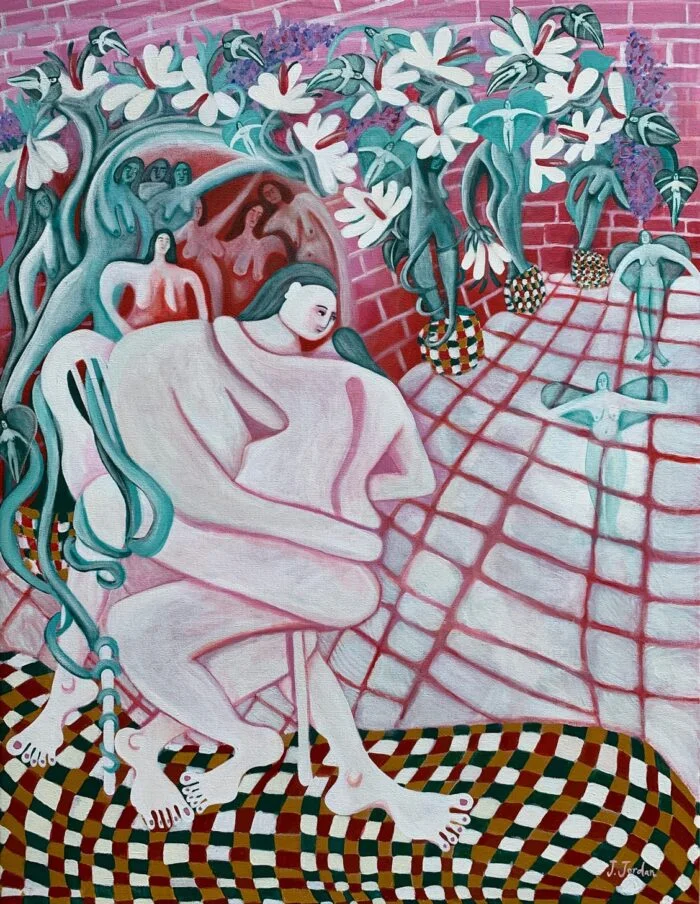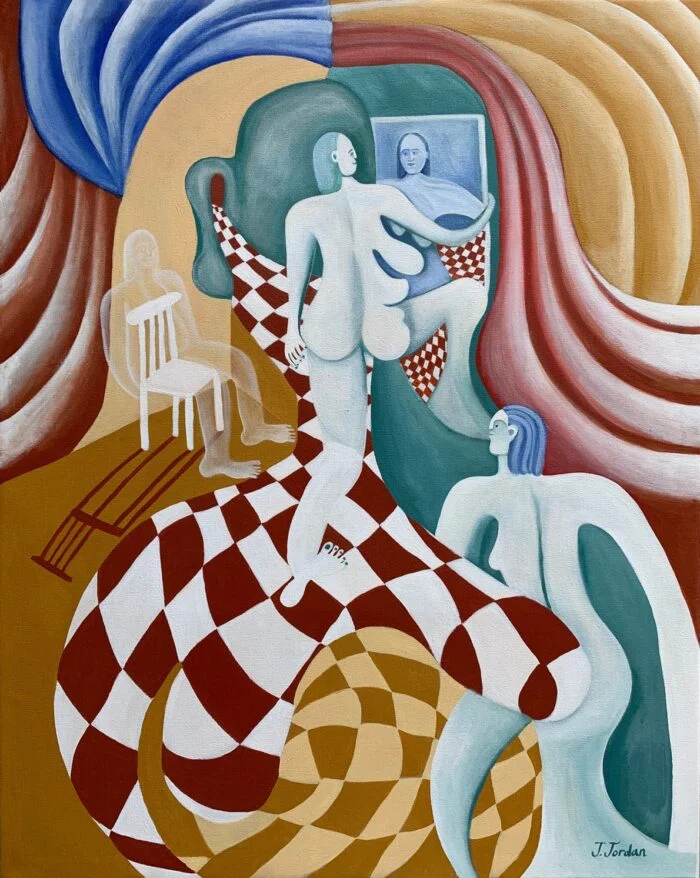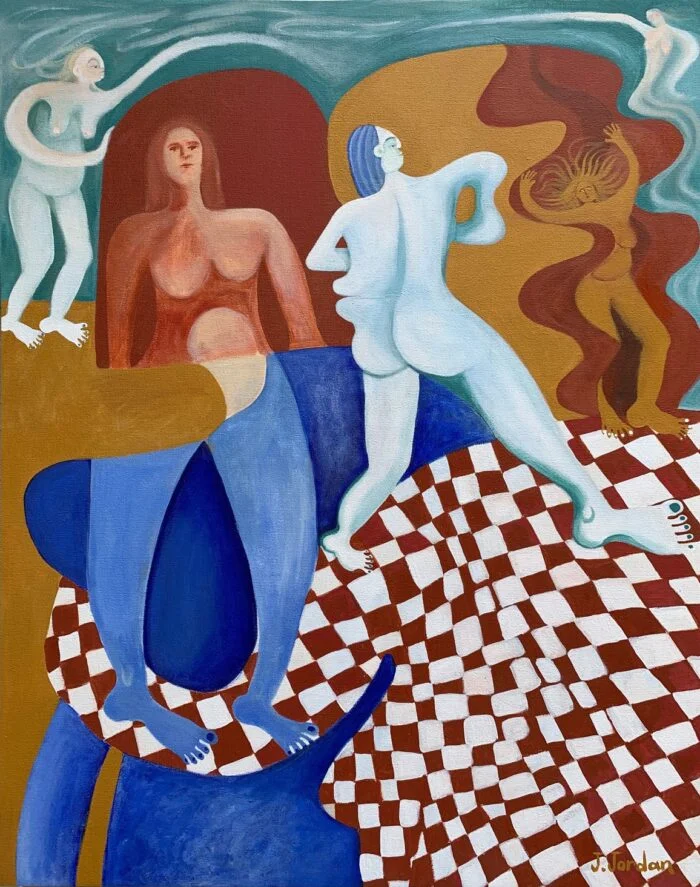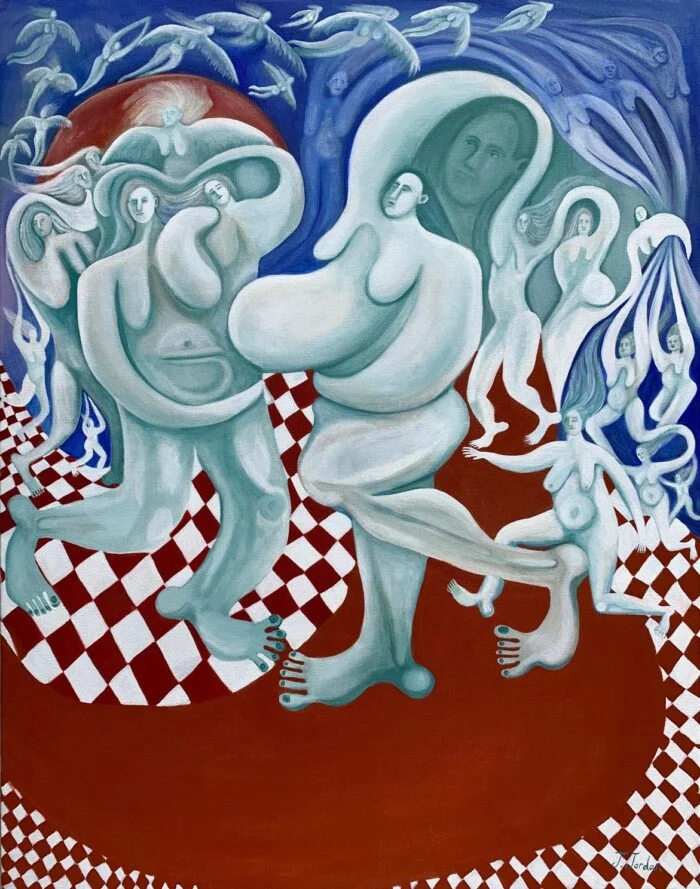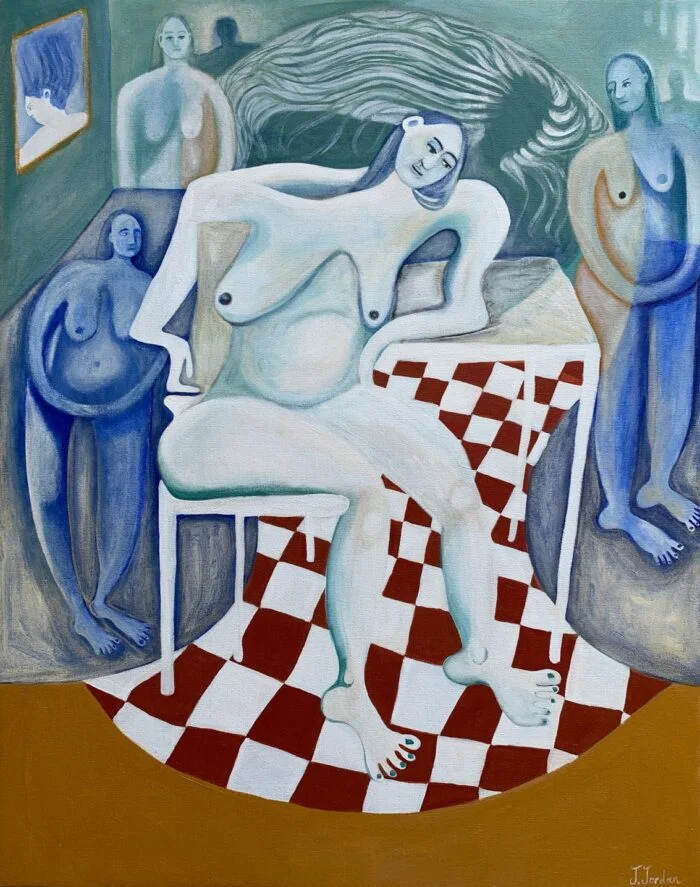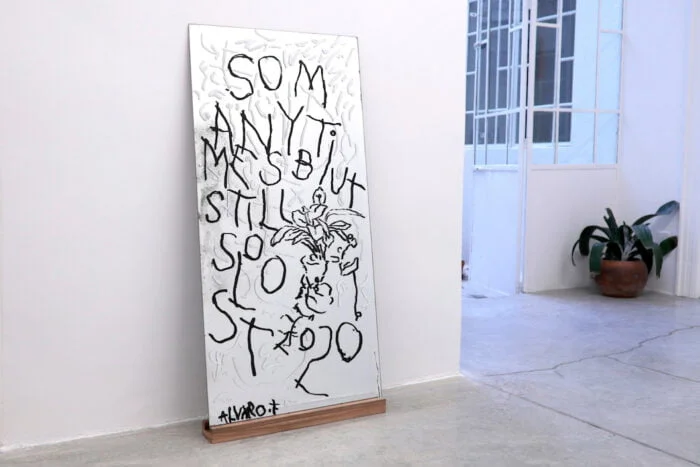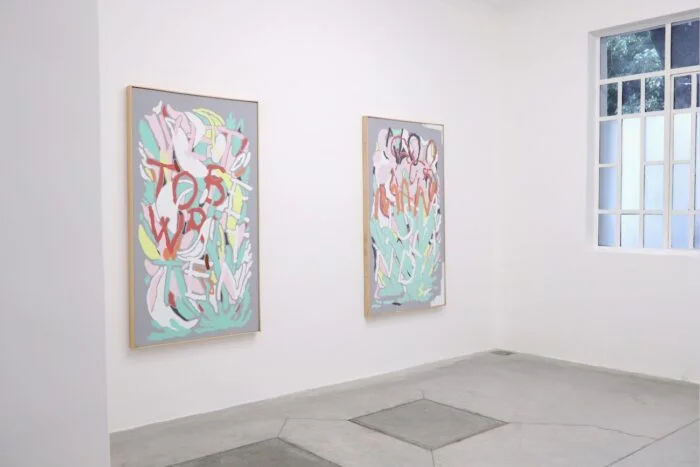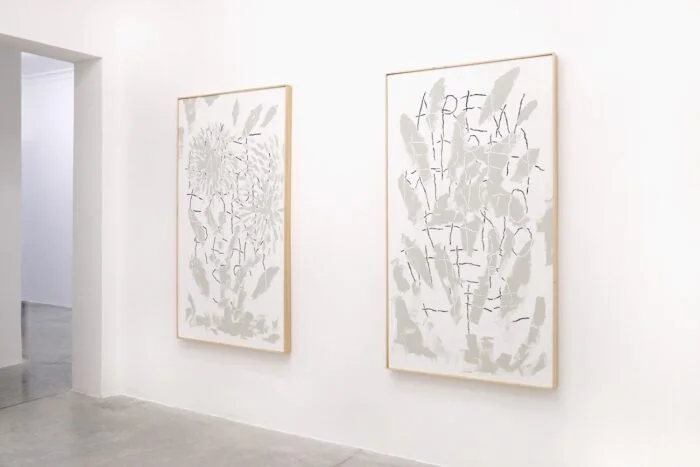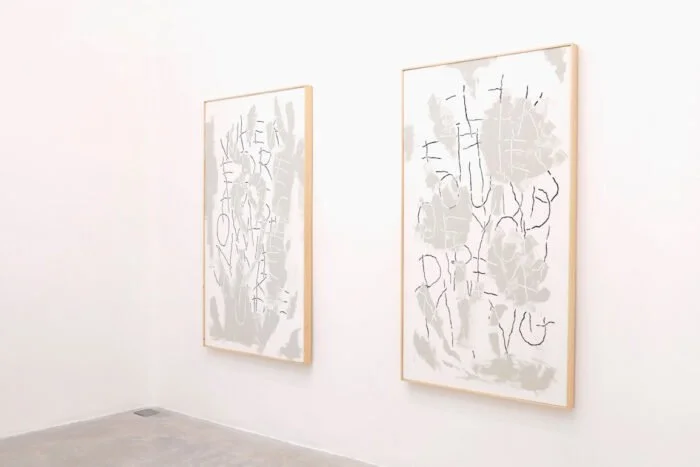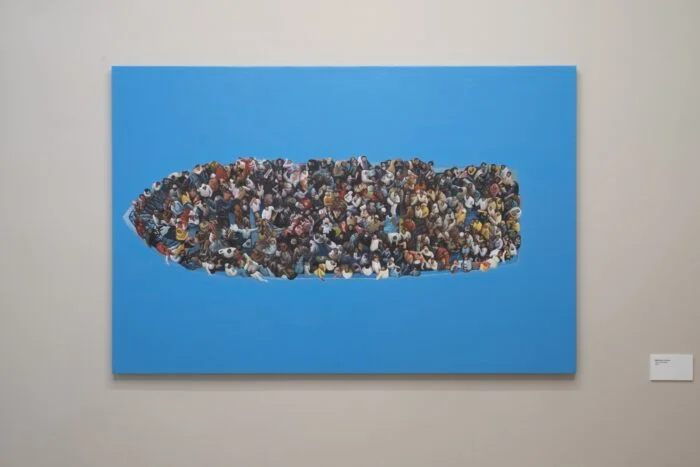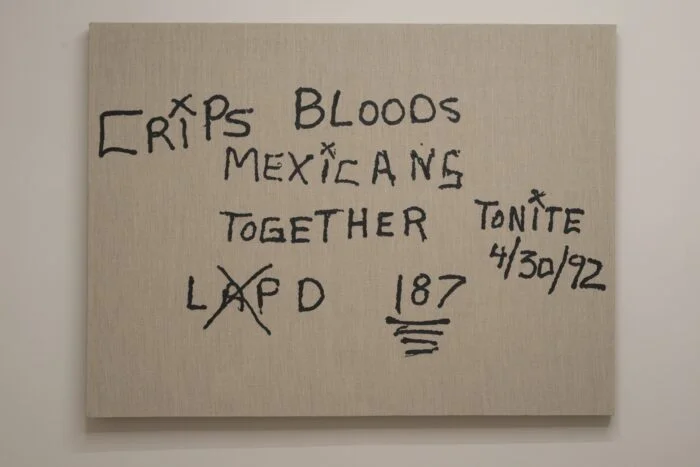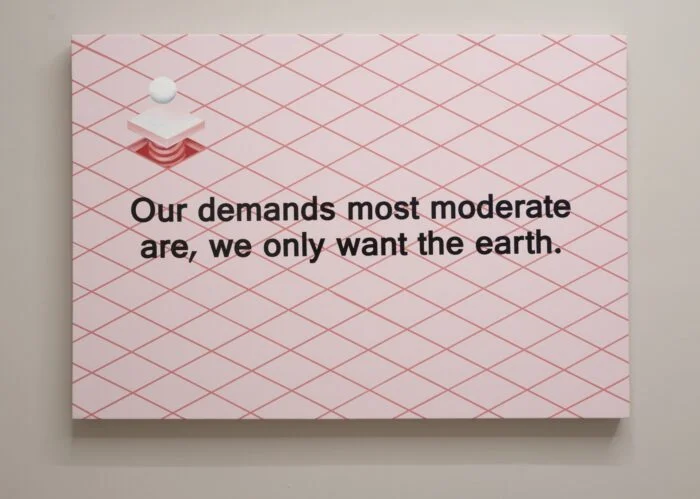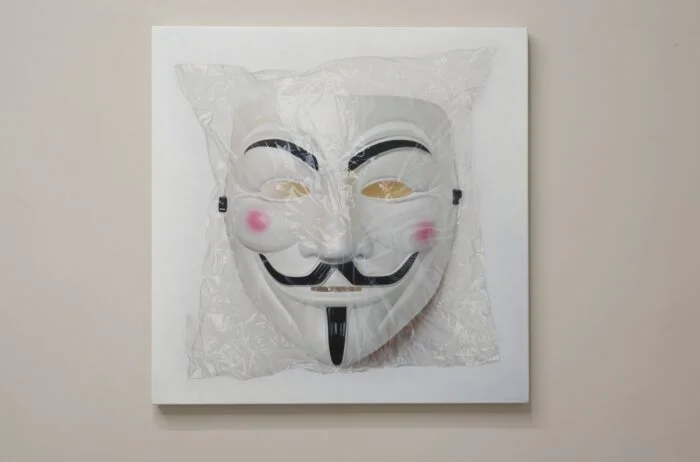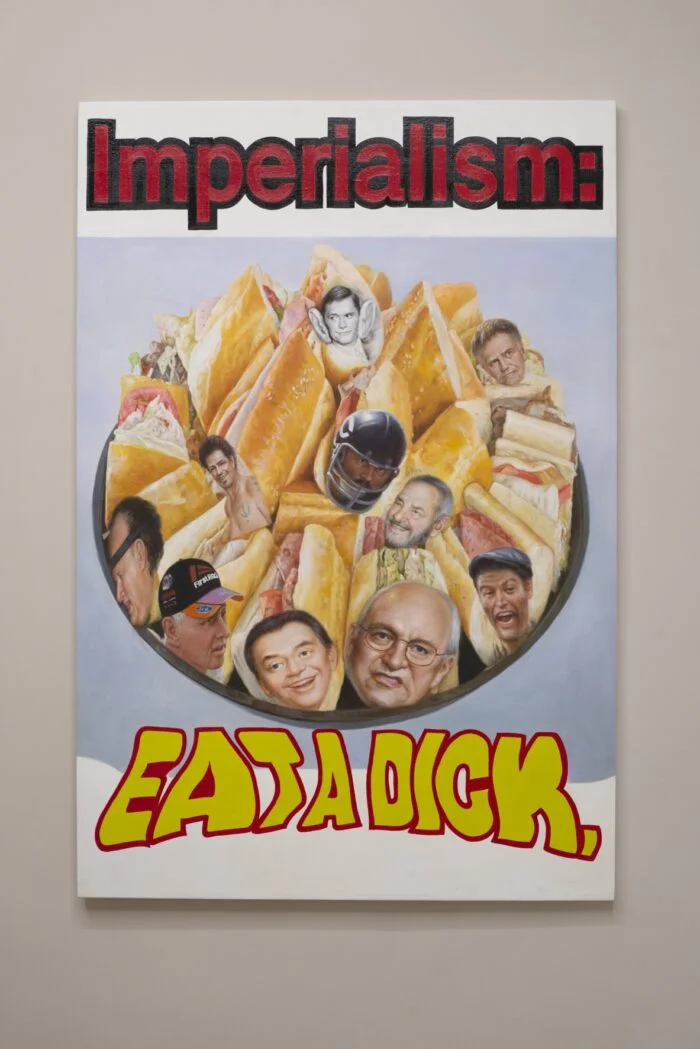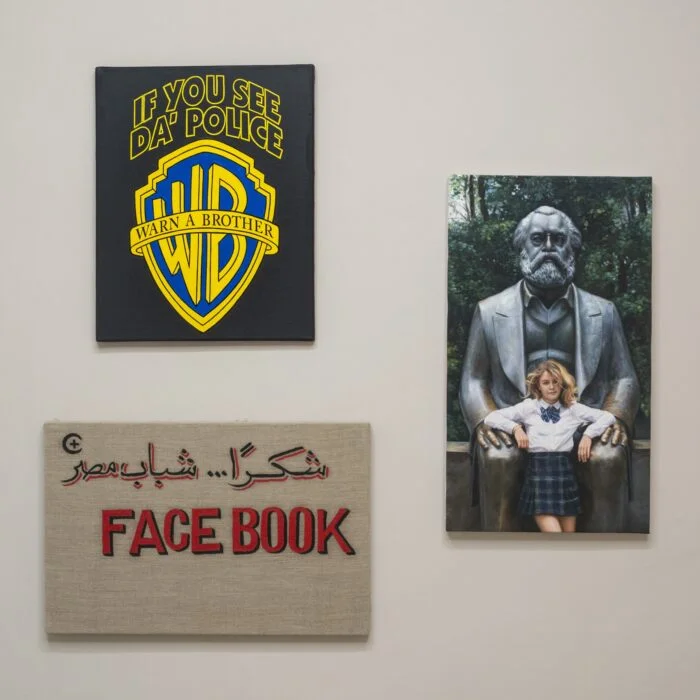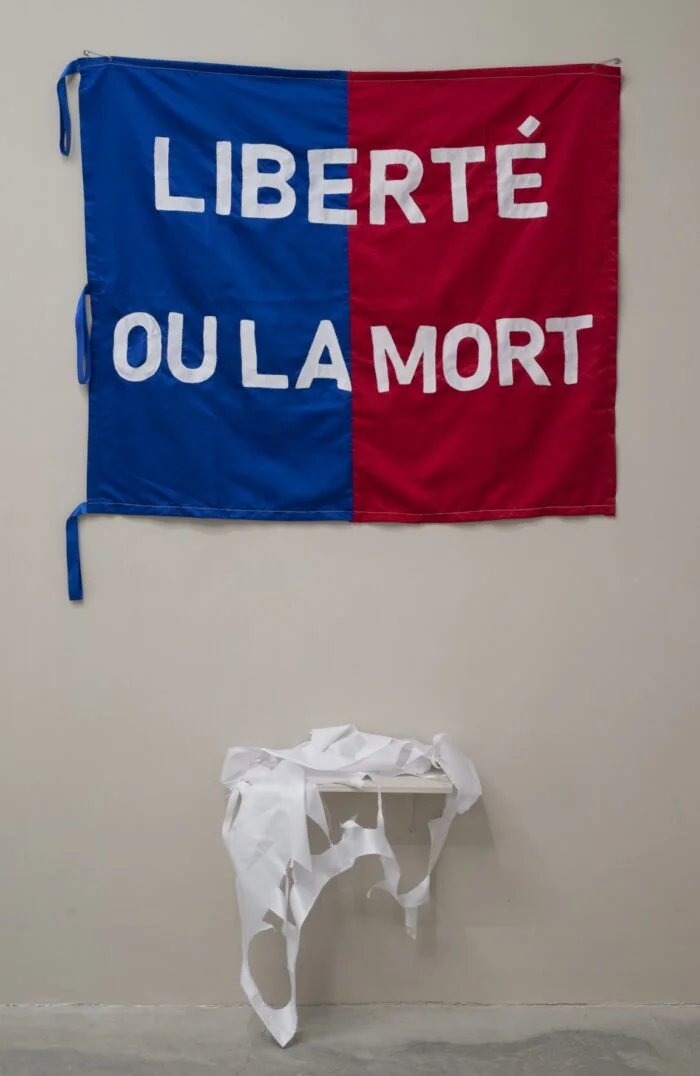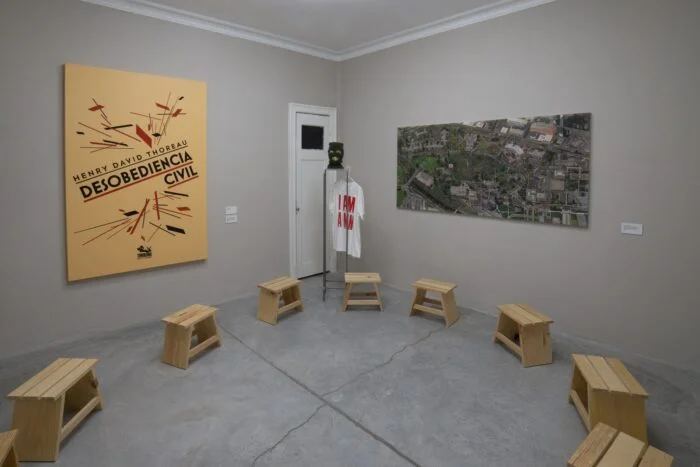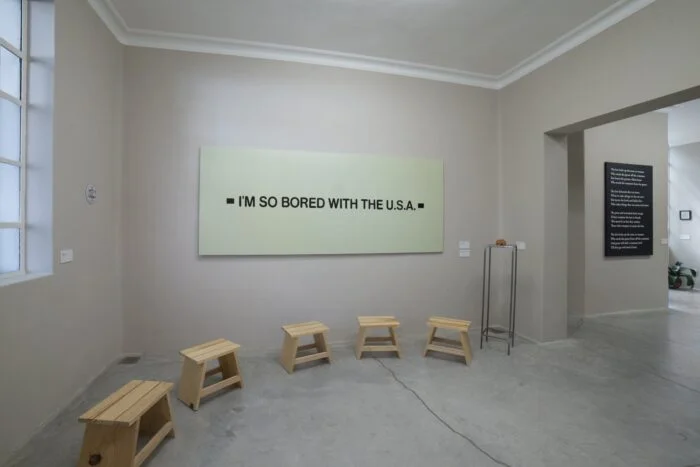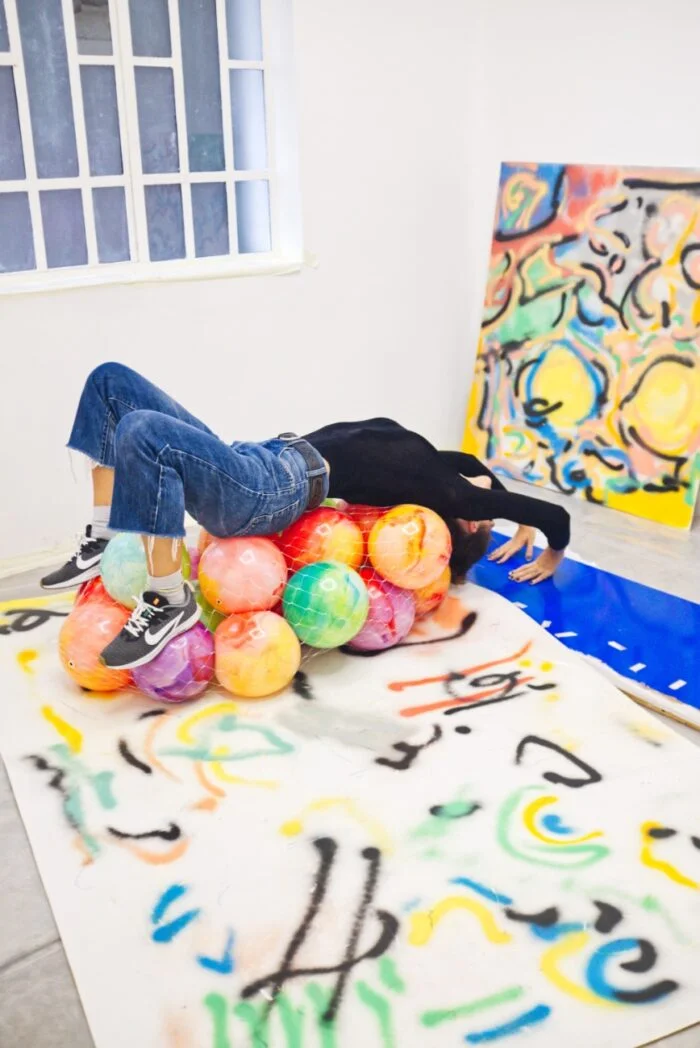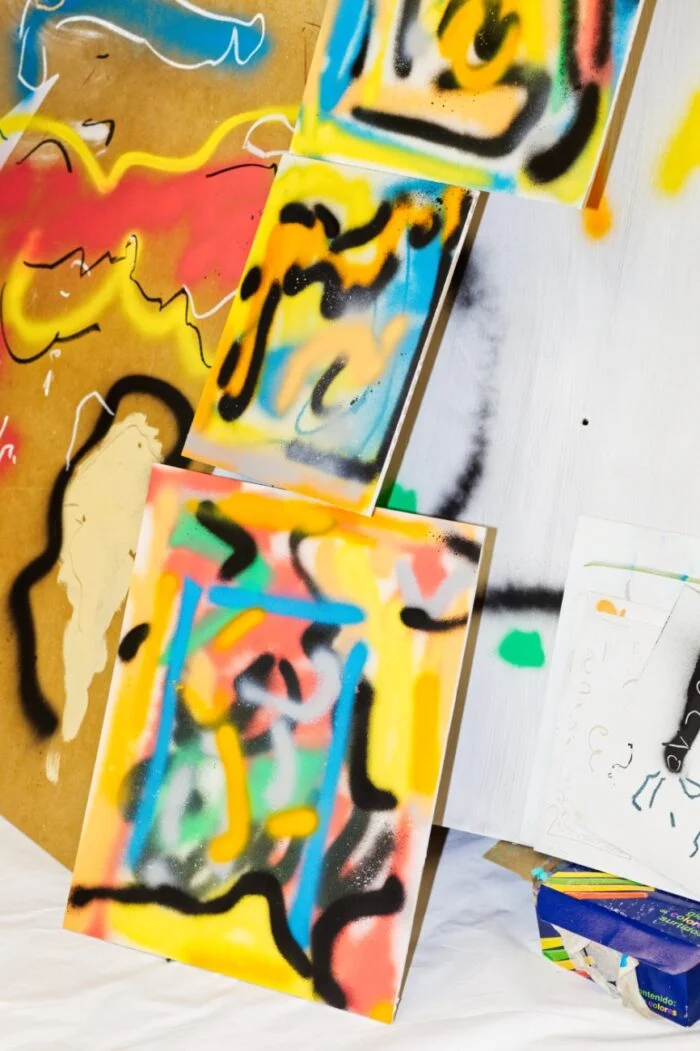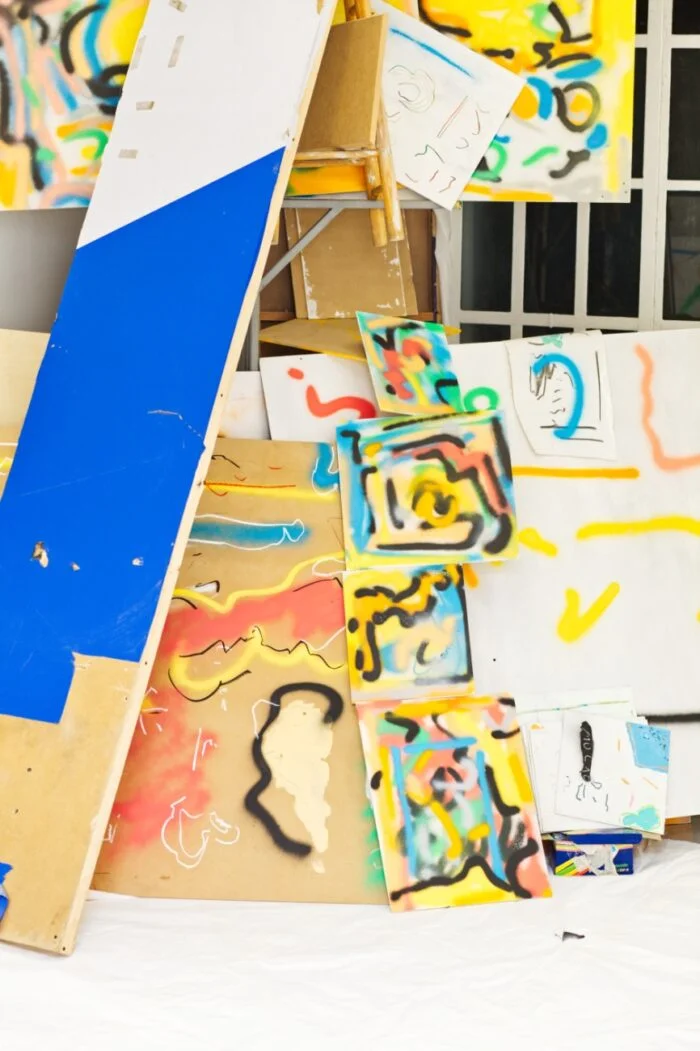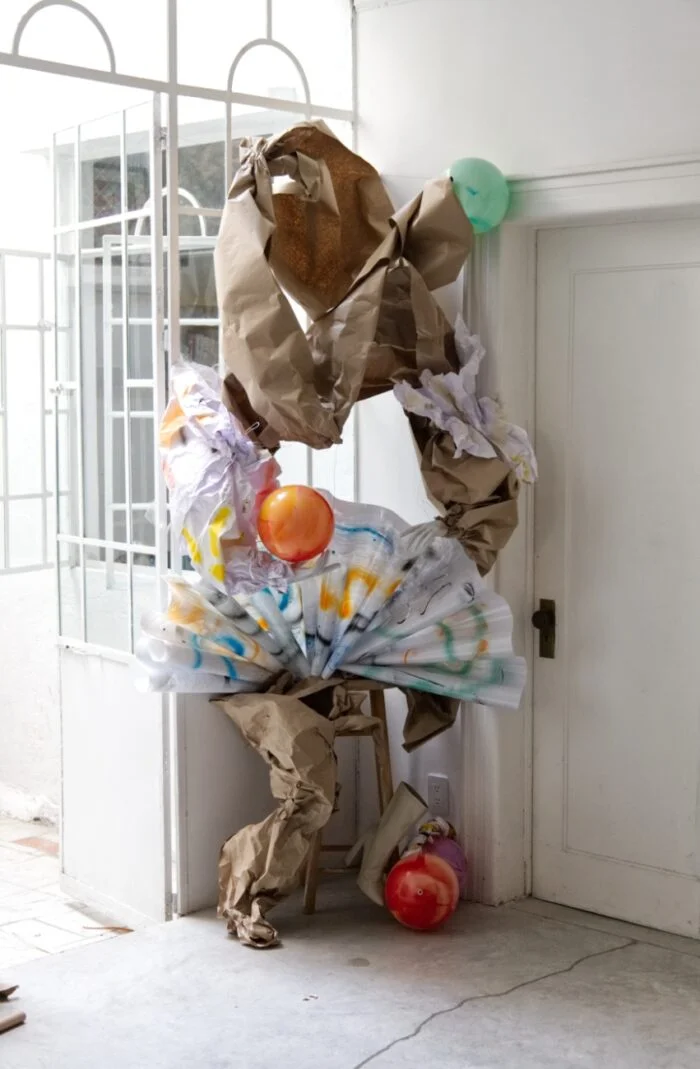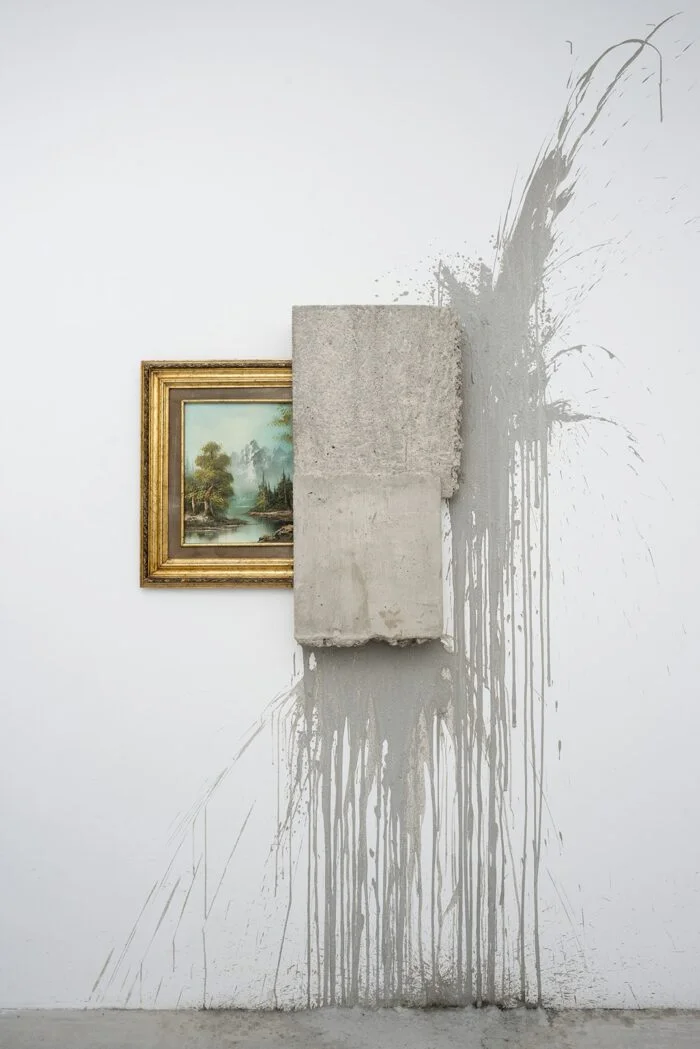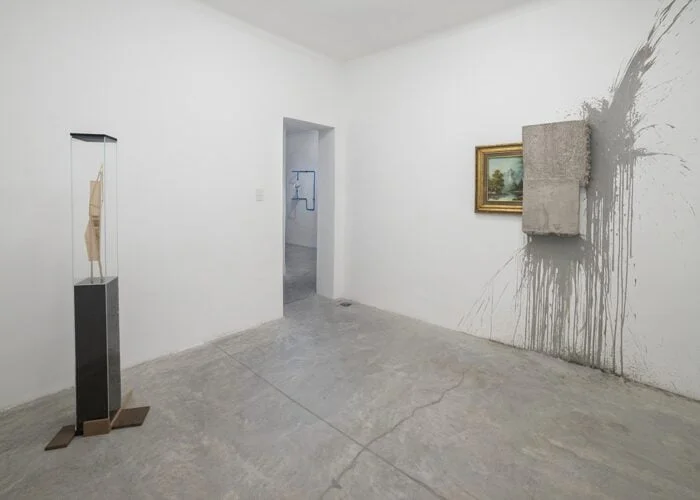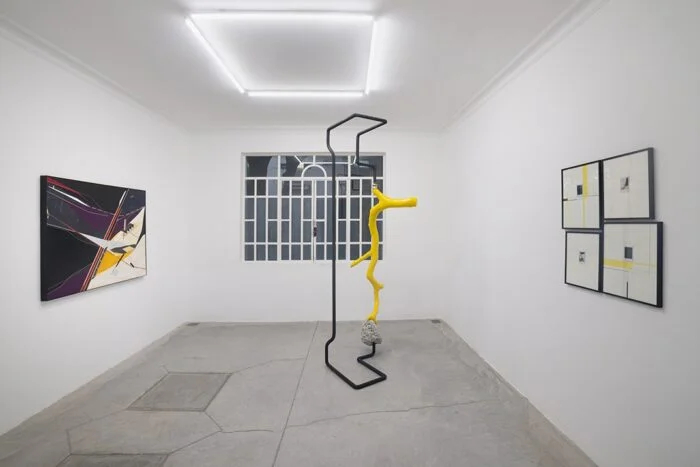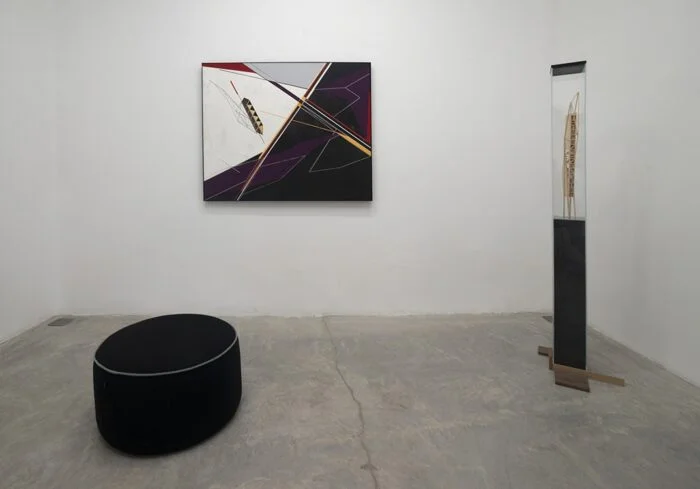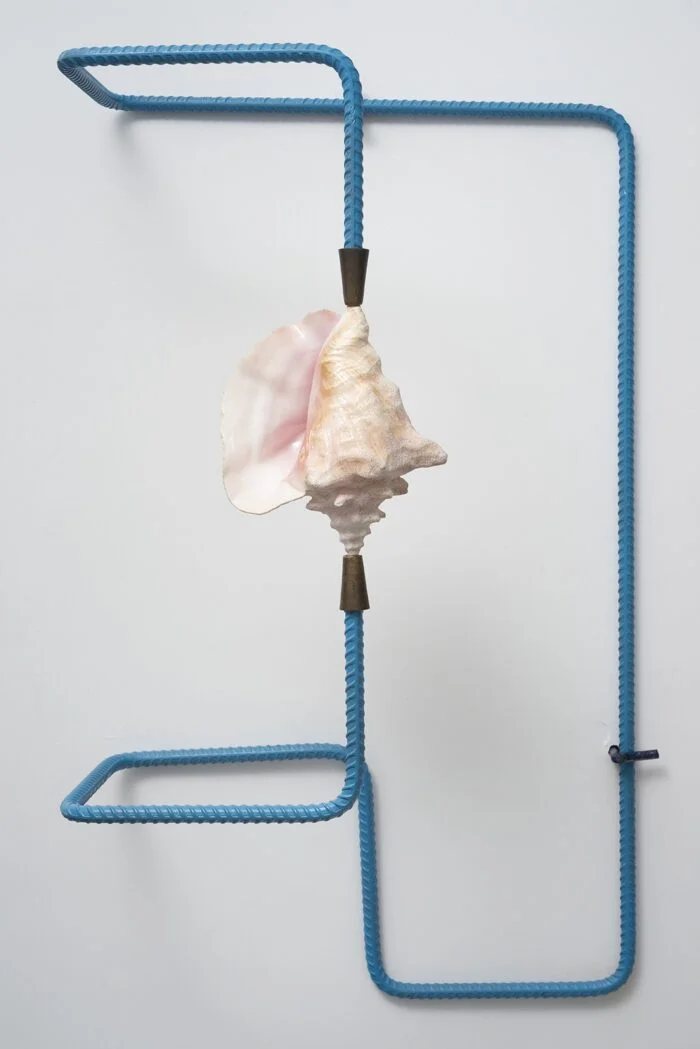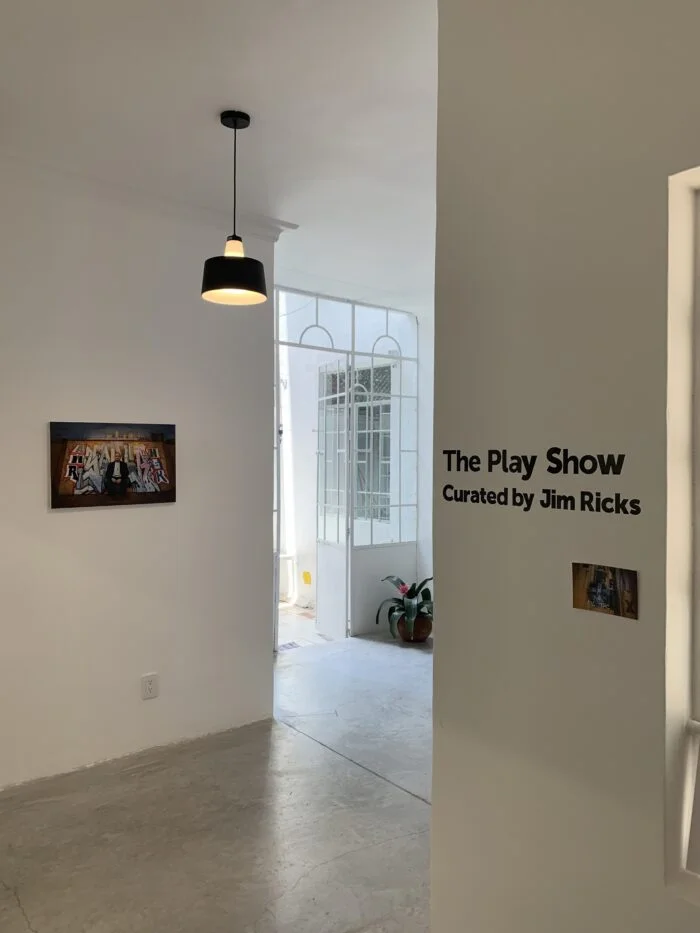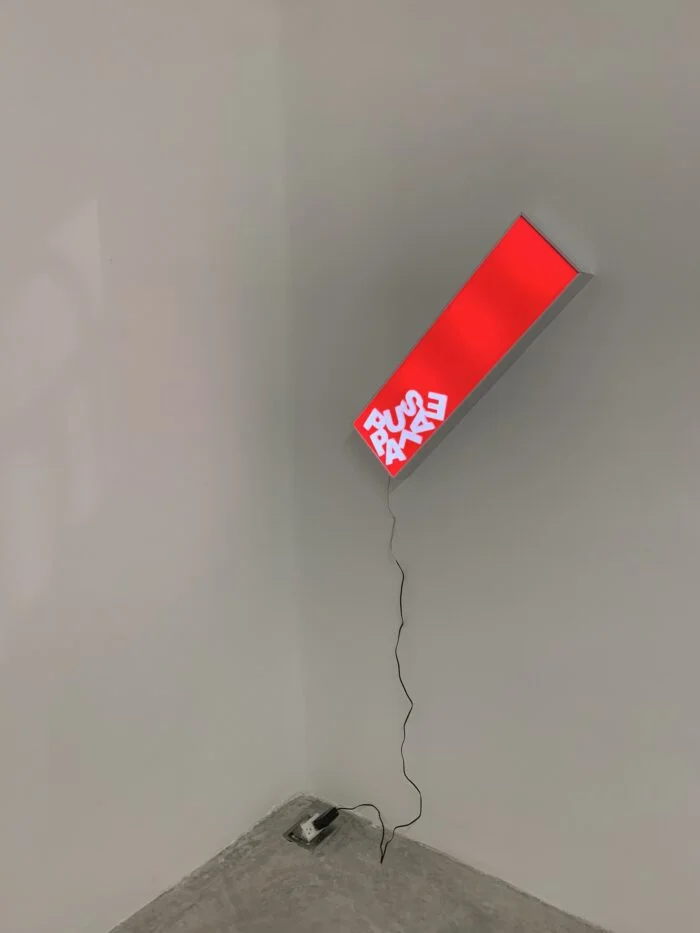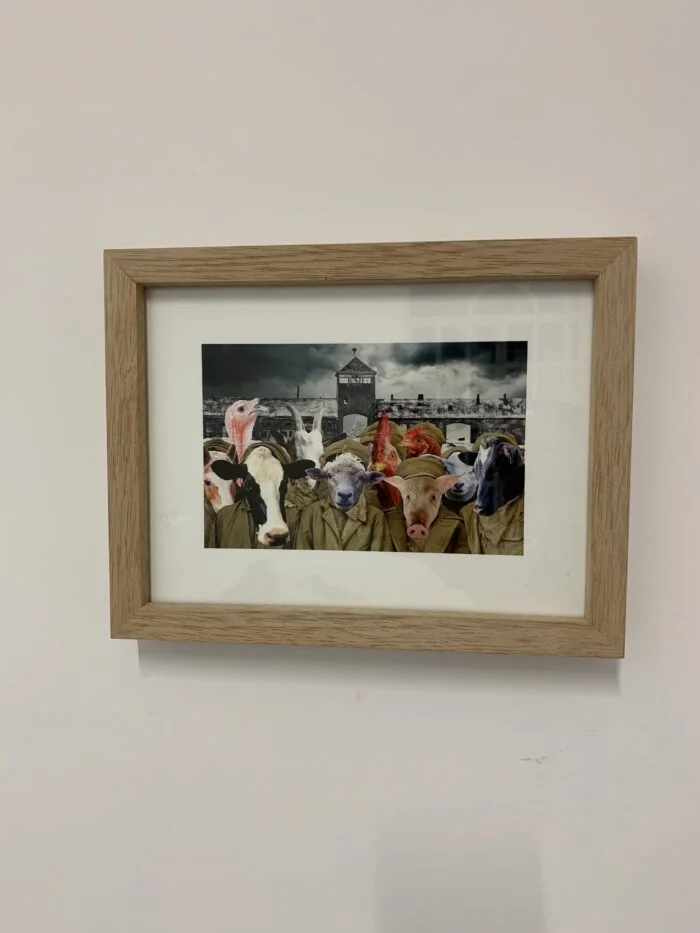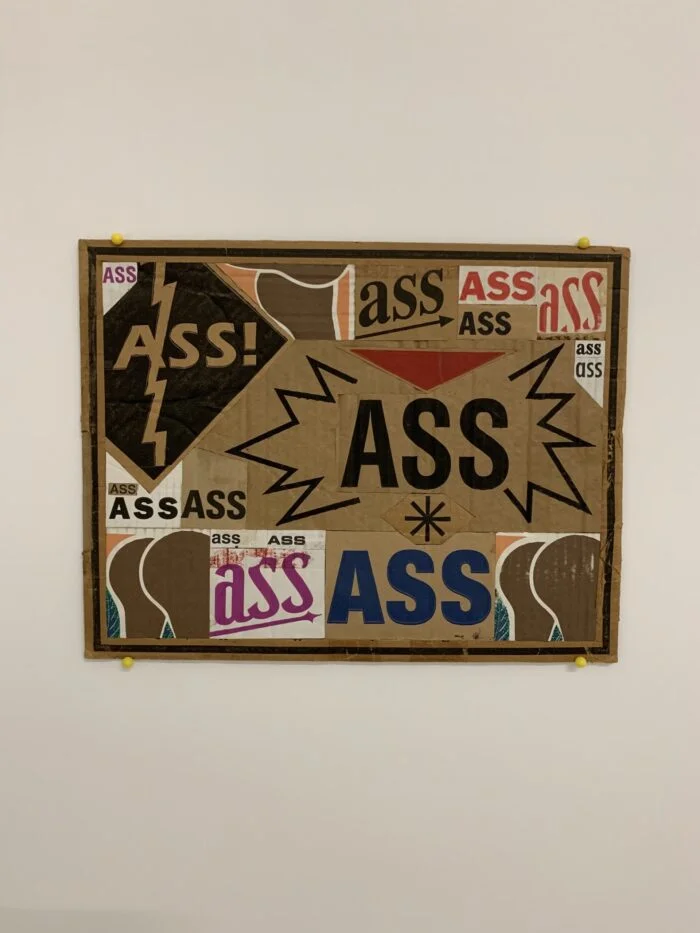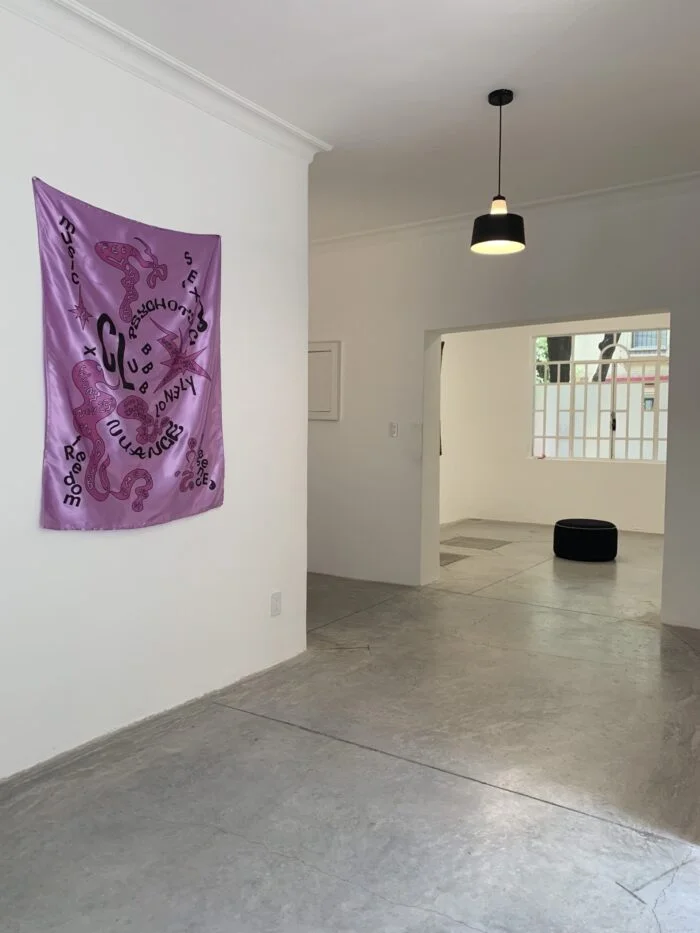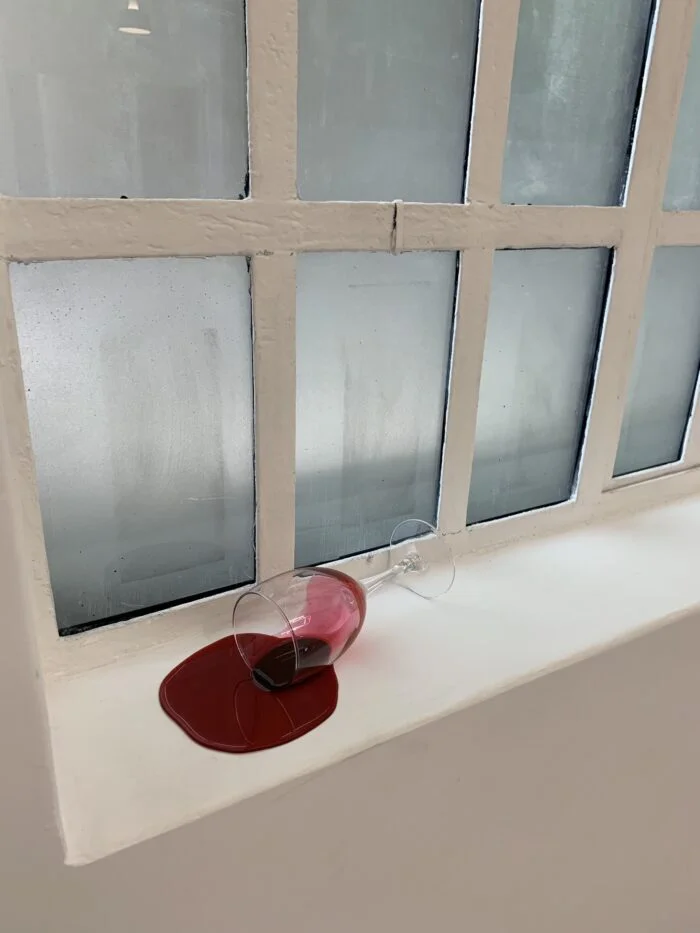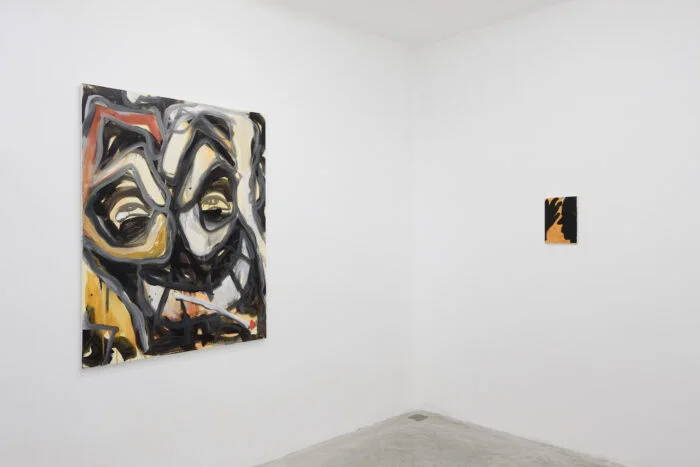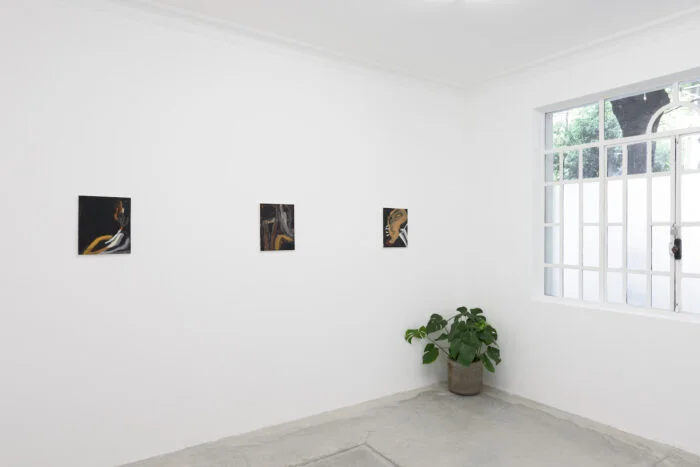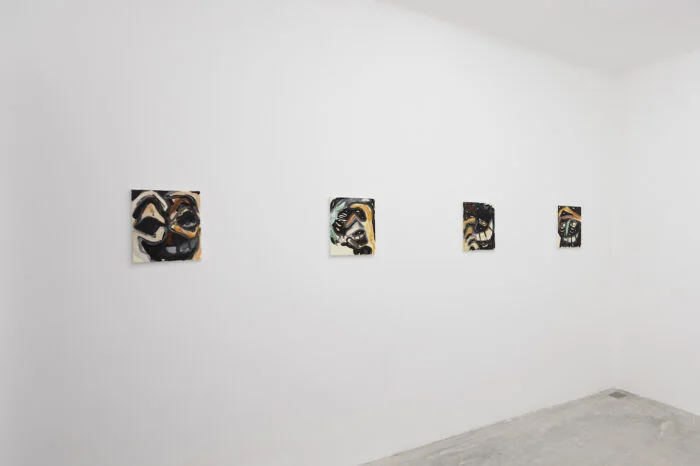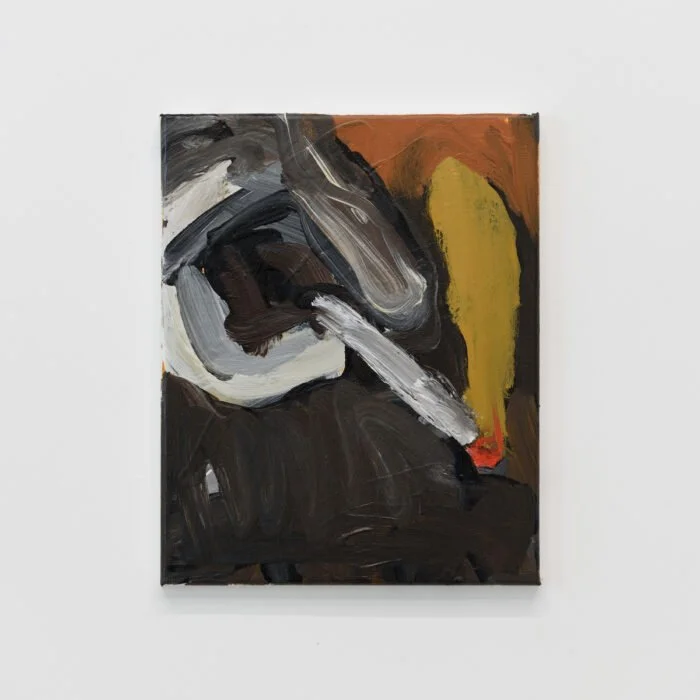MALAS MAÑAS
Miguel González nace en Querétaro, Querétaro, y reside actualmente en Monterrey, N.L. Hasta ahora, su práctica se concentra en el dibujo y la pintura. Su trabajo es narrativo, aunque a menudo tiene momentos en los que la línea y el color se desprenden de su función simbólica y recuperan una naturaleza abstracta. Los contenidos e ideas varían con el tiempo; sin embargo, predomina su interés por la cotidianidad, la representación del espacio y los cruces entre la representación y la identidad cultural de Monterrey.
“Malas Mañas” reúne crónicas visuales inspiradas en las calles y la cultura del noreste de México. Imágenes que buscan encuadrar ciertas atmósferas: una esquina a oscuras, el rugido de una troca negra bien placosa, el aire podrido que viene de las fábricas y los tubos oxidados, el rojo de un semáforo o el baile de a 15 pesos con una fichera en algún tugurio húmedo a deshoras. A través de cartografías sensibles, Miguel crea una narrativa cultural del lugar que habita e incorpora materiales que encuentra en el mismo entorno, como pedazos de madera que se convierten en marcos, ceniza que se vuelve pigmento y placas de cemento que se transforman en lienzos.
Egresado de la Facultad de Artes Visuales de la Universidad Autónoma de Nuevo León, sus exposiciones más recientes incluyen: Ciudad Abierta en Casa de la Cultura San Pedro (2025), Lo brutal en Galería Sitio Centro (2025) y The Brainwashing Machine en The Crypt Gallery, Londres (2024).
Festín
La relación entre la comida y el deseo ha estado presente en múltiples culturas a lo largo de la historia. Aphrodisiac Cookery: Ancient & Modern (1966), de Greg y Beverly Frazier, reúne recetas tradicionales creadas para despertar los sentidos. Sin embargo, con el tiempo, muchas de estas prácticas ligadas a la espiritualidad y la conexión con la naturaleza han ido desapareciendo. La industrialización de los alimentos y el distanciamiento de los ciclos naturales han contribuido a la pérdida de estos rituales, que alguna vez formaron parte esencial de la vida cotidiana.
Las ideas sobre el género y las expectativas en las relaciones actuales también han cambiado la forma en que vemos estas tradiciones. La lucha por la igualdad ha llevado a cuestionar costumbres que, en algunos casos, reforzaban roles injustos. Pero este cambio también ha abierto la puerta a redescubrir las prácticas afrodisíacas desde otra perspectiva, donde el deseo es una expresión de libertad y poder personal. La exhibición Festín, conformada por mujeres artistas, retoma estos conocimientos ancestrales y les da un nuevo significado en la relación entre lo culinario y lo carnal, explorando la evolución de la sensualidad en la comida a lo largo del tiempo.
Esta muestra es una invitación a redescubrir la magia de los alimentos como símbolo de placer y conexión humana. A través de una mirada contemporánea y femenina, nos lleva a cuestionar nuestra relación con la comida, el amor y la espiritualidad, rescatando tradiciones que pueden enriquecernos en el presente. En este diálogo entre pasado y futuro, la exhibición nos anima a celebrar la diversidad de expresiones del deseo y a reconsiderar el papel de los rituales en nuestra vida actual.
– Daniela Villareal
NEAR DEATH, STILL LIFE
Amigo de silicón, o enemigo del cromo en este teatro de mimos? Quién aquí todavía está vivo, o a quién todavía le importa si somos guapos, atléticos, y exitosos? Si no puedo olerte, cómo sabes si soy como tú? ¿Cómo sé si eres como yo? Te pareces a mi, pero con mejor joyería, un culo más redondo, y una lengua más afilada. Palomea la caja que muestra la sinceridad del pez Tubícula Chusco y la fragilidad del Pez Piedra, y dirige todas las preguntas existenciales y metafísicas al cadáver en el lavatrastes. Actos en vivo y thirst traps, primera puerta a la izquierda.
A través de naturalezas muertas absurdas y retratos inhumanos surreales en sus pinturas y esculturas, Laura está respondiendo a una serie de pesadillas personales recurrentes con escenas sutiles de traición, decepción, y el conflicto psicológico con ella misma, y con el otro. Su fascinación con las réplicas abstractas, las imitaciones, y los curricanes o señuelos abren un discurso sobre la redefinición de un sistema de valores y responsabilidades que nos asignan en la era de la tecnología post-humana, generando cuestionamientos como —¿Qué tan profundo podemos fingir el deepfake? ¿Quiénes son los actores pagados, quiénes están vinculados, y quiénes se van impunemente manejando un Bugatti?
Los objetos domésticos reconocibles son tocados por murmullos de colores puntillistas brillantes que trazan selectivamente su camino hacia escenas surrealistas. Las paletas enjoyadas invitan al espectador a entrar, mientras que las sombras profundas y las combinaciones de cosas sin sentido presagian un juego sucio e insinúan motivos violentos justo fuera de la pantalla. Sus pescados vivos se posicionan en ensamblajes precarios con curricanes y solo curricanes como sustitutos de aquellos que encuentra Tiffin en sus pesadillas.
—Texto por Horselover Fat
Durante los últimos quince-viente años, Laura ha tenido una pesadilla recurrente. Se encuentra con un acuario improvisado—normalmente es un recipiente con capacidad para contener agua: tupperwares dentro de refrigeradores, un humidificador dentro de un clóset o un escenario en el que falta agua. En los contenedores de cada escenario vivían peces u otros animales marinos con enfermedades terminales. En los primeros 7 años de este sueño, alguien aparece para decirle que los peces murieron por su negligencia, que ella lo había provocado. Después de esos 7 años nadie aparece, pero ella sabe que fue su culpa y se horroriza al darse cuenta de que ha causado tanto sufrimiento, aunque los peces no fueran de ella.
Para las criaturas en estos escenarios, la muerte siempre es inminente: se mueren de hambre porque olvidaron alimentarlos, nadan de lado en el fondo o apenas se mueven en la pecera, intoxicados por sus propios desechos. Hay periodos en los que Tiffin pone en pausa su práctica artística, y la retoma cuando las pesadillas comienzan a desaparecer. Los temas que la acechan son el abandono violento y un suave absurdo. Sin una comprensión clara de lo que los peces fantasmas intentaban comunicar, se volvieron el tema de su trabajo, sabiendo que, de alguna forma, le estaban revelando algo sobre su entorno y su psique.
……………………………
Laura Tiffin, nacida en 1980.
Nacida en EUA, criada en el sur de Nuevo México. Laura estudió en la Universidad de Nuevo México antes de trasladarse al Instituto Pratt en la ciudad de Nueva York y graduarse en 2004. Residió en Brooklyn durante más de 20 años y pertenece al registro de artistas de White Columns. Actualmente lleva dos años y medio viviendo y trabajando en la Ciudad de México.
CUERPO FLOTANTE
El óleo brama con una inquietante prisa desenfrenada, convergiendo en paisajes grises de iridiscentes destellos, cuya calma es irrumpida por una maraña lúgubre de cuerpos fragmentados que estallan en un apretón anónimo en el transporte público. La identidad del artista, Javier Jaimes (1983), con complicidad del viento, se disipa y se funde con los trayectos muertos, con los sueños, con el concreto, con el perfume de crisantemo húmedo que irradia del Mercado de Jamaica y el smog cansado en un instante borroso dentro del caos.
Cuerpo flotante, la segunda muestra individual del artista, es una narrativa visual y personal que funge como homenaje al Distrito Federal, identidad perdida de la hoy llamada “CDMX”. Evoca la fugacidad de las sombras, el andar cansado, el espacio onírico entre cada paso absorto en la nada, la urgencia de las contingencias ambientales, el baile efímero del rumor de las fábricas y el caos por las mañanas. Ciudad Nezahualcóyotl y Torre Mayor, se combinan en un inmaculado sueño artificial que reposa suavemente en el anonimato, que anhela y persigue un paraíso ilusorio, de tonalidades verde agua, verde bandera, verde pastel, una quimera urbana menos gris. Este recorrido nos invita a contemplar la fugacidad de lo cotidiano, el tiempo que irradia como un cuerpo flotante que corre de prisa intentando contener lo intangible de los sueños de asfalto entre nuestras manos.
(Texto por Pamela Sustaita)
OFRENDA
La galería se enorgullece en presentar la primera exposición individual de Kora Moya Rojo en México. Kora es una pintora española, cuyo trabajo se desarrolla alrededor de la fluidez, la nostalgia y la naturaleza. A través de la reconstrucción de sueños, imaginaciones y memorias en dibujos y lienzos encantados, Moya Rojo crea mundos misteriosos que habitan el espacio liminal entre lo consciente y lo inconsciente.
Para esta exposición, Moya Rojo toma como punto de partida la flora endémica del país y la simbología religiosa. La artista nos presenta un lugar de confort que nos hace regresar a la naturaleza en un viaje trascendental.
TODAS PARTES
Daniela Elbahara se enorgullece en presentar «Todas Partes», la tercera exposición individual de Ricardo González en la galería. Pensando en la trayectoria, celebramos la mitad de la carrera del pintor mexicano y nuestro quinto aniversario.
Este nuevo conjunto de pinturas al óleo fue producido recientemente en la Ciudad de México, donde el artista se mudó temporalmente desde Nueva York. Su estudio actual se encuentra en el vecindario donde creció y, en cierto sentido, se ha estado reconectando con sus primeras motivaciones para hacer arte. Este proyecto también ha sido un encuentro con las «sombras» de su infancia que podrían estar acechando en su entorno actual.
Las pinturas están realizadas de manera que la mano emotiva está omnipresente en los trazos y en el dinamismo de las imágenes. Mirando de cerca las obras, siempre hay una mano o manos como buscando o sosteniendo algo. La riqueza de la pintura al óleo, con su empaste y sus brillos siempre cambiantes, le da a las obras una carga poderosa en la que las «sombras» pueden existir para recordarle al espectador de su presencia.
«Estas sombras son partes ocultas de nosotros mismos que siempre están presentes, acechando en el fondo, mirándonos sonriendo como invitándonos a aceptar su inevitabilidad. No son necesariamente «malas» o «buenas», por lo que se presentan a la vez encantadoras y amenazadoras, según el juicio o la proyección del espectador. Las «sombras» aparecen reunidas o solas, sonriendo al espectador. A veces están completamente fragmentadas, flotando como una forma abstracta, y otras veces se manifiestan en la forma de un gato negro mirándonos».
El título se refiere a que estas entidades oscuras están en todos nosotros, todos llevamos las nuestras y también la sociedad en su conjunto, como la idea de Carl Jung del inconsciente colectivo. Estos son nuestros impulsos, nuestras manías, nuestros deseos y motivaciones provenientes del profundo y oscuro mar de nuestro ser.
«El suyo es un viaje marcado por el cuestionamiento de la propia experiencia, hasta llegar a la risa soberana, al no saber y a una Presencia en nada distinta de la Ausencia, donde la mente se mueve en un mundo extraño donde conviven la angustia y el éxtasis».
Georges Bataille, «Experiencia interior» (1943)
CUANDO LA MAREA BAJA Y LA BRUMA DESAPARECE
Daniela Elbahara Gallery presenta la exposición colectiva “Cuando la marea baja y la bruma desaparece” En esta muestra se explora la complejidad infinita y subjetiva de la intimidad de los artistas. Cada pieza ofrece una ventana a su imaginario, algo íntimo y privado, que al exhibirse genera una complicidad.
Inés Bárcena nos sumerge en un mundo surrealista, donde cada pieza constituye su diario de vida, mezclando relaciones familiares e interpersonales genera escenarios en los que se fusionan lo terrenal y lo astral.
Jesi Jordan y su automatismo surrealista nos lleva a una exploración de su psyche, a través de diálogos internos y radiografías emocionales arraigadas a la naturaleza y la feminidad, llena de formas orgánicas y figuras místicas, Jesi nos invita a su jardín interior.
Las fotografías de Daniela Villarreal reflejan una intimidad colectiva dentro del universo de lo femenino. Los momento contemplativos capturados por Villarreal muestran la relación cuerpo-naturaleza.
Los lugares se impregnan en nuestros recuerdos y es así como Hugo Robledo, a través de construcciones oníricas y utópicas basadas arquitecturas modernistas Latinoamericanas, reconstruye espacios que resuenan en nuestra memoria.
La esencia de las obras de Mauricio Villarreal es elegante, nostálgica y familiar, así como etérea. Su pintura representa los estados de ánimo y las presencias espectrales que resuenan con él y los espacios que habita.
Con figuras ansiosas y atmósferas sombrías, Ricardo González presenta personajes arraigados en su inconsciente. Su inspiración proviene de los entornos urbanos que lo rodean como la CDMX y Manhattan, NY.
La relación afectiva que desarrollamos con los objetos de nuestro cotidiano está contenida en la obra de Amber Cobb. Sus piezas retratan las contradicciones entre el comportamiento y el deseo humano a través de elementos reconocibles.
El presente y el pasado que coexisten en la obra de Mario Zoots. A través del collage, el artista abre una ventana a la cultura pop de los 90 ‘s, reposicionando elementos visuales como portadas de libros usados dándoles un nuevo significado cargado de nostalgia.
Así la oscilación entre la figuración y la abstracción que se manifiesta en esta muestra se presenta como un tapiz vibrante, tejido por hilos que vulneran. Esta exposición abraza la idea de que no podemos mostrar toda la esencia, sino sólo pequeños fragmentos que reflejan la riqueza y complejidad de la intimidad artística.
Objeto sin Objeto
Helena Garza es una artista de Tlaxcala, México, con formación en música clásica y artes visuales. Si bien su enfoque principal es la pintura, en los últimos años ha experimentado con diversas tecnologías y softwares en su proceso creativo, incluyendo live coding, realidad virtual, biotecnología y prácticas performativas, lo que le ha permitido fusionarse con otras disciplinas y audiencias.
Inspirada por la estética del vaporwave, el cyberpunk y las teorías científicas y filosóficas sobre la post humanidad y la percepción de la realidad, Helena propone un espacio/entidad que se encuentra en la frontera entre lo abstracto y figurativo, al que ella denomina «meta figurativo».
De la misma forma que el campo digital hace eco de la realidad física, pero funciona sobre sus propias reglas, este espacio/entidad se alimenta de su proceso de contemplación y observación de la naturaleza tanto la materialidad, reinterpretando, empujando los objetos al borde de lo reconocible.
CUATES
DANIELA ELBAHARA presenta “CUATES”, una exposición grupal de la pintora mexicana Sofía Ortiz y el artista multidisciplinario estadounidense, Brendan Fagan.
El nombre de la exposición hace referencia a la estrecha relación que existe entre los artistas, quienes aún sin compartir parentesco poseen una conexión.
Sofía Ortiz (Ciudad de México, 1988), graduada de las universidades RISD y Yale, y Brendan Fagan(Portsmouth, Virginia, 1978), reconocido en la escena artística de Nueva York, se hicieron amigos compartiendo estudio en la Ciudad de México. Al partir caminos, continuaron frecuentándose y reflexionando sobre su trabajo. Su punto de encuentro fue el dibujo, el uso predominante del azul y las formas orgánicas.
La obra de Ortiz y Fagen comparte un interés por la capacidad que tiene la naturaleza para dominar, inspirar y aterrorizar. Sus dibujos muestran “la disonancia entre la realidad y la percepción”. Es decir: lo que vemos no es el mundo observable, sino una representación más fiel de lo que perciben desde sus perspectivas personales.
En esta exposición ambos artistas producen obra inédita. Fagan utiliza un nuevo soporte: la mezclilla. Primero dibuja sobre ella con cloro y luego pinta con óleo, produciendo texturas similares a las reacciones químicas. En su obra, las plantas y las partes del cuerpo cambian de tamaño constantemente, alterando nuestra comprensión del entorno y sus componentes como una experiencia psicodélica.
Ortiz realiza paisajes en acuarela y tinta china sobre papel. El tamaño del formato que usa es grande o pequeño, apuntando también a la importancia de observar lo general o el detalle. A la artista le gusta observar la naturaleza, y a Fagen observarse a sí mismo y a los demás. Ambos comparten una sensación de outsiders pero son capaces de conectar con lo sublime.
The Ghost Has No Home
Daniela Elbahara se enorgullece en presentar “The “Ghost Has No Home” la 1era exposición individual de Mario Zoots en el espacio.
El artista originario de Denver, muestra una serie de pinturas creadas con una variedad de técnicas análogas y digitales, en las cuales reutiliza anuncios de moda de los 80´s, reformando y aplicando lavados de pintura monocromática mismos que separan la imagen de su contexto original.
En «The Ghost Has No Home», Zoots despliega una narrativa críptica que evoca la naturaleza espectral de la memoria, la identidad y el lugar. Basándose en teorías del arte como el rizoma, un concepto introducido por Gilles Deleuze y Félix Guattari, la obra de Zoots encarna la naturaleza no lineal e interconectada de la experiencia humana. Su trabajo también guarda un eco distintivo de la noción de «aura» de Walter Benjamin y su decaimiento en la era de la reproducción mecánica, ya que cada imagen fragmentada pierde su contexto original y adquiere un nuevo significado en el ensamblaje.
Las fotografías encontradas, seleccionadas y ensambladas, evocan una atmósfera etérea que sumerge al espectador en un espacio liminal entre lo conocido y lo desconocido. Al yuxtaponer elementos dispares, Zoots crea una sintaxis visual que desafía las narrativas lineales, dejando la interpretación abierta a la imaginación del espectador y sus proyecciones psicológicas.
«The Ghost Has No Home» alude a la esencia elusiva de la memoria, la identidad y el tiempo. Esta presencia espectral, no atada a una ubicación singular, sirve como metáfora de la naturaleza fragmentada de nuestra experiencia colectiva, que se desplaza a través del pasado, el presente y el futuro.
Así mismo, la muestra “The Ghost Has No Home» encarna un enfoque atrevido y provocador. El collage como técnica puede percibirse como una re-apropiación de elementos que pertenecen a otros. Esta noción resuena con los antecedentes grafiteros de Zoots, donde «robó» espacios de edificios y vagones de tren en todo Denver para dejar su huella. Para el artista, el elemento de riesgo es esencial dentro del proceso creativo; sin él, el arte no puede existir verdaderamente.
SOBRE MARIO ZOOTS
Mario Zoots (n. 1981) vive y trabaja en Denver, CO, donde recibió su MFA de la Universidad de Denver en 2014. Como artista basado en la óptica, Zoots emplea modos de apropiación y collage, alterando imágenes producidas en masa, fotografías encontradas e iconos de la cultura pop para re imaginar y cuestionar los sistemas de creencias que dan forma a nuestro mundo.
El trabajo de Zoots se ha mostrado a nivel nacional e internacional en museos y galerías, incluido el Museo de Imagen + Sonido de Sao Paulo, Brasil (2010); Galería Preteen, Ciudad de México, MX (2012); K Contemporary, Denver, CO (2017, 2019, 2022), Straat Museum en Amsterdam (2022) Museo de Arte Contemporáneo en Denver, CO (2023) y más recientemente en Daniela Elbahara, Ciudad de México, MX. Además, su trabajo aparece en The Age of Collage: Contemporary Collage in Modern Art y Cutting Edges: Contemporary Collage, publicado por Gestalten, Berlín, Alemania. Está representado en Denver por K Contemporary y en la Ciudad de México por Daniela Elbahara.
Zoots es curadora de Collé, una publicación que explora el mundo del collage contemporáneo, y director curatorial de nuevos proyectos, una iniciativa artística diseñada para fomentar la experimentación y la colaboración.
Resplandor sólido
El color se desvanece frente a nuestros ojos. El atardecer se apaga, la flor palidece y la piel envejece. El color es un fenómeno transitorio, siempre en estado de cambio. El color es un sistema de fe. La física ha explicado que el color no es inherente a los objetos, sino que se trata de una interpretación que elabora el cerebro humano a partir del espectro de luz que reflejan las superficies. Si el color es información mental, ¿en qué consiste su materialidad? La presente muestra es una exploración subjetiva acerca de esta pregunta.
La materialidad es un aspecto fundamental de las obras que componen esta exposición. En una época en que la desmaterialización de la imagen parece un hecho consumado, la economía, las industrias y las emergencias ambientales nos recuerdan que la realidad sigue siendo tangible y muy concreta. En la era digital, las industrias extractivas son más lucrativas que nunca: litio, cobre, grafito, entre muchos otros minerales, son arrancados de la tierra para satisfacer la incesante demanda de las nuevas tecnologías.
Hacia finales de los años 60, la escritora Lucy R. Lippard reflexionaba acerca de la creciente desmaterialización de los procesos artísticos, en los cuales el artista se encargaría de diseñar las obras para luego ser ejecutadas por artesanos, de manera que el acto creativo sería más mental que manual. A cinco décadas de aquella transición, personalmente, asumo la postura de que el proceso artístico no solo es mental, sino también manual. Pienso que la curiosidad por las ideas es tan importante como los hallazgos que genera la experiencia táctil de los materiales. En este sentido, mi proceso implica tanto el aprendizaje de aspectos del oficio como la estructuración del pensamiento.
La elección de ciertas técnicas y materiales asociadas a arte de otros tiempos responde a la búsqueda del proceso manual del color. El oficio medieval de la tempera grassa, antecedente directo de la pintura al óleo, requiere un sistema de trabajo estrictamente organizado y sistemático. Por ser un procedimiento pictórico preindustrial, carece de la inmediatez de trabajar un color ya preparado previamente. Esta cualidad inconveniente deviene en un estado mental repetitivo y meditativo. Por otra parte, la cerámica ha acompañado a la humanidad desde la antigüedad hasta nuestros días sin interrupción, en casi todas las culturas, y continúa como un material de uso cotidiano. Encuentro fascinante su fragilidad en cuanto que objeto, y su persistencia en cuanto que material. Los restos arqueológicos nos confirman que la cerámica sobrevive a la ruina de las civilizaciones.
Las obras de esta exposición abarcan un campo semántico acerca del espacio construido. En el margen de la representación y la abstracción, espacios mentales ambiguos revelan espejos de agua, contenedores, fuentes y tuberías. El cuerpo de agua como reflejo-ilusión tiene connotaciones culturales tanto del mundo espiritual como de la higiene y la salud física. Los marcos-resplandores que aparecen en las pinturas refieren a la experiencia del color a través de las pantallas. Las proporciones de las obras son 16:9, 4:3 y 1:1, que son formatos presentes en los monitores y en la fotografía.
La pintura es un impulso vital que ha acompañado a nuestra especie: fijar el fenómeno cromático que siempre tiende a esfumarse. Las pinturas más antiguas de las que se tiene conocimiento se encuentran entre la oscuridad, protegidas de la luz en cavernas. La profundidad de la tierra es oscuridad total, y, por lo tanto, ausente de color. Aunque la luz hace posible el fenómeno del color, la luz tiene el poder de destruir el color. El color aparece durante un tiempo finito. La idea de lo duradero ha acompañado al arte desde la prehistoria. Es un campo para pensar que finalmente nada es eterno, que la vida y el color son preciosos porque se consumen.
Hugo Robledo
Ciudad de México, febrero de 2023.
Piel que llora
La obra de Mauricio Villarreal está poblada de seres etéreos que escapan a cualquier intención de sujetarlos. Sus cuerpos —algunas veces discernibles, y otras veces apenas insinuados— están formados por el mismo elemento que los recuerdos y los sueños. Se trata de un manto translúcido que se puede atravesar y tocar, pero no atrapar, como una voluta de humo o el vapor que queda después de una ducha caliente. Estos personajes etéreos son autorretratos en diferentes tiempos y perspectivas de la vida del artista, pues se originan de experiencias y de la exploración del subconsciente. Además, los personajes actúan como arquetipos de condiciones sociales, comportamientos humanos y temores comunes.
Para Mauricio Villarreal, el arte posee un potencial de sanación emocional. La pintura funciona como un umbral de acceso a una realidad espiritual que se manifiesta en la memoria, los deseos y el estado anímico tanto del creador como del espectador que encuentra un vínculo de empatía en la obra. Piel que llora es una exposición que se refiere al acto de somatizar aquello incómodo que no es expresado. El eczema es una afección de la piel que en ocasiones resulta de reprimir emociones perturbadoras. Para el artista, el acto de pintar genera un espacio de meditación para descargar en un medio no-verbal la energía contenida. En las obras, esta energía se presenta de una manera cuidadosa, reservada e introspectiva. En términos formales, la serie de pinturas mantiene una paleta de color concisa, con tendencia a la armonía monocromática, así como una composición sintética y sobria.
El cuerpo de obra que forma Piel que llora sugiere un espacio de empatía posible al experimentar la vulnerabilidad, el desamparo y la opresión, y la forma en que el arte puede ser una herramienta para hacer conscientes las heridas y así sanarlas.
Mauricio vive y trabaja en Monterrey, Mexico
PLAYLIST: «Nostalgia» Hugo Robledo
ARRITMIA
Arritmia,
eres torpeza momentánea que me recuerda a
un movimiento tartamudo de vida y muerte,
tratando de ser expresión.
Arritmia,
inmediato pensamiento y sentimiento,
dolor y conciencia, deformidad y regla,
vivencia y memoria.
Arritmia
detienes el movimiento -principio de
existencia-, suspendes en un espacio
sin oxígeno, sin movimiento.
Pintura eres arritmia,
pues detienes al mundo, suspendes
el tiempo, tartamudeas conciencias,
liberas pensamientos, reconstruyes
espacios, rompes fronteras mientras
anclas tus obstáculos.
Pintura, pellizcas el espacio commo
pellizcas el pensamiento,
arritmia
cierras mis ojos y dejo la luz
del sol por la luz del pensamiento
Pintura eres huella de una arritmia
fuiste y serás vivida.
SINFONÍA PSÍQUICA
Jesi Jordan, psíquica jubilada convertida en pintora autodidacta, revela dónde se quedan los espíritus. ¿Cómo se retira un psíquico de ver cosas? Los espíritus todavía la siguen y ella los captura mientras se demoran en las grietas de cada flor madura, pedales y arneses en lo profundo del seno de la tierra.
Las formas psíquicas se arrancan del aire y luego se pintan en forma sólida. En el interior verás que cada flor tiene su propia sinfonía cantada.
El lirio levanta el cuello y canta a sus semillas para que se duerman, mientras se sumergen en el corazón de la flor, dando a luz nueva vida con cada zumbido.
El polen llueve sobre los cantos de los cisnes mientras los cabellos de la tierra lanzan besos. Cada hebra florece un bastón que mantiene la melodía de sus notas de amor.
Siluetas suaves acarician los rayos sangrantes del sol sobre el naranjo cantor.
Una armonía de sonidos pintados que representan el fruto del espíritu.
WHEN A BODY MEETS A BODY
“Así como el sol brilla sobre todos, pendejos y santos por igual, la pandemia ha sido un gran ecualizador demostrándonos que siendo ricos o pobres, homosexuales o heterosexuales, negros o blancos… todos estamos en el mismo barco.”— Paul Lozano
“When a body meets a body” es la primera expo individual del artista Paul Lozano en la Ciudad de México. Al observar las composiciones de cada pieza, nos encontramos con la mirada crítica y humorista del artista que promueve el diálogo a partir de temas difíciles como la pobreza, la identidad de género, la lucha de clases y el racismo bajo la esperanza de unirnos y generar cambios.
Cuando Paul era más joven, su madre le enseñó que un lienzo guía los ojos del espectador para que puedan viajar por todas partes y darse un festín con la obra. Así mismo podemos mirar y apreciar la vida en todo su esplendor con curiosidad. Mirando no solo lo que nos parece bello, si no, asimilando todos los contrastes y detalles para que podamos apreciar lo que es diferente, incluso lo que es “feo”.
La obra de Lozano refleja una ansiedad profunda a raíz de nuestra situación actual, pero al mismo tiempo nos alienta a luchar por encontrar la felicidad.
Paul Lozano nació en Toronto Canadá en 1978 y actualmente vive y trabaja en la colonia Narvarte de la Ciudad de México.
CLEPSIDRA
Observe cómo se revelaban las imágenes de un nuevo cuerpo de trabajo a lo largo de esta última parte de la pandemia (Primavera/Verano 2021) cuando estábamos instalados en nuestra pequeña burbuja aislada junto al mar. Vivíamos con dos tipos de tiempo, uno conectado a los ritmos del océano, y el otro a nuestros dispositivos sincronizados globalmente, que nos mantenían en el trabajo, aunque el Internet y la electricidad fallaran a menudo.
CLEPSIDRA es un reloj de agua nocturno que se utiliza cuando se desactivan los relojes de sol. Las escenas de las pinturas de Carolina tienen lugar en la hora mágica o antes del amanecer, después de que prevalece el insomnio y se desprenden los gradientes de luz. Cuando la banalidad de los interiores enciende un espectáculo en el comedor y los tenues trazos de luz se encuentran con ojos sensibles, aún no acostumbrados a colores que parece antinaturales o de otro planeta.
A través de ventanas, puertas y reflejos en esferas de cristal, la presencia constante del océano está en el fondo, tan presente como nuestros dispositivos en el primer plano, pantallas táctiles que nos retienen en gestos maquinalmente predecibles de manos ansiosas. Correspondencias enviadas hacia ciudades abstractas distantes de esta isla. C espera la llegada de una respuesta. ¿El segundero fluye o hace tic-tac?
Miko Revereza, Noviembre 2021
“Es como ignorar el fuego en la cocina porque estamos en el comedor, explica Lauren a su padre en una novela apocalíptica de Octavia Butler. Me duermo, cierro el libro y pongo el teléfono en modo avión. Mis dispositivos pedagógicos acompañan la rutina de forma ubicua. Flotan con sus inminentes microluces rojas y azules. Aquí no hay calendarios, sólo alguna que otra clepsidra ilegal y mal.”
Texto extraído de correspondencias que la artista escribió a varios amigos durante la realización de Clepsidra. Las respuestas se imprimieron en forma de póster que se ofrece al público y acompaña a la exposición. Incluye textos de Ana Gallardo, Catalina León, Eduardo Navarro, Laura Petrecca y Lucia Hinojosa.
Carolina Fusilier (Buenos Aires, 1985) vive y trabaja entre México y Argentina. A través de su enfoque multidisciplinario explora conexiones entre humano-paisaje a través de narrativas intuitivas del futuro.
TRIPZITTER
Un ojo que mira a otro lado: tripzitter de Fabián Ramírez
I live on Earth at the present, and I don’t know what I am.
I know that I am not a category. I am not a thing — a noun.
I seem to be a verb, an evolutionary process-
an integral function of the universe
Buckminster Fuller
Una visión-acción que da materia a algo invisible dejando sedimentos, rastros y borrones de memoria. Un algo que manifiesta , un traslape, un ojo que mira a otro lado, pero atiende a la pintura como una base para entender y pensar cosas del mundo. Este es el escenario, crudo y secreto de Fabián Ramírez. Una deliberación anticipadora, un espacio invisible de todos los estados de ánimo, meditaciones y misterios, almacén infinito de frustraciones-descubrimientos.
Para Byung-Chul Han ocultar, retardar y distraer son también estrategias espacio-temporales de lo bello. El cálculo de lo semioculto genera un brillo seductor. Lo bello vacila a la hora de manifestarse. La distracción lo protege de un contacto directo. La distracción es esencial para lo erótico. Pienso que la obra de Fabián está interesada en los fenómenos que erotizan al mundo, una estética del acontecimiento que descubre-encubre y los prolonga ininterrumpidamente en la fisura, la ruptura y el hueco.
El interés de Fabian Ramírez por la Psicodelia, neologismo que sugiere que un algo del alma se manifiesta, parece comprender que el fenómeno que se gestó en los años sesenta del siglo pasado tiene que ver con la producción de deseos que se esfuerza por descubrir lo aún no consciente. Para Diedrich Diederichsen cada movimiento iluminista, crítico, de conceptos fuertes, avanza dejando tras de sí un rastro de baba de caracol de irracionalismo, poblado de imágenes. Fabián parece insistir que su trabajo pictórico, dibujístico y cerámico tiene que ver con el rol de la experiencia y la duración de esas imágenes borrosas por el tiempo, el mercado y el consumo, pero alteradas para volcar su significado. Un modo de simbolización que da forma a la extrañeza del mundo en una extrañeza reconocible.
El título de la exposición que se presenta en la Galería Daniela Elbahara da cuenta de esta consciencia, al alterar Tripsitter (cuidador(e) del viaje) por tripzitter (“zittern”: temblar)el sentido o acción de acompañar y dirigir el viaje psicodélico se ve transformado por el escalofrío que representa el entrar al umbral de una consciencia otra: El vértigo de la disolución condensa las antípodas: allí se alternan la angustia de la caída y el placer de la auto expansión. La muerte de ese yo sustancial y continuo puede ser, a la vez, liberación respecto de la densidad acumulada en él. En lugar de la unidad del sujeto, la danza del devenir: Una obra orgánica y fluida que reivindica la subjetividad radical que hace magia nueva en el polvoroso mundo y hace que cada momento sea un punto de vista de todo el tiempo, y toda la rareza, gloria y energía de la vida en nuestros pies.
Turn the page
«Aquí estoy, de nuevo en la carretera … ahí voy, paso la página». – Bob Seger
Mario Zoots y Amber Cobb normalmente colaboran como “Hardly Soft”, sin embargo, en esta ocasión se exhiben por primera vez juntos, pero individualmente. El título de la exposición “Turn the Page” es figurativo así como literal. Metafóricamente, pasar la página invita a nuevas oportunidades de cambio y crecimiento, reconociendo la situación que uno deja atrás. La exposición busca «pasar página» después de un año de cambios incalculables debido a la pandemia global, una administración política cambiante y el examen discordante del racismo sistémico dentro del tejido social de los Estados Unidos.
En un sentido literal, el artista de collage Mario Zoots, crea sus composiciones usando revistas antiguas LIFE (en Español) y Arizona Highways, pasando las páginas de las publicaciones para revelar convincentes yuxtaposiciones. Examina la espiritualidad y el sentido de exploración en sus nuevas obras, buscando inspiración en el paisaje del suroeste. El trabajo también marca un cambio del collage en papel a la reciente exploración de Zoots con la seda.
La escultora Amber Cobb invita a un nuevo capítulo en su proceso a medida que pasa de usar materiales como silicona y colchones a usar yeso, arcilla epoxi y madera. El trabajo anterior de Cobb exploró temas de la sexualidad, mientras que sus trabajos recientes consideran las expresiones del cuerpo y recuerdan la incomodidad de la adolescencia y las trivialidades de una fisicalidad cambiante. Las esculturas semi-funcionales crean un lenguaje en abstracción con 26 formas de letras, similar al idioma inglés. Dentro de esta exposición en particular, las esculturas deletrean la palabra: ROLES, cuestionando nuestras responsabilidades individuales dentro de un estado de cambio a veces inarticulado. Por sí solas, las esculturas en colores pastel emplean el humor y el juego a través de la articulación física, con obras como Little Finger y Spurts. Si bien las esculturas se destacan por sí solas como obras de arte, también son funcionales como muebles y una llamada al cuerpo como hogar.
Turn the Page invita al espectador a la exploración de nuevas expresiones en un mundo cambiante, brindando la oportunidad para el cambio tanto colectivo como individual dentro del paisaje que comenzamos a pavimentar a medida que salimos de un año de transiciones turbulentas.
FRUTOS
En la segunda muestra individual de Ricardo González en la galería, presenta pinturas nuevas de escala grande y mediana, producidas en la ciudad de Nueva York donde vive y trabaja. Habiendo crecido en la Ciudad de México y residiendo en el barrio chino de la ciudad de Nueva York durante los últimos 20 años, las pinturas de Ricardo siempre transmiten el estado de ánimo y la actitud de la vida en una gran ciudad. En esta nueva colección de pinturas, el espectador ve figuras masculinas y femeninas solitarias de un tamaño más grande que la vida real. Sus representaciones de frutas así como la imagen de un gato negro siniestro adquieren una presencia animada. Sus pinturas son personales y están alimentadas por su entorno circundante.
Parecen estar pintados con una rapidez rítmica, dejando en el camino un rastro de temperamento y expresionismo. Las pinturas de Ricardo son temperamentales y están cargadas de narrativas ambiguas, que en lugar de apuntar a un significado específico, lo evaden y se abren a las posibilidades. Posibilidades para que el espectador se inserte y experimente las pinturas de manera visceral y a través del lenguaje de la pintura.
La mayoría de estas pinturas pasan por diversas transformaciones. El proceso es intuitivo y abierto a oportunidades, riesgos y cambios de planes, como la exploración guiada por pistas en la pintura. La gama de ideas que sirven como puntos de partida se puede derivar de un dibujo que se hizo a partir de una película, una parte de otra pintura o una improvisación basada en una composición o esquema de color. La imagen final no es una imagen preconcebida sino que se encuentra a través de la pintura. “Frutos”, el título de la muestra, sirve como referencia a este proceso.
CORO MUDO DE NUBE Y CHARCO
Alfonso Reyes se refiere al coro griego con estas palabras:
El coro funciona rítmicamente, como un instrumento dinámico por donde estalla […] la carga emocional precipitada en el fondo del ánimo […] Y por eso es fuerza que el coro esté presente a todos los acontecimientos y hasta a las revelaciones secretas: para conocer el drama y ponerse en contacto con él; para sentir, para emocionarse,
y desahogar […] la emoción […], la piedad, el terror.*
*Reyes, Alfonso, 1996. “Las tres «Electras» del teatro ateniense”, en Obras completas. T. 1: Cuestiones estéticas, Fondo de Cultura Económica, México, p. 30.
La pintura no nos habla con palabras, más bien nos comunica desde el origen de las ideas, que son las imágenes: es una comunicación directa. A través del ojo la imagen se transforma en pensamientos y emociones. La mirada descubre la profundidad de la existencia, que es primero muda, y luego —por necesidad de los pensamientos— engendra palabras. Un recién nacido llora después de dar su primer respiro, al ver la locura y deformidad del mundo. La adultez es la codificación de toda esa deformidad.
Las nubes se desintegran en lluvia, lluvia que crea charcos. En las nubes imaginamos formas y en los charcos vemos nuestro reflejo. Las nubes son el espejo de la imaginación; los charcos, el reflejo de nuestra perversión. Las pinturas son nube y charco. La libertad de la imaginación se encuentra en la nube; la esclavitud de nuestros problemas, en el charco. En la nube descansamos y en el charco preguntamos. La nube es el fenómeno, mientras que el charco refleja al fenómeno pensante: es una dinámica de lo interno y lo externo.
Todos somos una especie de héroes trágicos y lo que nos une es la manera fundamental de percibir lo que nos rodea. Percibimos el sol, la luz, la sombra y la materia, que luego son codificados con distintos nombres. Surgen las emociones y los sentimientos, para finalmente llegar a lo que concierne a todo ser humano: la moral y la ética.
La premisa de esta exhibición es que las obras mostradas componen un coro mudo de nubes y charcos, que invitan, a través de los personajes presentes en las pinturas, a ser parte del espectáculo de percibir la vida.
Rodrigo Echeverría, Ciudad de México, Febrero 2021
SISTEMA DE ILUSIONES
El cuerpo de obra presenta parte de una revisión histórica de la modernidad en América Latina para señalar las convergencias entre estética e ideología. De manera específica, se trata de una indagación acerca del Movimiento Moderno en la arquitectura y el contexto de regímenes autoritarios que sacudieron la región a lo largo del desarrollo de la Guerra Fría. Las pinturas evocan las formas arquitectónicas de la modernidad que expresan una intensa búsqueda estética y simultáneamente constituyen un dispositivo ideológico y político.
El espacio pictórico se vuelve un campo de juego entre la lógica y la fantasía. La búsqueda por una construcción compositiva racional coexiste con una seducción cromática y rasgos de anomalías espaciales. Aparece un lenguaje visual ambiguo situado en el límite entre abstracción y representación. La pintura ofrece posibilidades de superficie en la que se manifiestan paralelamente rastros de la imperfección manual y la frialdad de acabados industriales.
Imaginar el futuro es una de las operaciones que realiza la arquitectura. Las sociedades y los gobiernos de la modernidad proyectaron sus deseos de progreso a través del espacio arquitectónico. El brillo del optimismo ha envejecido al mismo tiempo que la superficie del concreto. Sus fisuras revelan un proyecto detenido que en nuestra época aparenta ser una lejana ensoñación.
A PREGNANT THOUGHT
Creo que la emoción, cuando no se siente, se encarna y luego impregna la mente subconsciente. Mis pinturas actúan como rayos X emocionales, donde pinto imágenes extraídas de mi psique y luego mapeo en mi cuerpo el lugar donde la memoria emocional se hincha y se reproduce. Estas pinturas son profundos monólogos internos que resuenan en mi interior.
Para hacerlas, tomo un pensamiento o sentimiento en especial y lo divido y subdividido en muchas partículas que componen mi psique. Los ojos, las orejas, la nariz, los pechos, la boca y la mente son pequeños espíritus psíquicos con sus propias personalidades únicas, todos tienen relaciones complejas entre sí. Las dinámicas que ocurren entre estos crean el sesgo de cómo se ve y se siente el panorama general.
En mis pinturas, hay dos universos paralelos, la experiencia más grande es mi comprensión actual de la realidad, y el mundo más pequeño dentro de ella es lo que crea esa perspectiva. Para dar más contexto al cuadro grande, muestro lo que siento que está sucediendo desde dentro.
Jesi Jordan
UN JARDÍN PROPIO
Un oasis se abre frente a ti. Y te protege del continuo bombardeo de mensajes del entorno digital en el que vivimos. Palabra, pintura y flor construyen este jardín imaginario, que debes hacer tuyo. En él puedes reflejarte como si de un espejo se tratara. 8 lienzos de gran tamaño y proporción digital (en concreto la proporción de pantalla del móvil) crean dos espacios separados. En ellos, los aforismos lanzan cuestiones al aire que bien pudieran ser familiares a cualquiera de nosotros. Todo esto se entrelaza con flores y plantas, haciendo complicada su lectura, obligándote a detenerte frente a cada una de ellas.
Tanto las flores como los aforismos funcionan como vehículo libre de significado para cada persona que las lea. Flor y frase comparten una frontera no tan delimitada. Ambas se entrelazan, nos detienen y nos hacen mirar de una forma más sosegada y despreocupada. Al igual que cargamos las flores de recuerdos, ideas y memoria, los aforismos nos permiten volcar un significado propio sobre sí mismos.
Por ello, las flores que vas a ver en las pinturas no son elegidas al azar. Desde hace siglos, las flores se han convertido en símbolos ambiguos y flexibles. Los egipcios usaron las mismas flores tanto para rituales mortuorios como para momentos de celebración. En concreto, hoja de laurel, olivo, amapola o girasol eran comúnmente usadas para cualquier tipo de ocasión. Así se convierten en recipientes de emociones, intenciones o recuerdos. Digamos que cada situación o persona se apropia de ellas. Tal y como quiero que los visitantes se apropien de mis pinturas. Y así es como se construye ese oasis del que hablaba. Desde el terreno personal y formado por plantas, frases y recuerdos. Todos en un mismo plano.
Esto me hace pensar también en la figura del artista como autor definitivo. En este caso, ¿No termina la obra en cada espectador? Mi alcance es limitado, y es precisamente la articulación de recuerdos y sentimientos de cada persona lo que completa cada una de estas piezas.
En esta obra busco que los pasos sean fáciles de comprender. Que veas mis piezas como decían decían Fischli y Weiss: ”Como los adornos de un árbol de Navidad, no los necesitas pero te ponen de buen humor”.
ASÍ LUCE LA DEMOCRACIA
Daniela Elbahara se enorgullece en de celebrar cuatro «1eros»; El primer aniversario de la galería, la primera exposición individual de Jim Ricks en el espacio (y su primera ‘muestra de pintura’), así como la primera exposición del 2020.
Primero que nada, es importante comentar que la muestra trata sobre la búsqueda del impulso democrático más que la búsqueda de una definición completa o una conclusión clara. Además, es una de las series en curso en las cuales trabaja Ricks.
El nombre de la expo, viene del canto de protesta que se popularizó durante la manifestación en contra de la Organización de Comercio Mundial (World Trade Organization) que se llevó a cabo en 1999 en la ciudad de Seattle, EUA. Con este título, Rick´s espera resaltar el umbral entre el fervor revolucionario y la ley de la calle; entre las altas aspiraciones para la humanidad y los clichés producidos en masa.
En “Así Luce la Democracia” , el artista de San Francisco, define la democracia como algo “entre lo absolutamente brutal y lo absurdamente banal”. De hecho, todo su trabajo, proviene de años de investigación pero también de encuentros casuales en la calle o directamente de las noticias y Amazon. Su proceso editorial demuestra una cuidadosa selección y una apropiación descarada. Seleccionando objetos del mundo real, los conceptos son innegables. Existen independientemente, como citas en una tesis o fuentes secundarias en Wikipedia. Ricks activamente busca colapsar el tiempo y el espacio mediante la selección cuidadosa de ejemplos de diferentes periodos – resistiendo así el impulso de hacer que los ‘eventos actuales’ funcionen con demasiada frecuencia, sean mal entendidos, y etiquetados solo como el típico arte político que a menudo destaca la disparidad dentro de la misma cultura.
Además, permítenos recordarte que la democracia proviene de la combinación de las palabras griegas demos y kratos … La regla del distrito o la regla de la gente común, o incluso la fuerza de la gente común. Hoy, casi todos igualan la palabra con la democracia burguesa o la posibilidad de votar por políticos profesionales en un sistema parlamentario cada pocos años. La definición de Rick se refiere a “las formulaciones orgánicas de las personas, algo que creo que es 100% instintivamente natural y humano, para crear orden y estructura. Creo que la autoorganización sin clases es innatamente humana. Actualmente esto normalmente ocurre fuera de los sistemas oficiales de control. Pero también busco conceptos universalizadores de igualdad para complementar la trayectoria abiertamente política del espectáculo. Así, la democracia se revela como algo poderosamente innato, pero también de carácter popular, común y universal. De la autoorganización política independiente a los residuos del mercado del pop cotidiano internacional «.
La primera «exposición de pintura» de Ricks no es puramente pintura y no muestra pintura en el sentido tradicional. El artista fabrica las pinturas como serigrafías y marcos, como fuente de información, como fotografías, muy similar al sentido duchampiano de hacer ‘selecciones’. Esto, por supuesto, refleja su educación, e igualmente su experiencia como artista de graffiti, llegando a través de numerosos ejemplos de graffiti directamente incluídos, pero la prevención del texto en el espectáculo y una sensibilidad general de «calle». Jim Ricks se esfuerza por crear la gesamtkunstwerk (una obra de arte que utiliza todas o muchas formas de arte o se esfuerza por hacerlo), generando una especie de juego histórico artístico que incluye obras escultóricas de bronce, grabados, murales, objetos encontrados, sonido y piezas relacionales.
SEGÚN YO, SEGÚN TONY
Según
Yo: ¿A quién le importa un original?
Según
Tony: Kill lies all.
“A pesar de las apariencias en contrario los hombres pierden más y más el afecto hacia las pinturas, las esculturas y la poesía. Los seres humanos de ahora han puesto su corazón en cosas completamente diversas: máquinas, descubrimientos científicos, riquezas, dominio de las fuerzas naturales y de las extensiones de la tierra. Ya no sienten el arte como una necesidad vital, espiritual, como sucedía en los siglos pasados. Muchos de ellos continúan actuando como artistas y ocupándose del arte, pero lo hacen por razones que poco tienen que ver con el verdadero arte, lo hacen por espíritu de imitación, por la nostalgia de la tradición, por la fuerza de la inercia, por amor a la ostentación, al lujo, a la curiosidad intelectual, por seguir la moda o por cálculo.” — Fragmento del relato “Visita a Picasso (O Acerca del Fin del Arte)”. El libro negro. Giovanni Papini. 1959.
Tal vez no se equivocaba Giovanni Papini cuando poniendo voz a Picasso, éste decía que en el futuro el corazón de las personas estaría en otras cosas como las máquinas, descubrimientos científicos, riquezas, dominio de las fuerzas naturales y de las extensiones de la tierra, y ante esto los artistas sólo tendríam dos salidas: divertirse y ganar dinero.
El internet (en concreto, las redes sociales) como punto de partida de este proyecto y el espacio de la galería como un gran lienzo donde conviven obras de diferente naturaleza que forman parte de un todo. Una escenografía, donde ningún elemento es individual u original si no pertenece al conjunto, a un imaginario teatralizado, donde el artista concibe una especie de idea de sí mismo y deja que el espectador proyecte su propia idea de lo que está viendo, sin cuestionar la profundidad de esa realidad pero sí profundizando en la idea de la percepción a través de las redes sociales que tenemos de nosotros mismos (y la que tienen los demás sobre nosotros).
Así que, según Tony: Kill lies all.
Frase que grafiteó el artista Tony Shafrazi sobre el Guernica en Nueva York, 1974.
El trabajo de Jonay P. Matos mezcla procesos que se establecen entre lo artesanal y lo digital. Durante este mes de septiembre Jonay P. Matos ha utilizado el espacio en Daniela Elbahara Studio, como un lienzo donde la creación, el juego y la diversión entra en contacto. A manera individual o en colaboración con otros artistas PMatos ha creado diversas piezas y registros de las mismas a través de la fotografía y el vídeo.
NO ES EL ARCO NI LA FLECHA
Esta expo muestra a dos amigos artistas que se conocieron justo después de salir de la escuela de artes. Tanto Aníbal Catalan como Alejandro Almanza, habían intentado ser arquitectos antes de convertirse en artistas profesionales y vivir de su trabajo. Durante un tiempo, incluso, compartieron estudio.
La obra de Aníbal es visiblemente arquitectónica. Sus trazos previos en Autocad son embellecidos por intervenciones precisas hechas con materiales como acrílico, aerosol, e incluso oleo. Las esculturas de Aníbal, demuestran su destreza en maquetar un mundo inexistente y futurista muy similar al de las pinturas y dibujos de Lissitzky, Malevich y los arquitectos suprematistas rusos.
La obra de Alejandro es un desorden organizado. Es un sobresalto que rompe con la monotonía, y llama la atención por su rareza. Almanza genera composiciones poéticas re organizando objetos encontrados y material de construcción. Esa, es la reflexión arquitectónica que él le da a sus piezas. Los resultados, siempre destacan.
Ambos han expuesto y pertenecen a las mejores colecciones de México (Museo de Arte Moderno, Colección Jumex, Colección Carrillo Gil, etc) así como han ganado premios nacionales e internacionales (Sistema Nacional de Creadores del FONCA, Krasner-Pollock).
THE PLAY SHOW
Para esta exposición, The Play Show, el artista y curador Jim Ricks, reúne al famoso equipo de graffiti de KIL, originado en San Francisco, CA a finales de los 90, para resaltar la actitud y el método de experimentación por los que siempre han sido conocidos, generalmente estilos de pintura años por delante de su tiempo. Keep It Lit, Kids In Limbo, Krylon Inspired Letters, Kissing Irish Ladies, Kings In Limousines, Krush It Lucidly … Estos son vándalos y degenerados que se han alejado de la dura vida. Un grupo de sobrevivientes y experimentadores, retadores y disruptores. A diferencia de la mayoría de los ‘shows de graffiti’, este es un poco más inteligente.
Este grupo en particular se ha destacado desde el primer día como un grupo de artistas altamente experimentales y que toman riesgos. Al mostrar a este equipo, podemos ver artistas que han hecho la transición al mundo del arte con la misma metodología que los hizo destacar en las calles. El tema del juego proporciona una conexión entre todos los artistas, en varias etapas de sus carreras, y enfatiza un enfoque de experimentación y una actitud que ignora la conformidad y rompe las barreras de la convención, el punto de partida para la tripulación en 1998. Sean Barton ha creado incienso de “bachas” (restos de porros de mariguana) mientras reconcilia sus primeros recuerdos en una instalación. Jim Ricks muestra un nuevo trabajo sobre un ‘antiguo homie’, Willy Reed construye ‘pinturas’ escultóricas autorreflexivas que empujan y cuelgan en todas las direcciones, Primo Pitino subraya su papel en el DJ queer SF y la escena rave, y una serie de otras obras nuevas incluyendo el trabajo de Chris Lux, Andrew Chapman, Panda Sex, Ira Coyne y más.
Fumes
Ricardo González utiliza una paleta de color limitada, marcas simplificadas y un sentido del humor para explorar el lenguaje de la pintura y el dibujo expresionista. Su trabajo se basa en dibujos automáticos, garabatos en muros que pueblan su entorno en Ciudad de México y Nueva York. Celebra la recurrencia de Art Brut a través de artistas como
Jean Dubuffet, Karel Appel y A.R. Penck. Su rápido dibujo maníaco sugiere un garabato infantil intuitivo. Figuras fragmentadas con muecas y sonrisas frecuentan el trabajo de González invocando a un personaje demasiado familiar que está profundamente arraigado en nuestro inconsciente colectivo, una especie de salvaje lleno de energía desinhibida que se puede encontrar fácilmente en la expersión temprana del rock and roll o el blues. Las pinturas rebotan entre lo sublime y lo nihilista, creando un diálogo tácito entre los dibujos animados satíricos y el evocador gesto pictórico.
González convierte los garabatos aparentemente superficiales en significantes de forma pura, medio y proceso, lo que los impulsa al lenguaje del arte. (Texto de Asya Geisberg Gallery)
Ricardo González nació en la Ciudad de México y vive y trabaja en Nueva York. Recibió un MFA de la Universidad de Nueva York y su BFA en la New England School of Art & Design, Boston, MA y Madrid, España. Ha expuesto en numerosos lugares en Nueva York, NY, Boston, MA, Miami, FL, Berlín, México y Bélgica. Exposiciones recientes incluyen UNTITLED. Miami, Galería Talcual, Ciudad de México, Traneudstillingen, Copenhague, Dinamarca, y Galería W, Santiago, Chile. Recibió el Premio Martin Wong Scholarship Award en pintura, y su trabajo ha sido revisado en el Wall Street Journal, Time Out New York, Art F City y Pas un Autre.
Ferias
2025
MAY 7 a MAY 11 — NADA NY, Starleigh Building, NYC.
FEB 5 a FEB 9 — Zona MACO, Centro Banamex, Mexico City.
2023
DIC 8 a DIC 12 — Untitled, Miami Beach.
2022
NOV 29 a DIC 4 — Untitled, Miami Beach.
2020
MAY 20 a JUN 21 — FAIR by NADA.
2019
DIC 05 a 08 — NADA, Miami.
NOV 08 a 10 — F-A-M-A, Monterrey.
ABR 30 a SEP 01 – Trámite, Querétaro.

